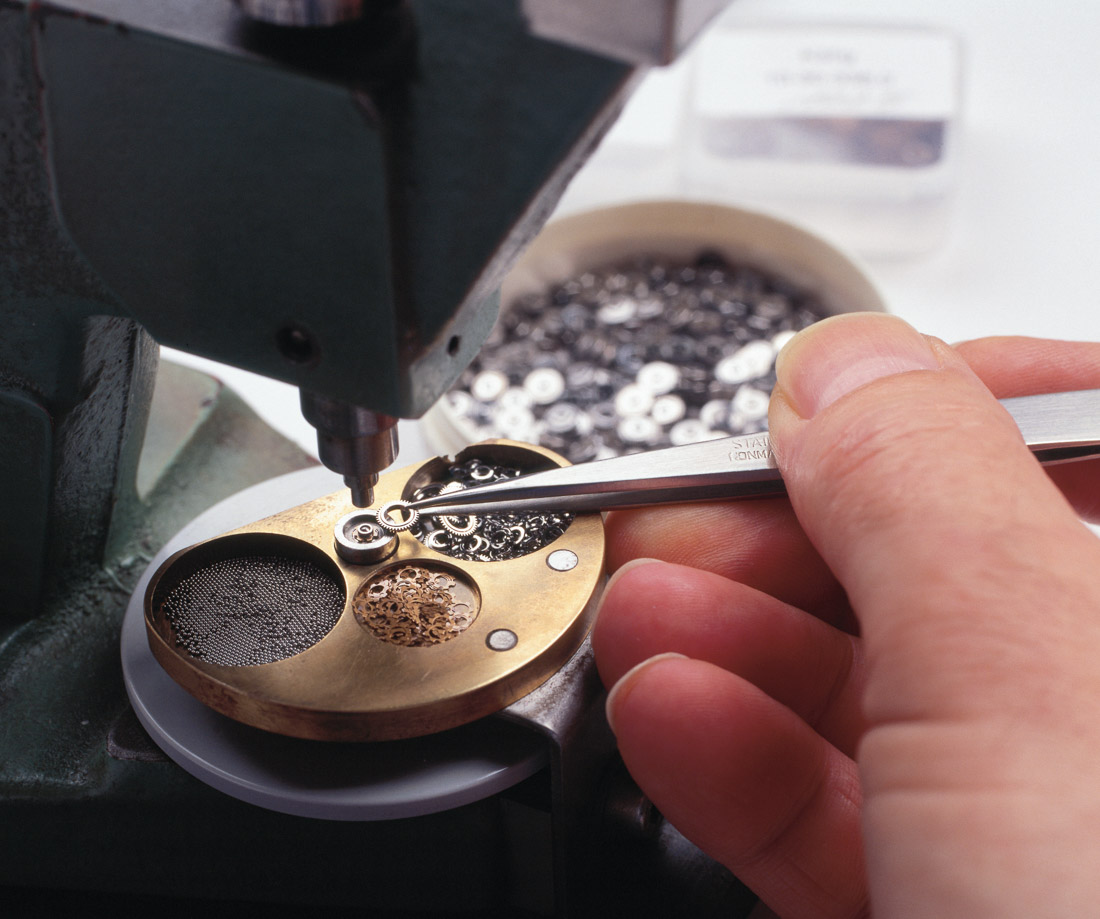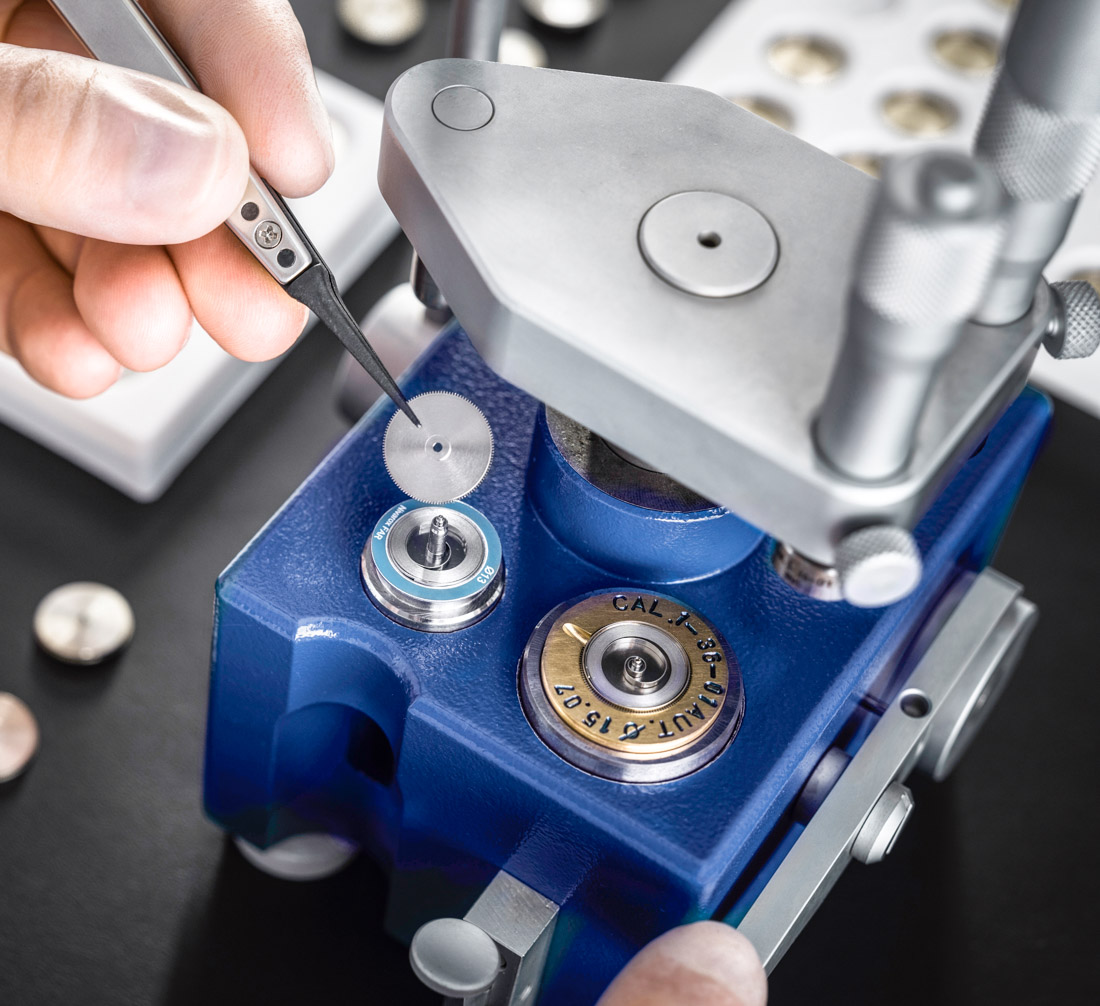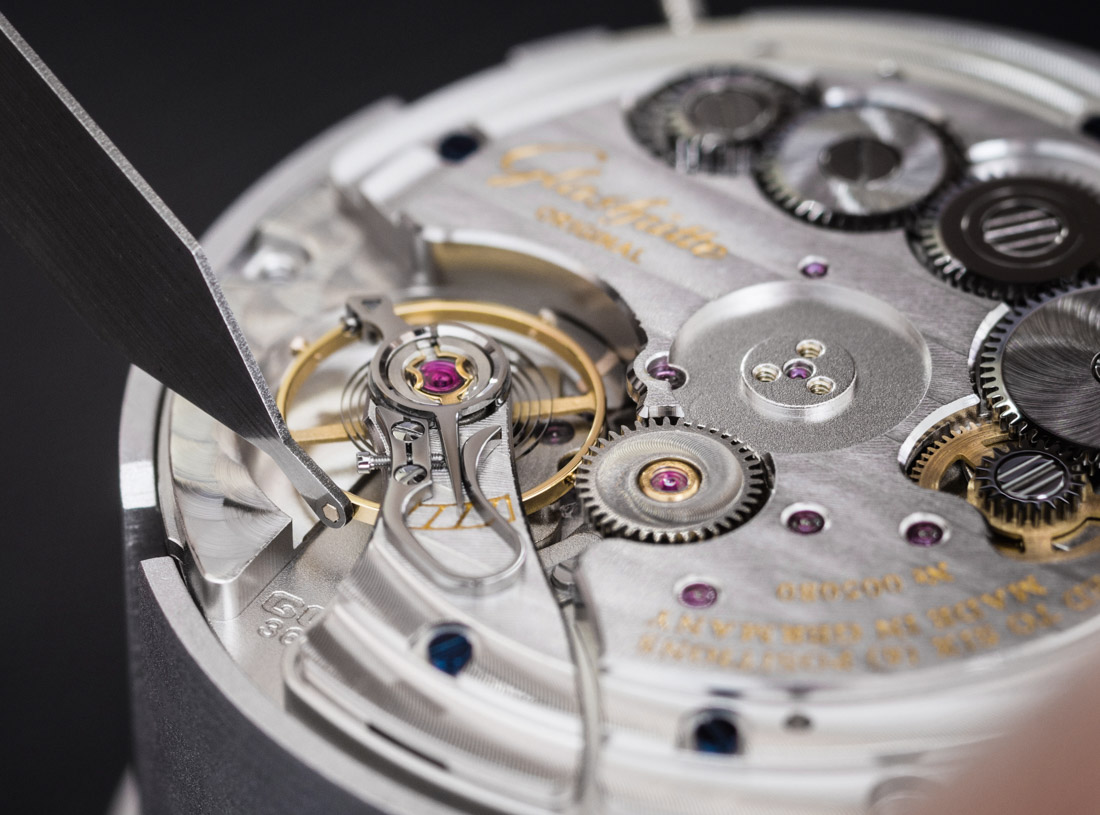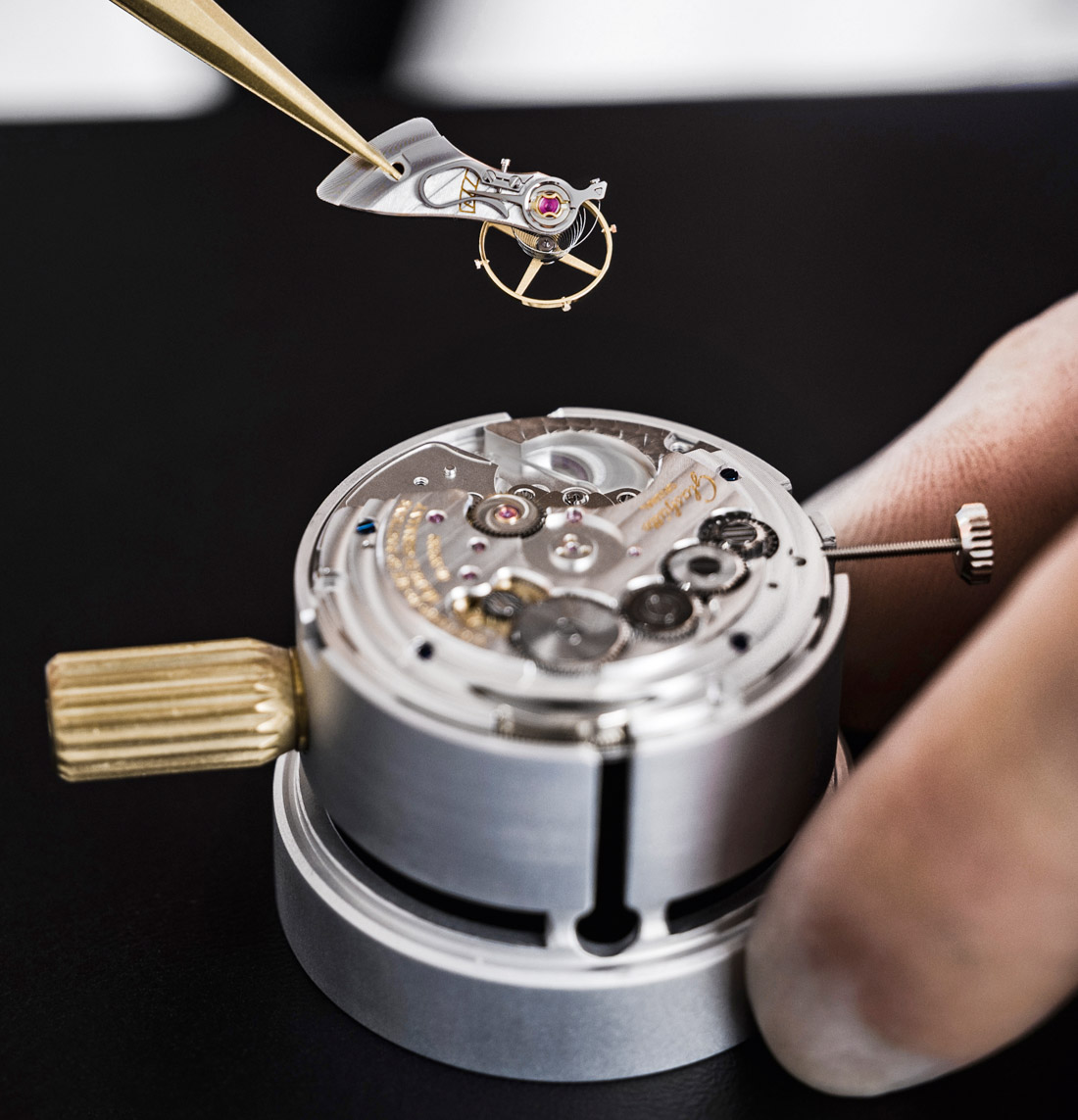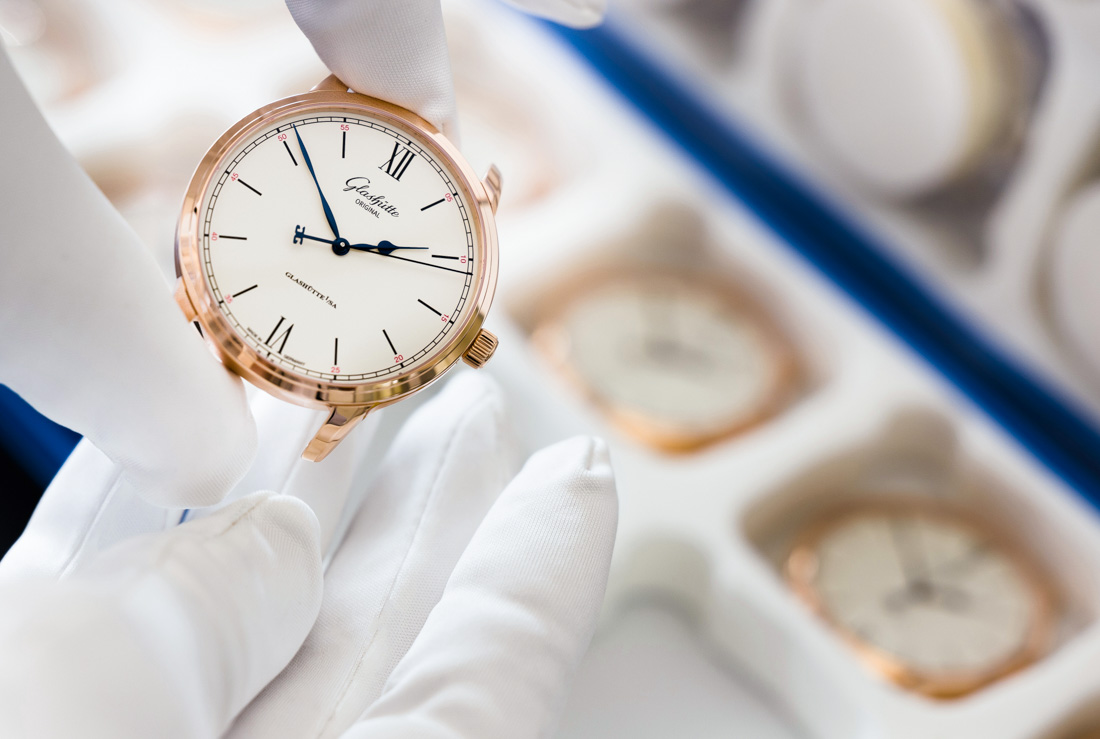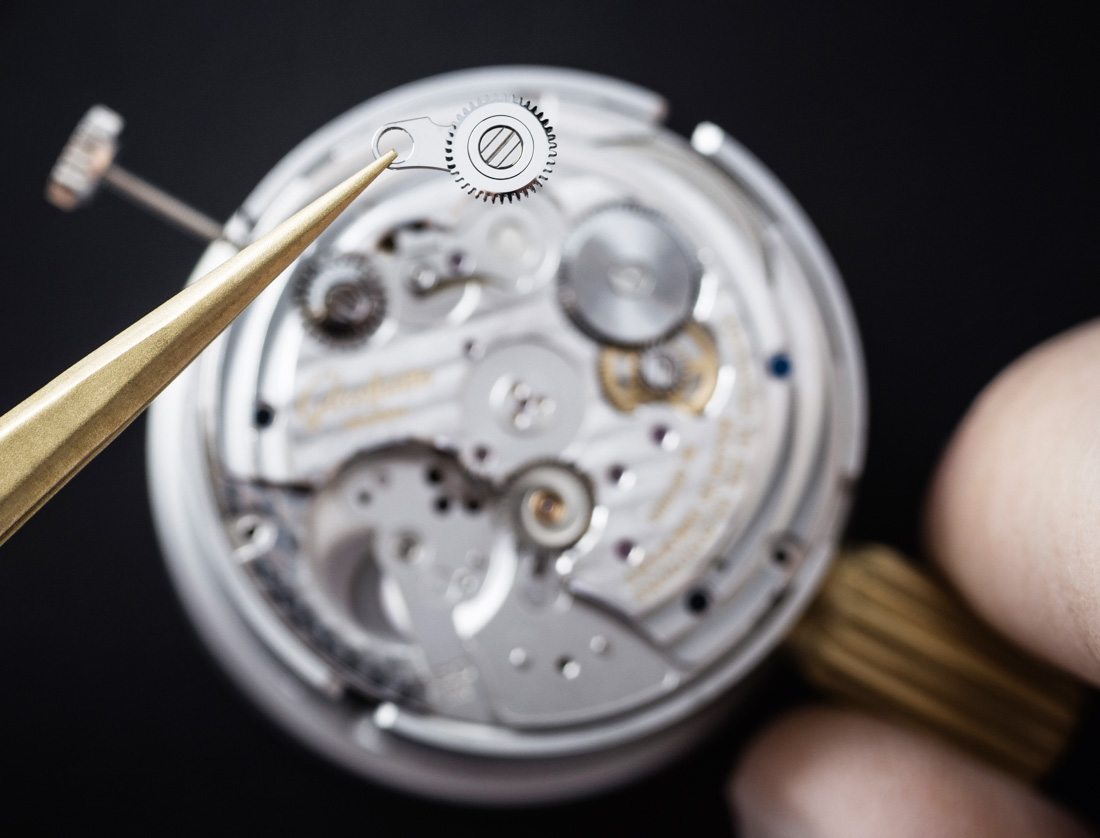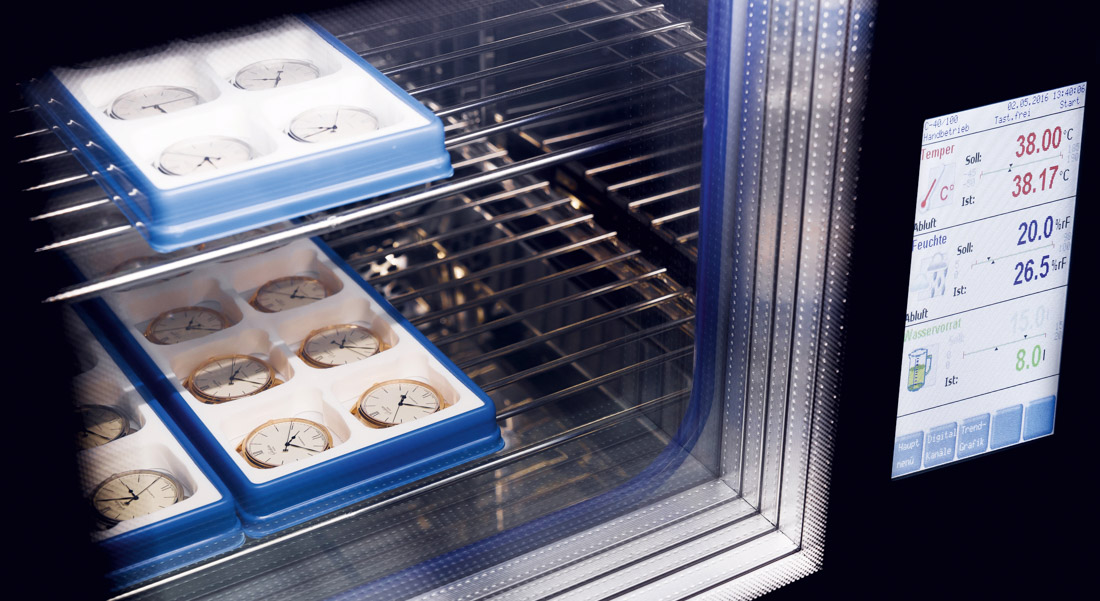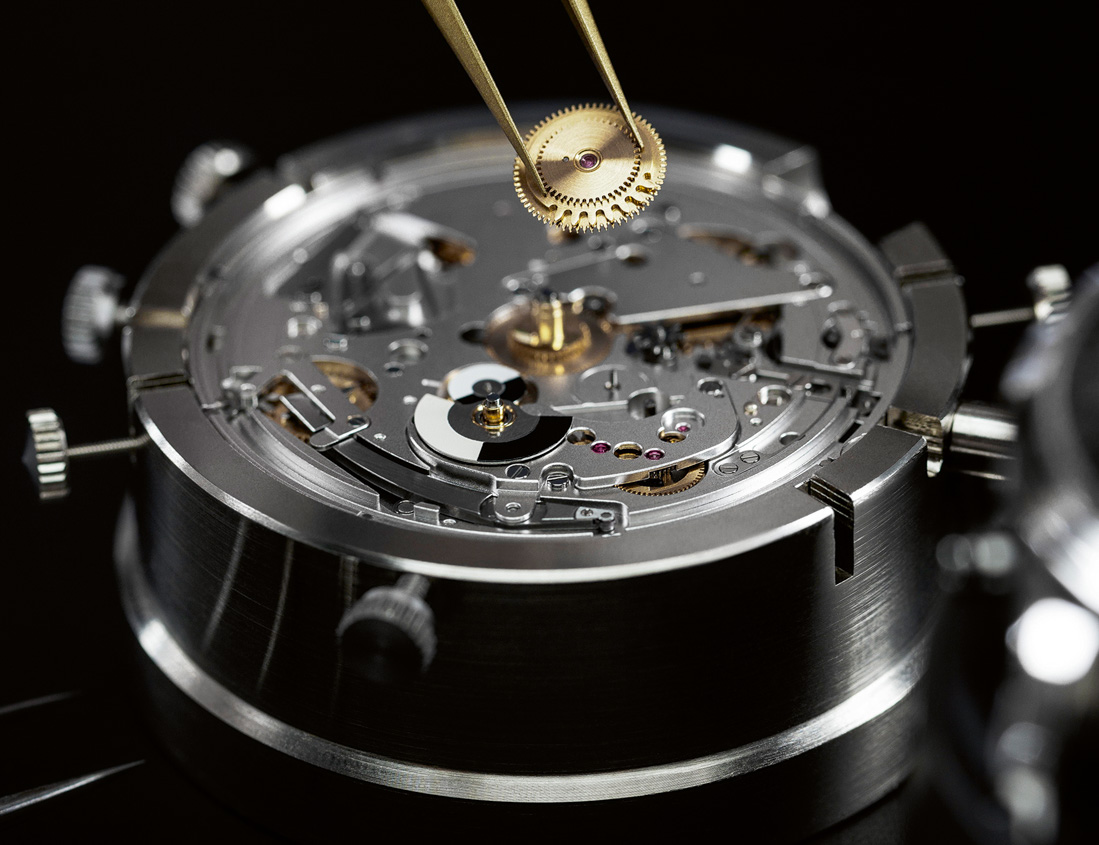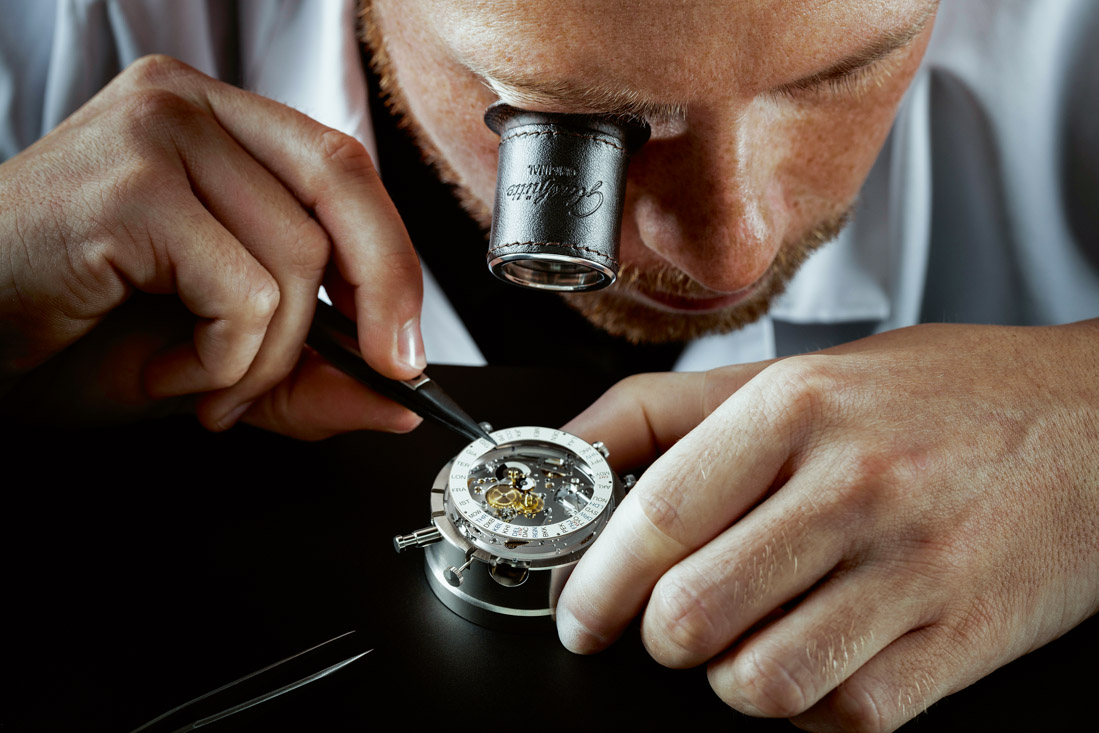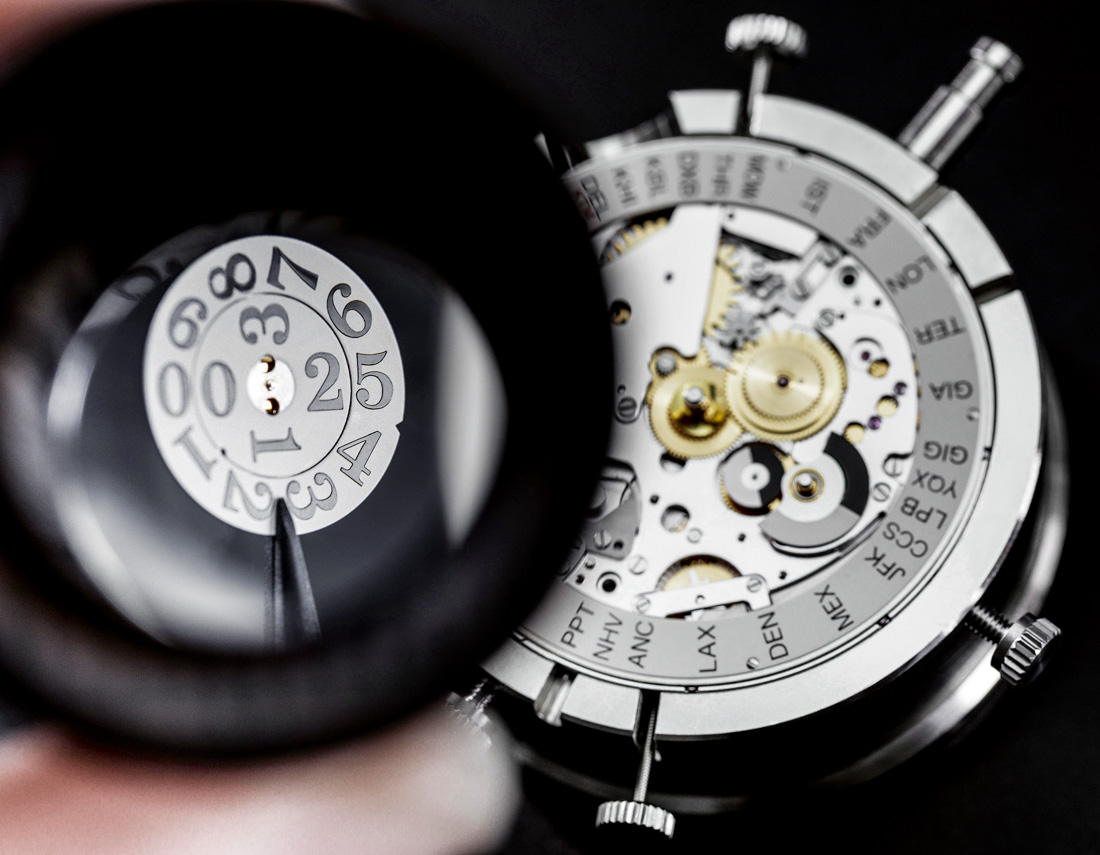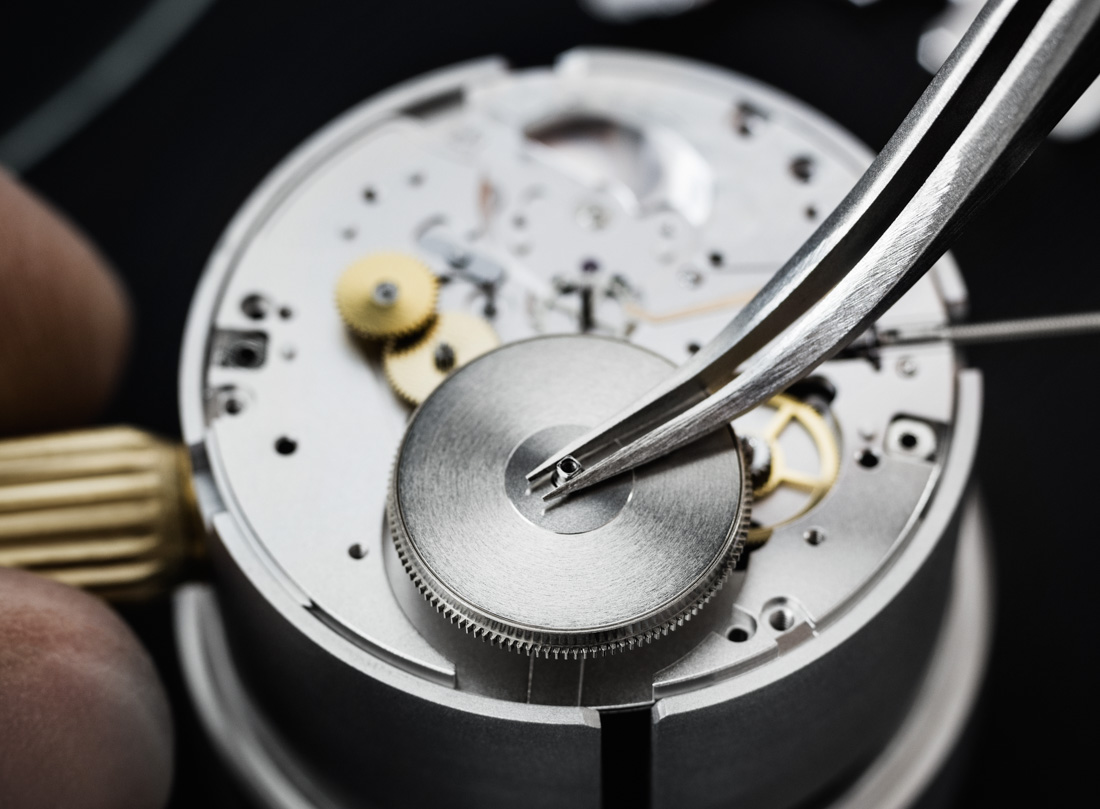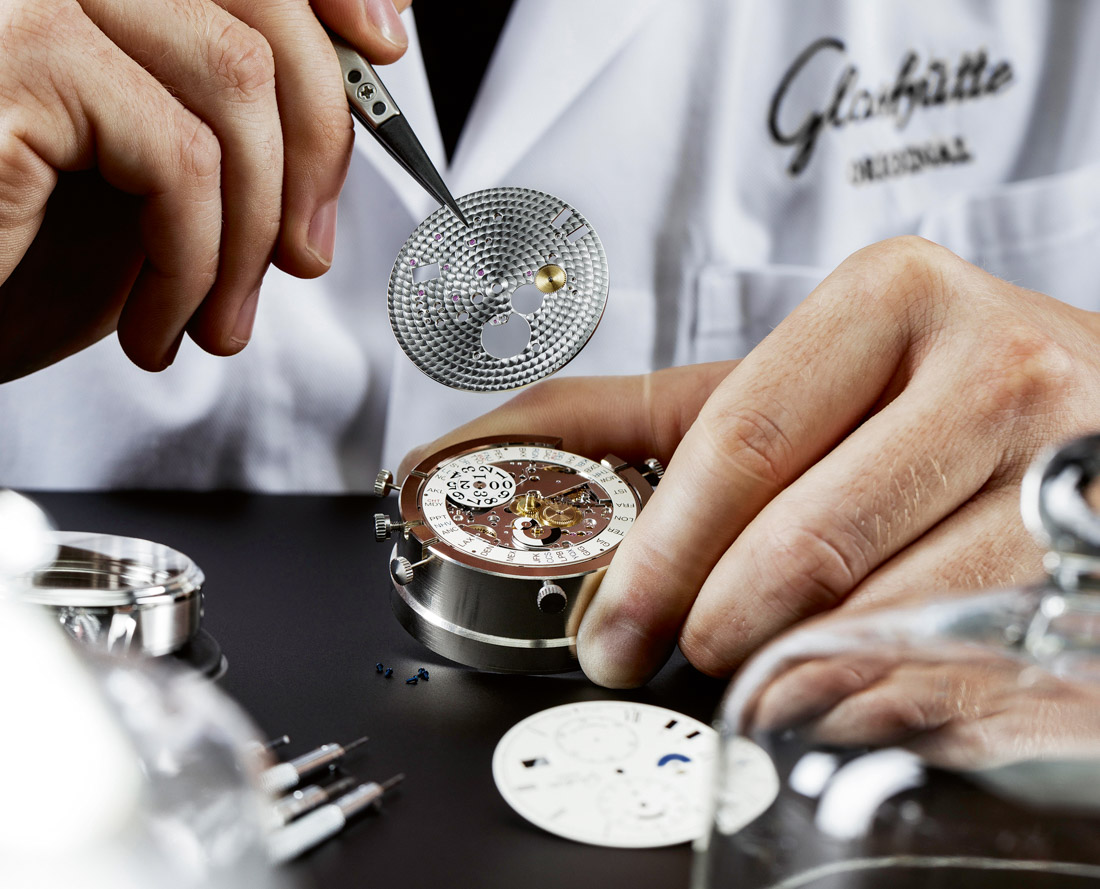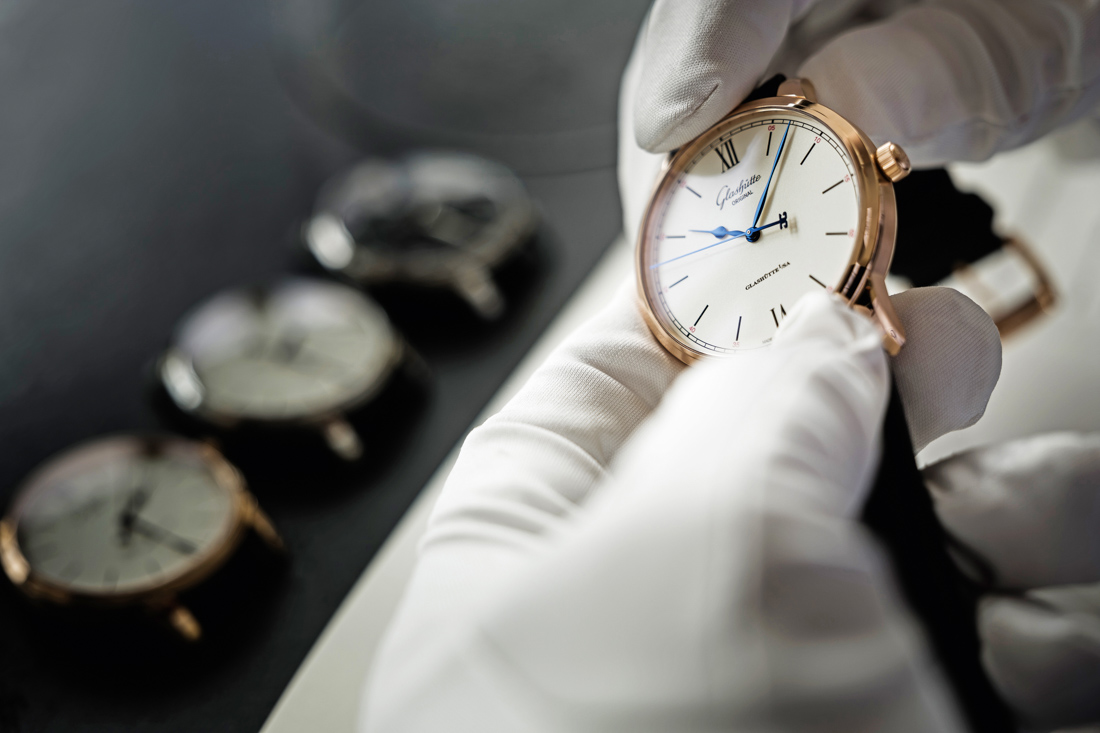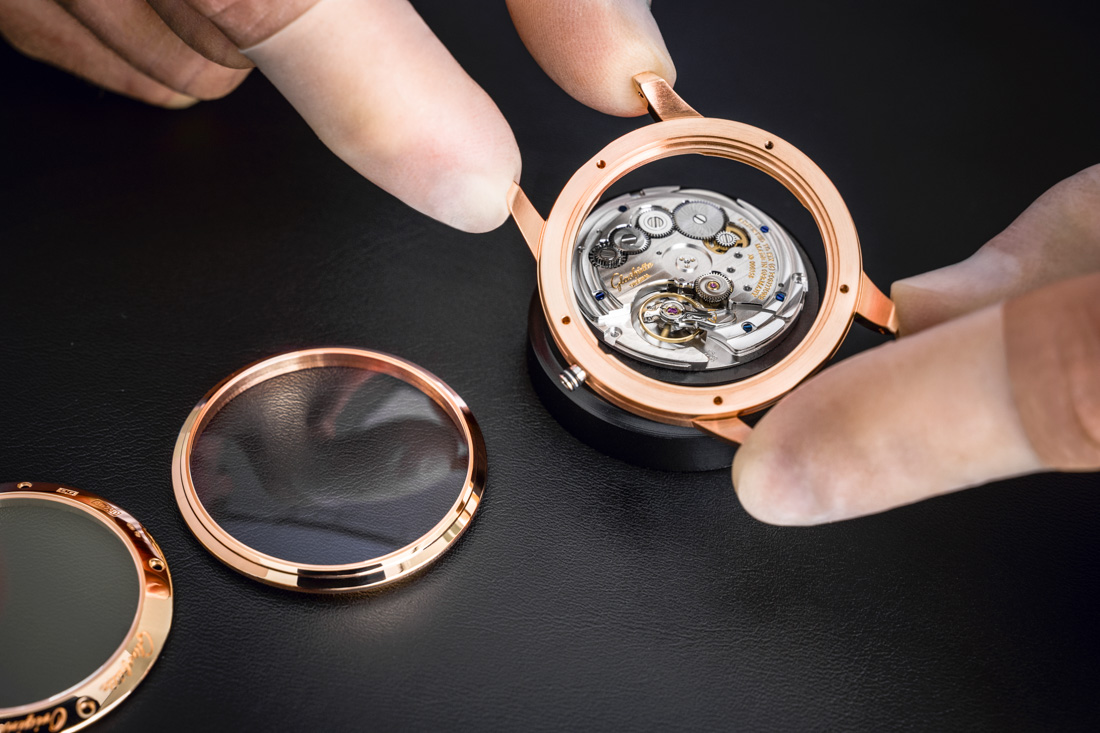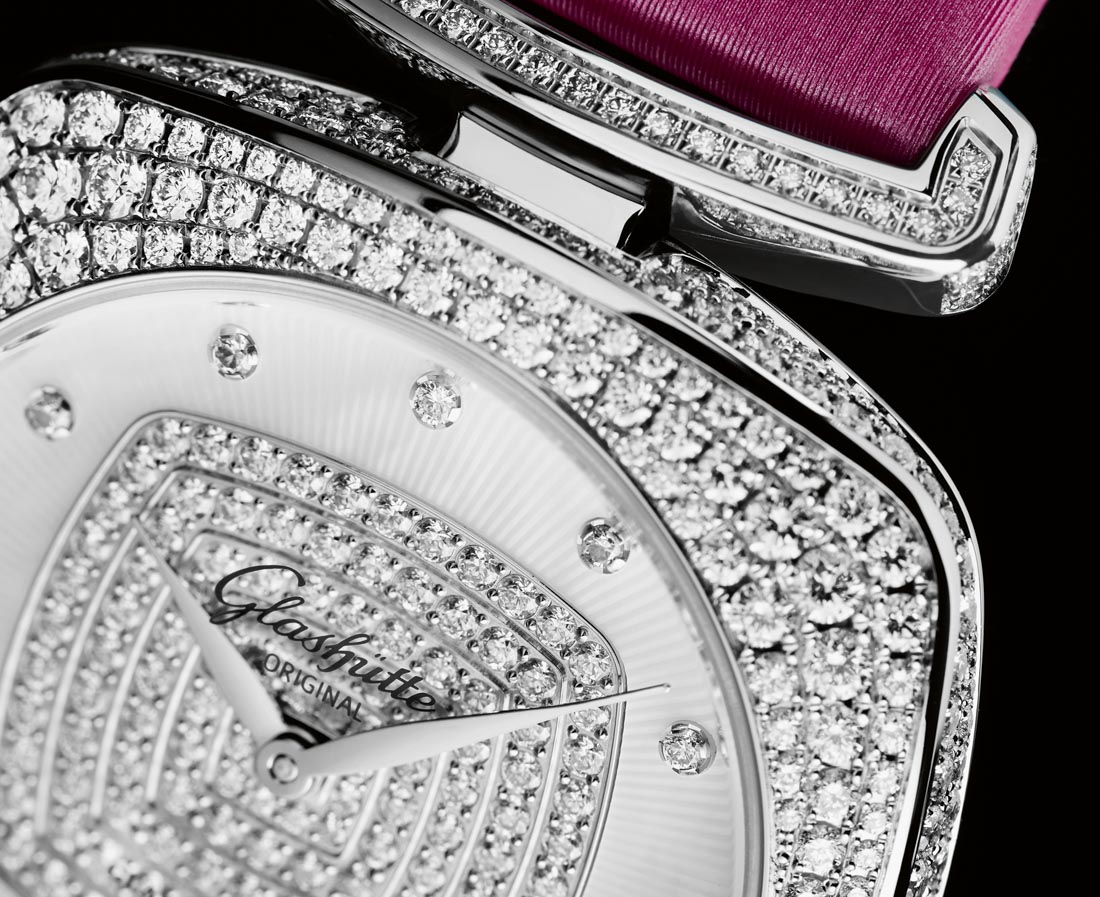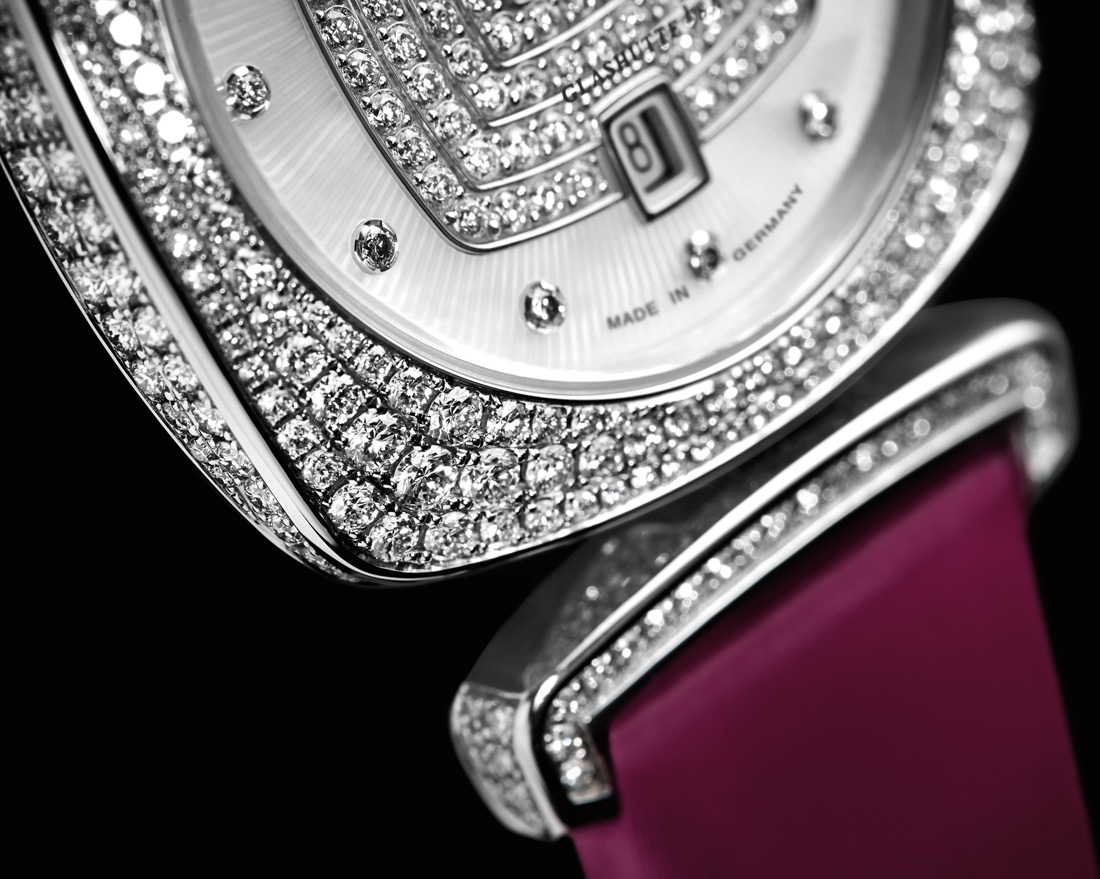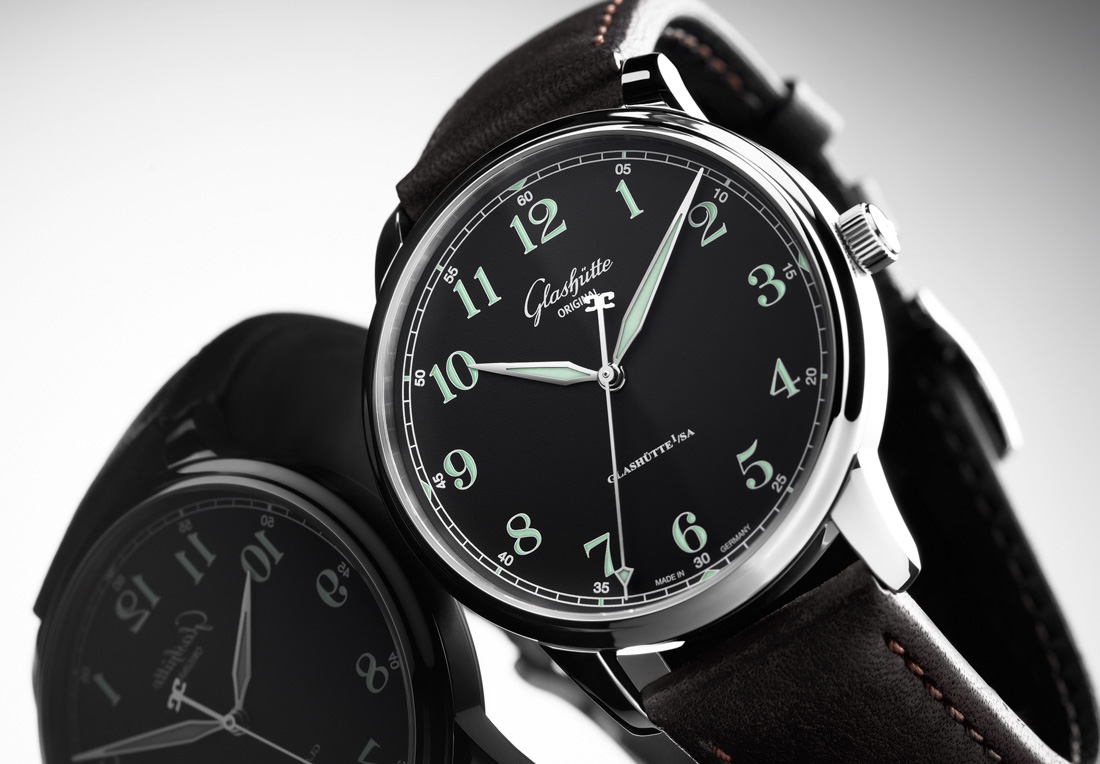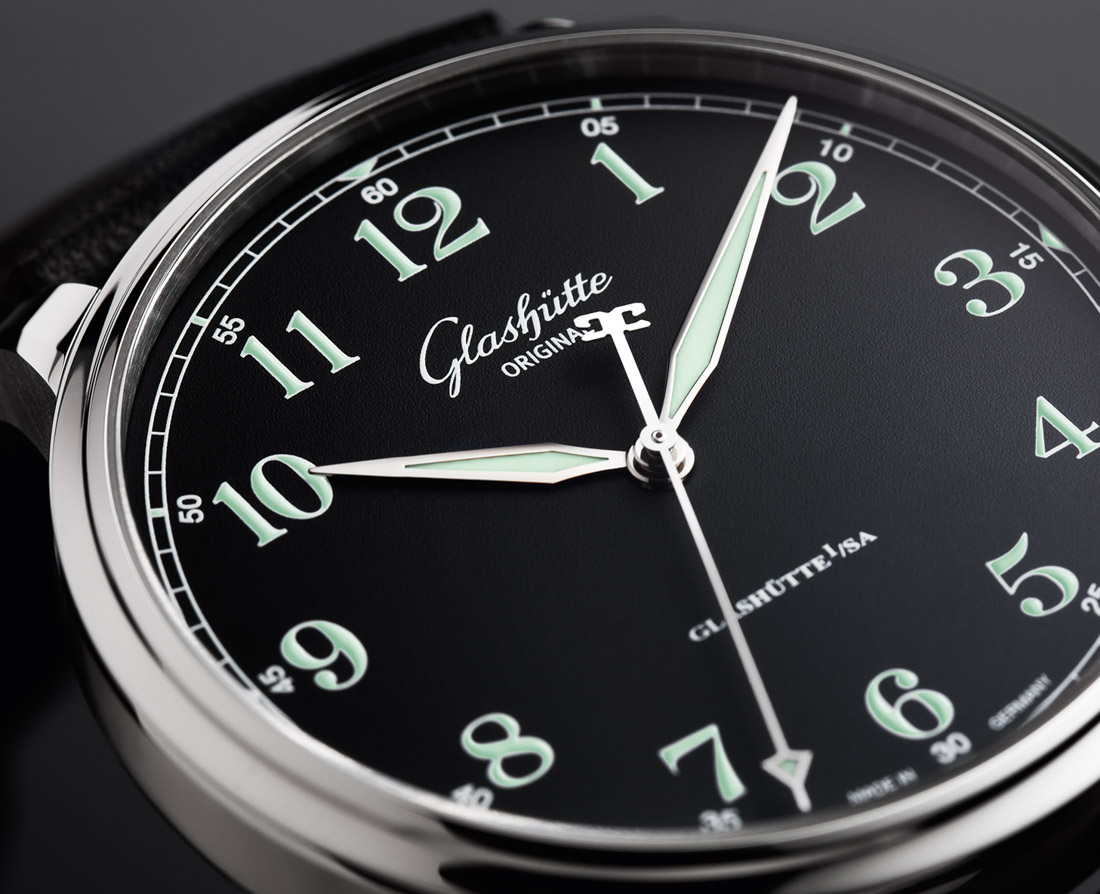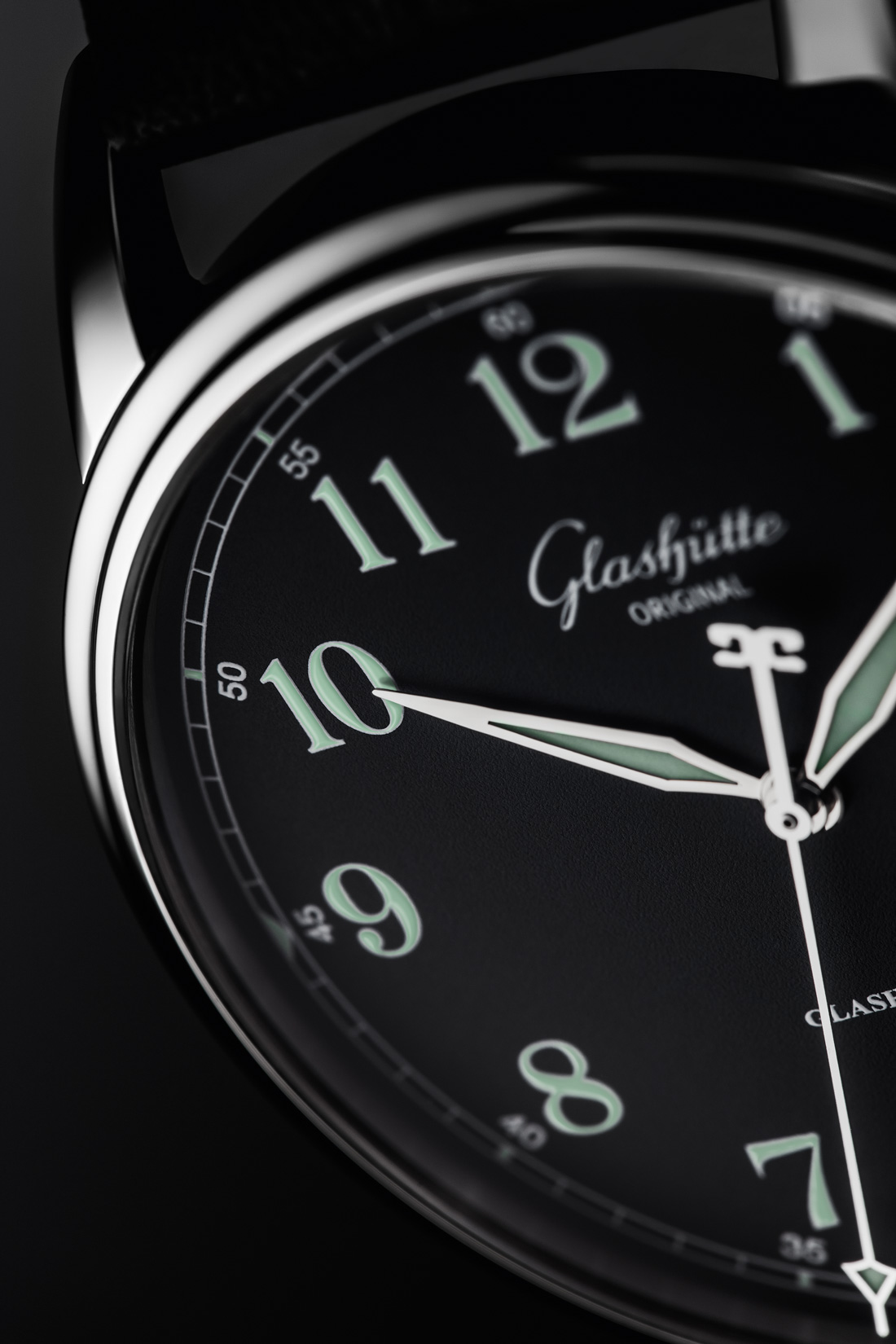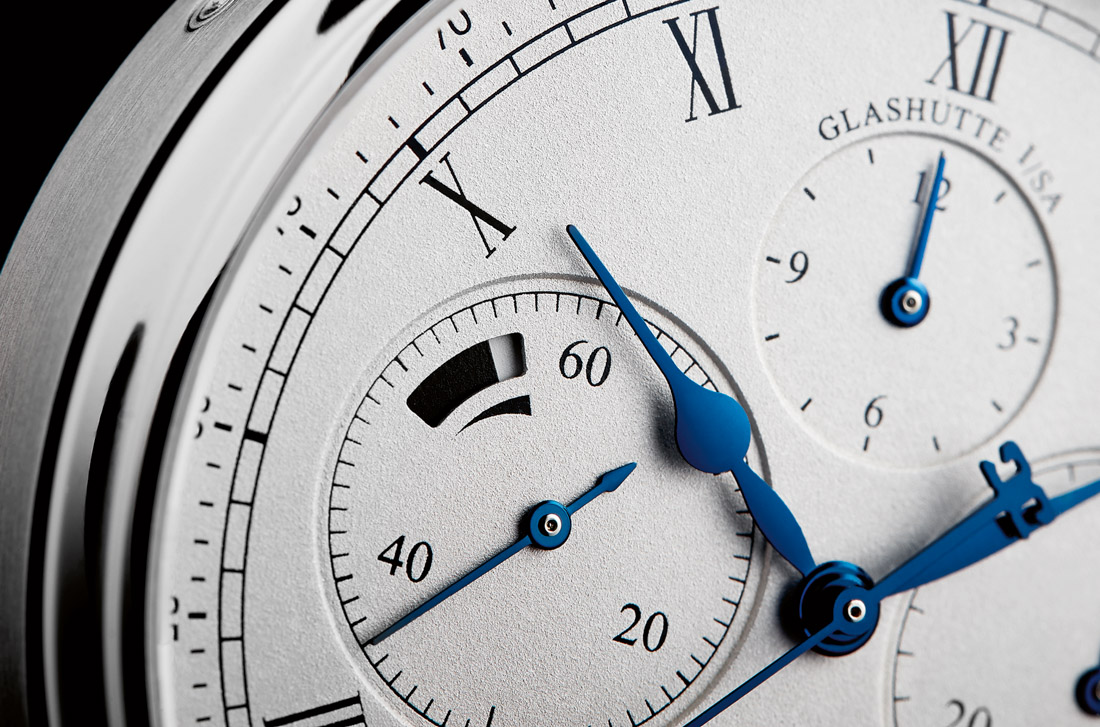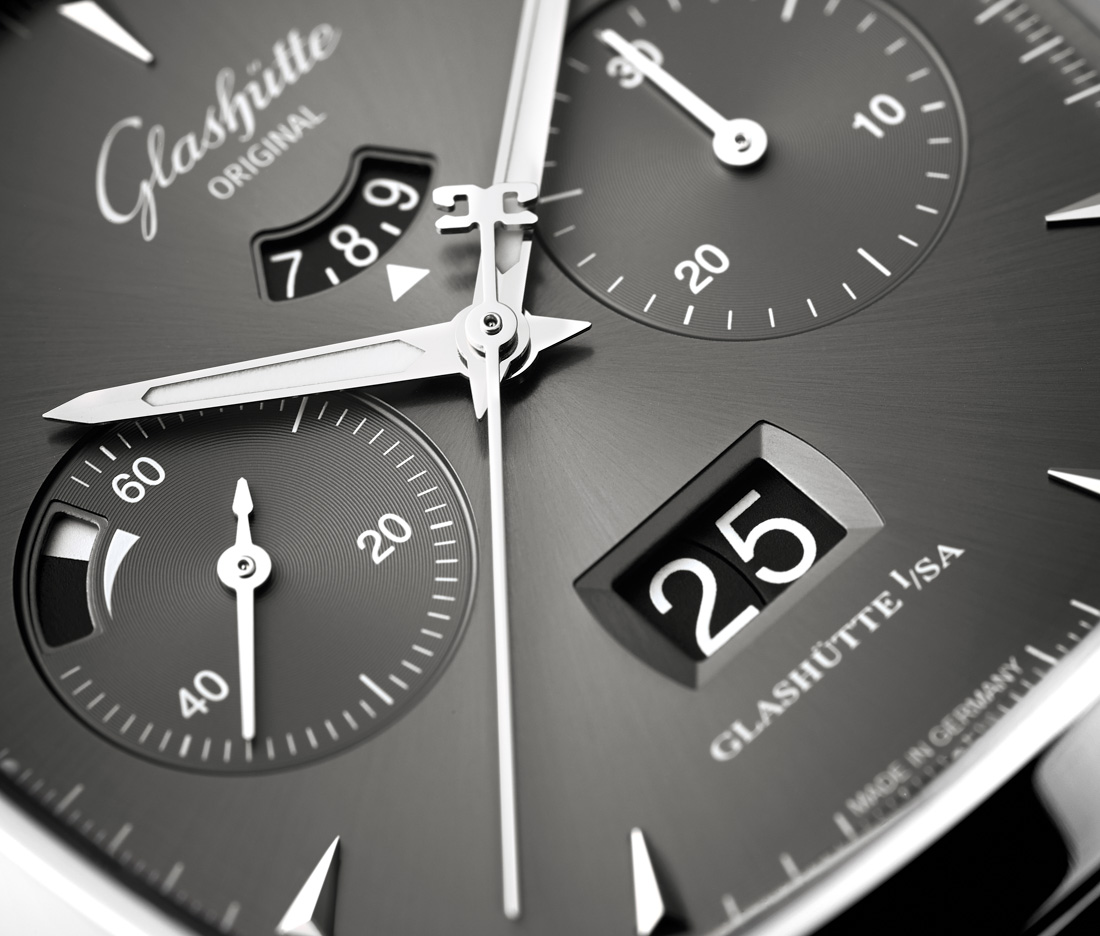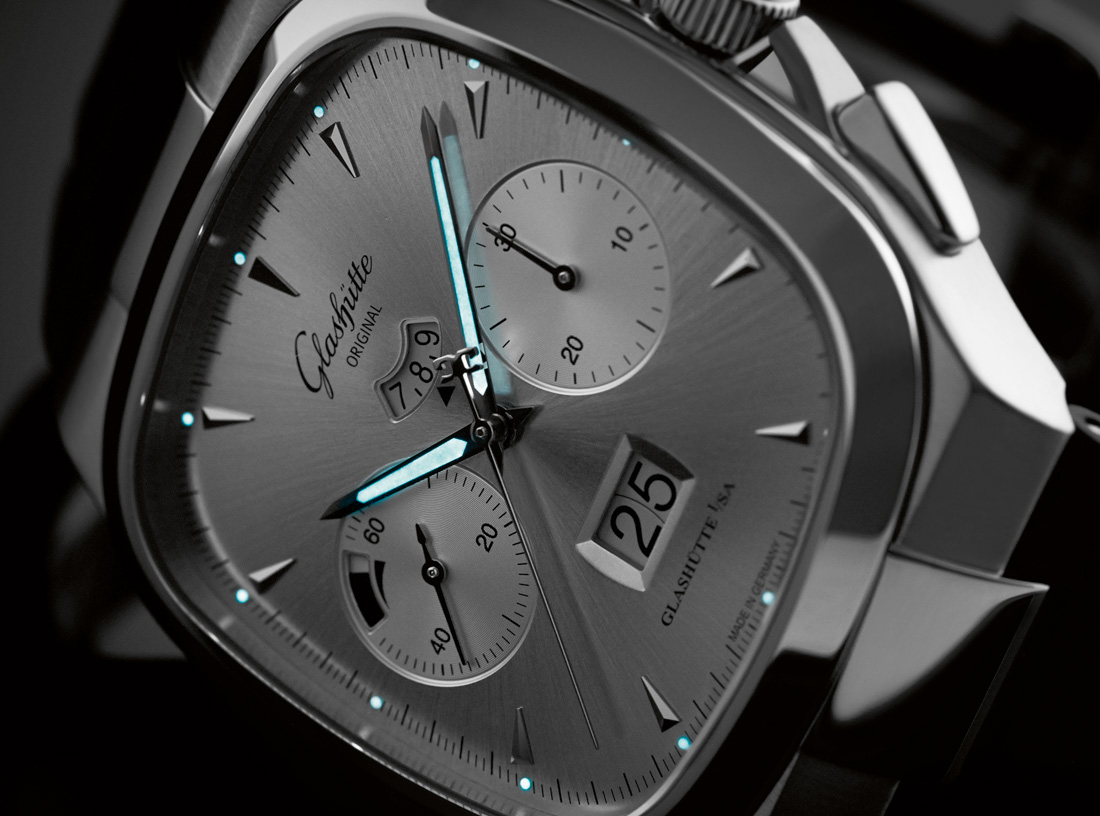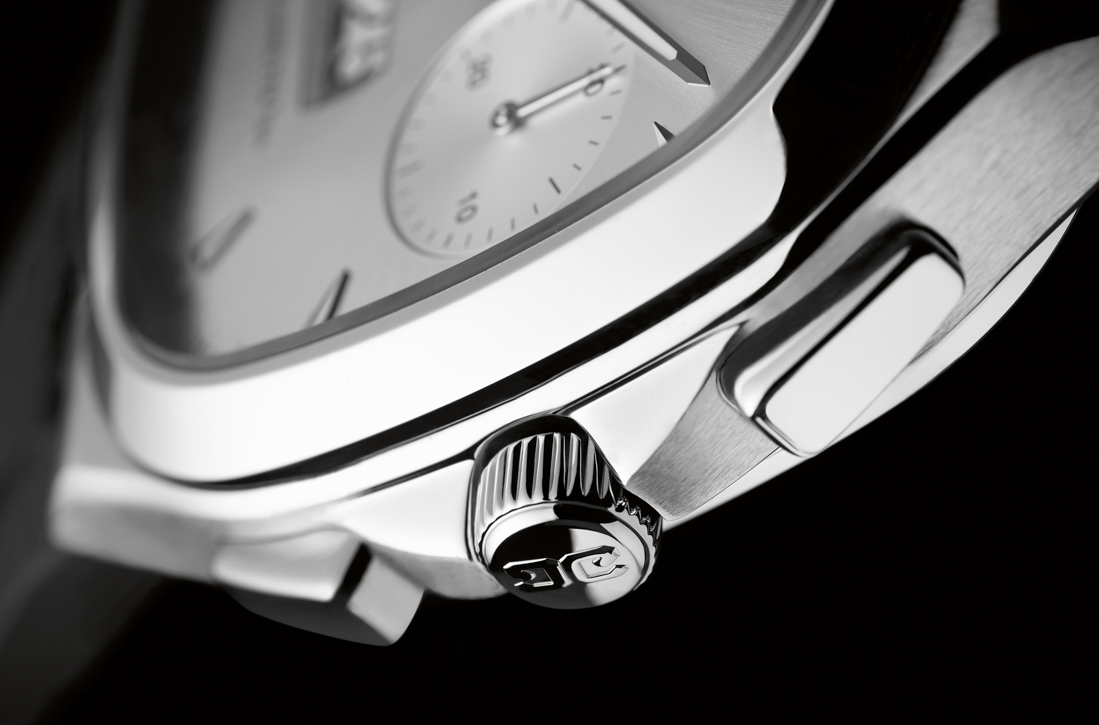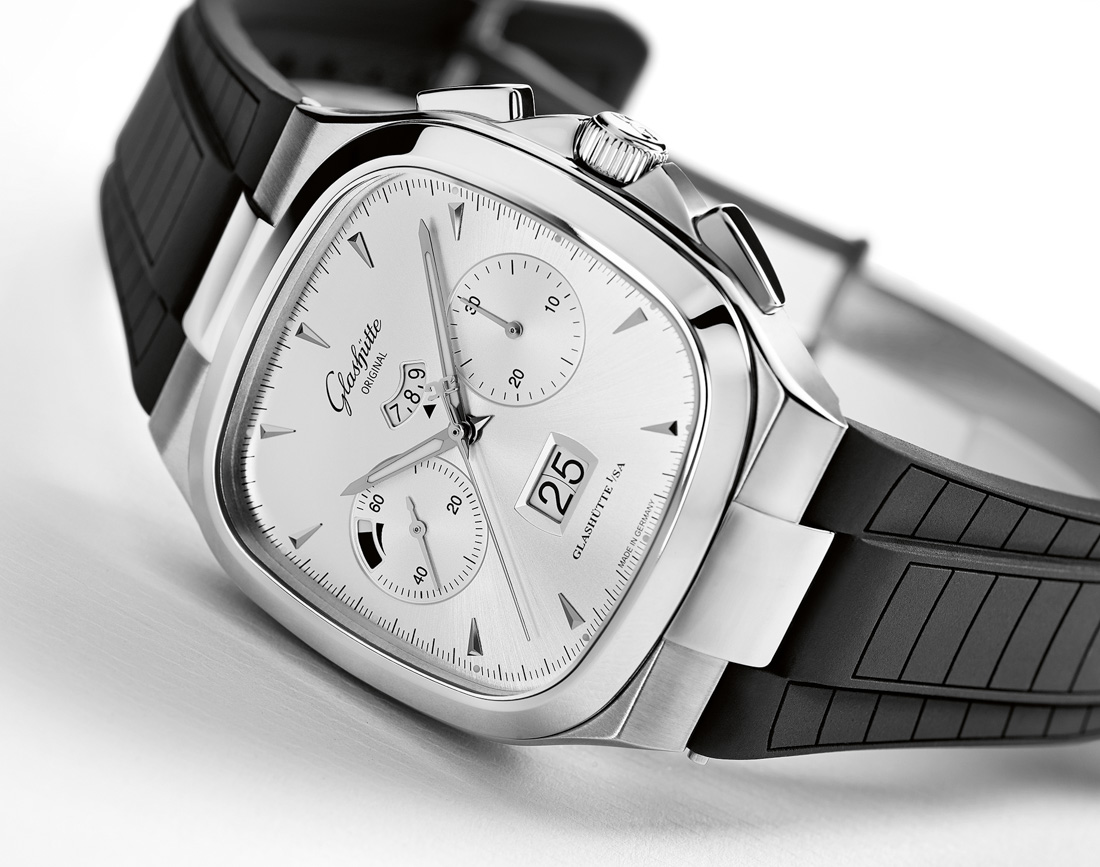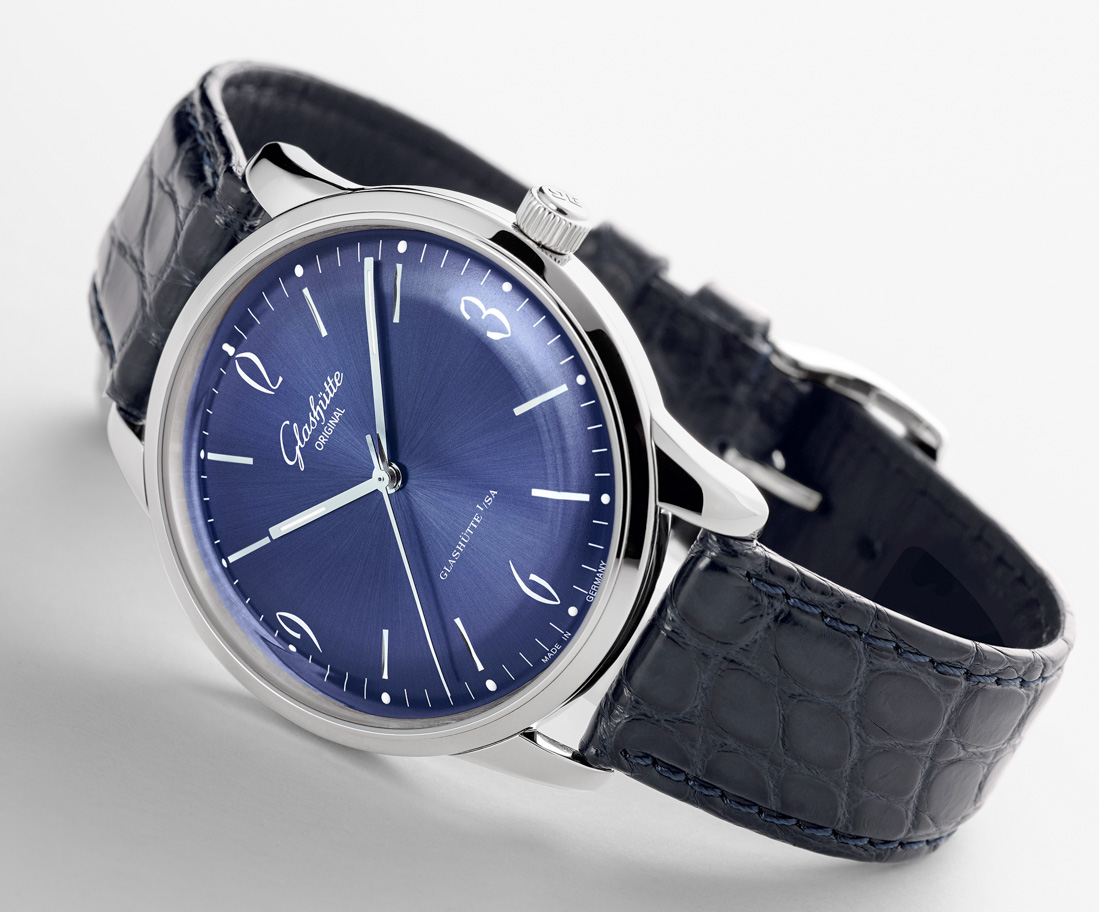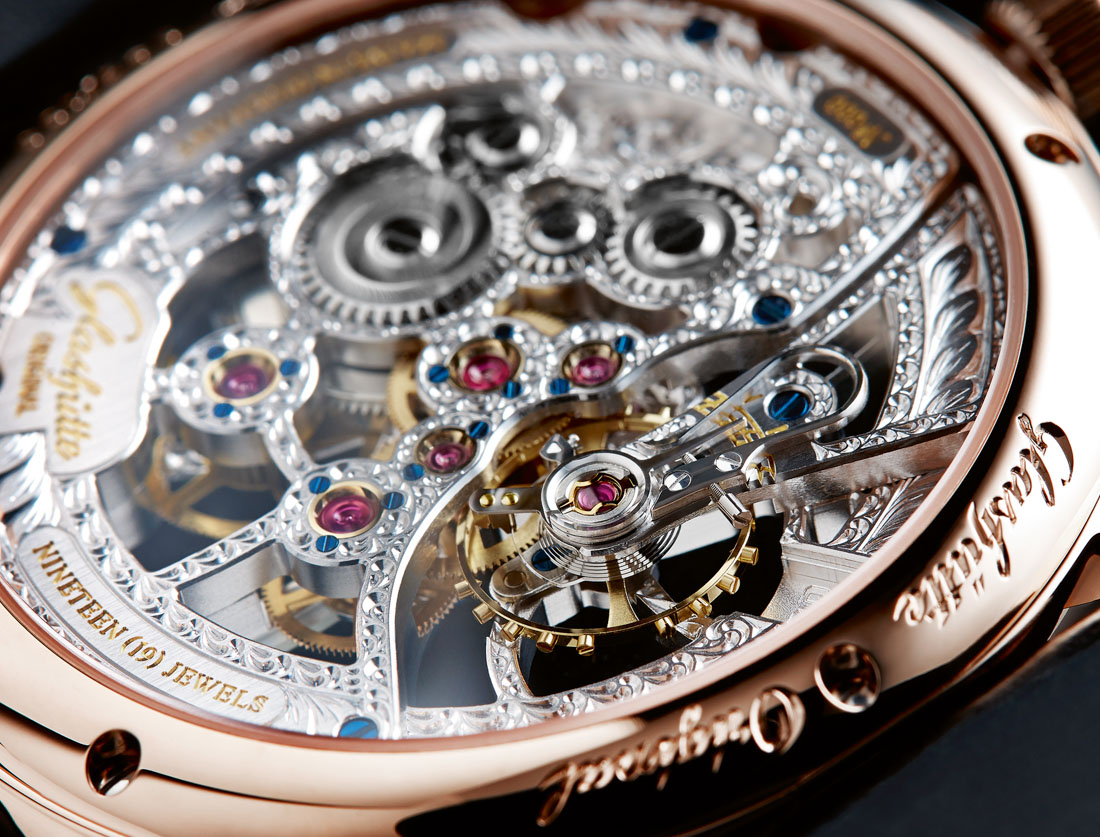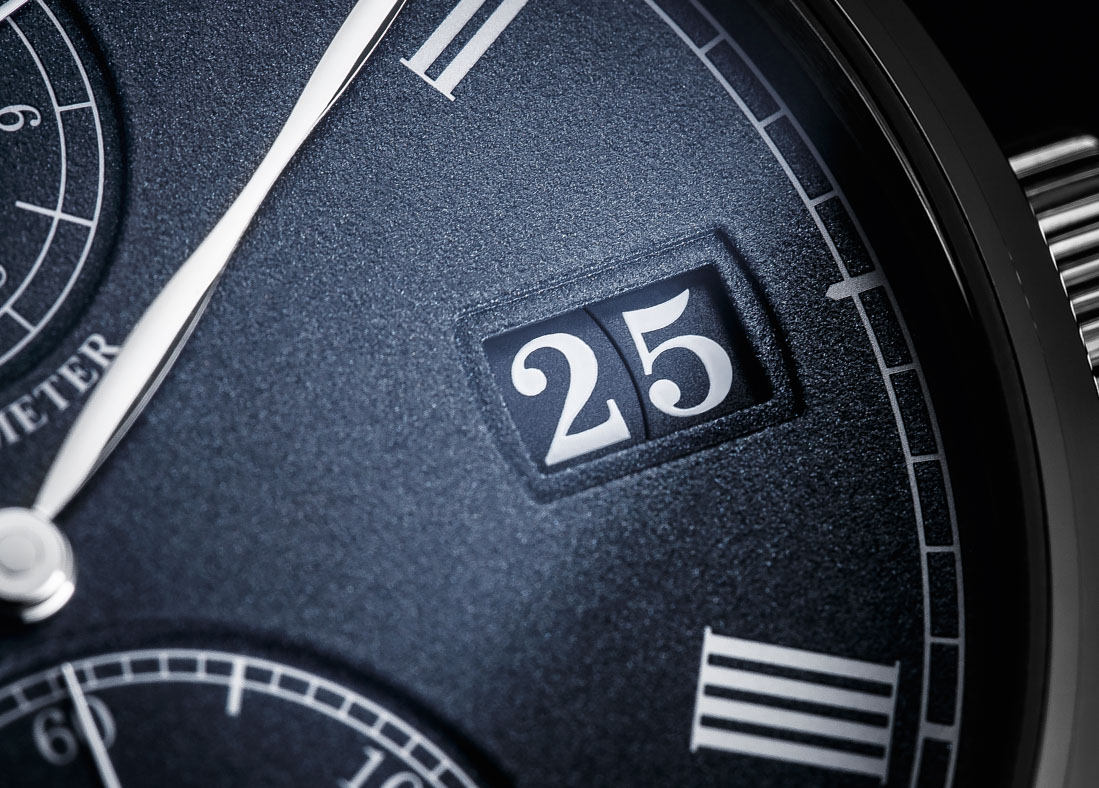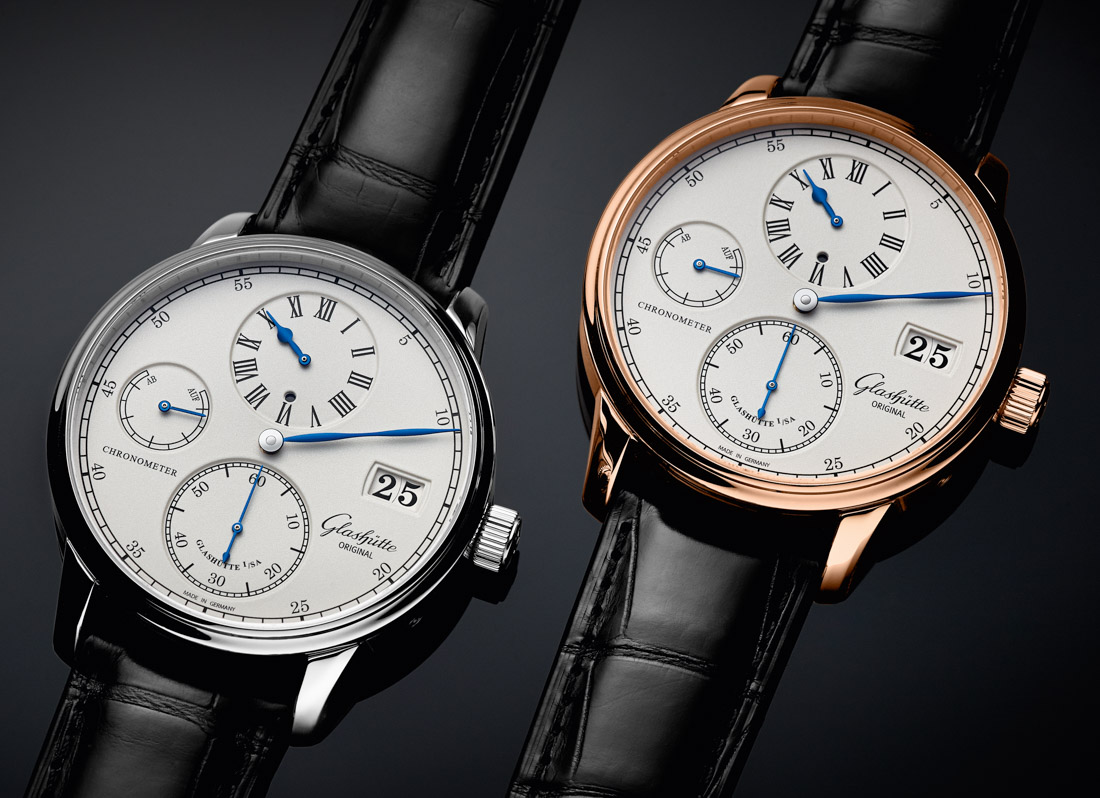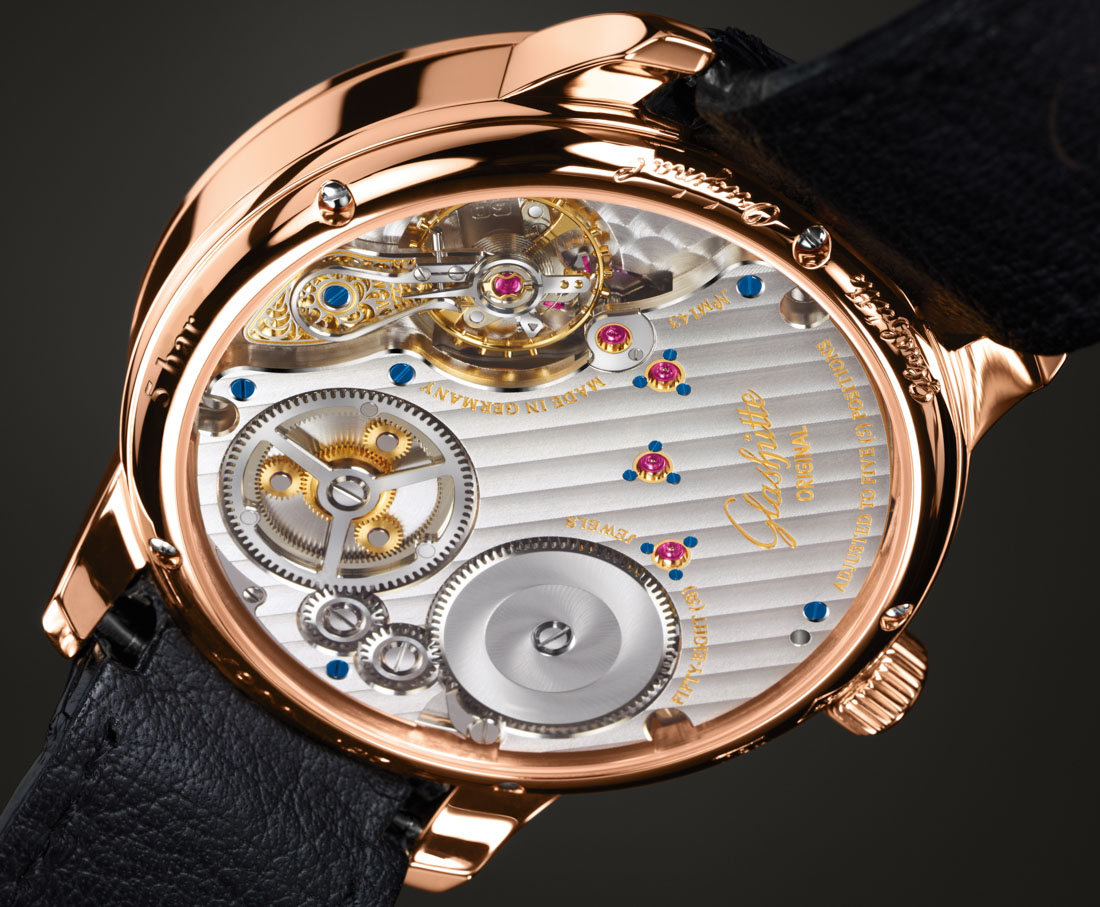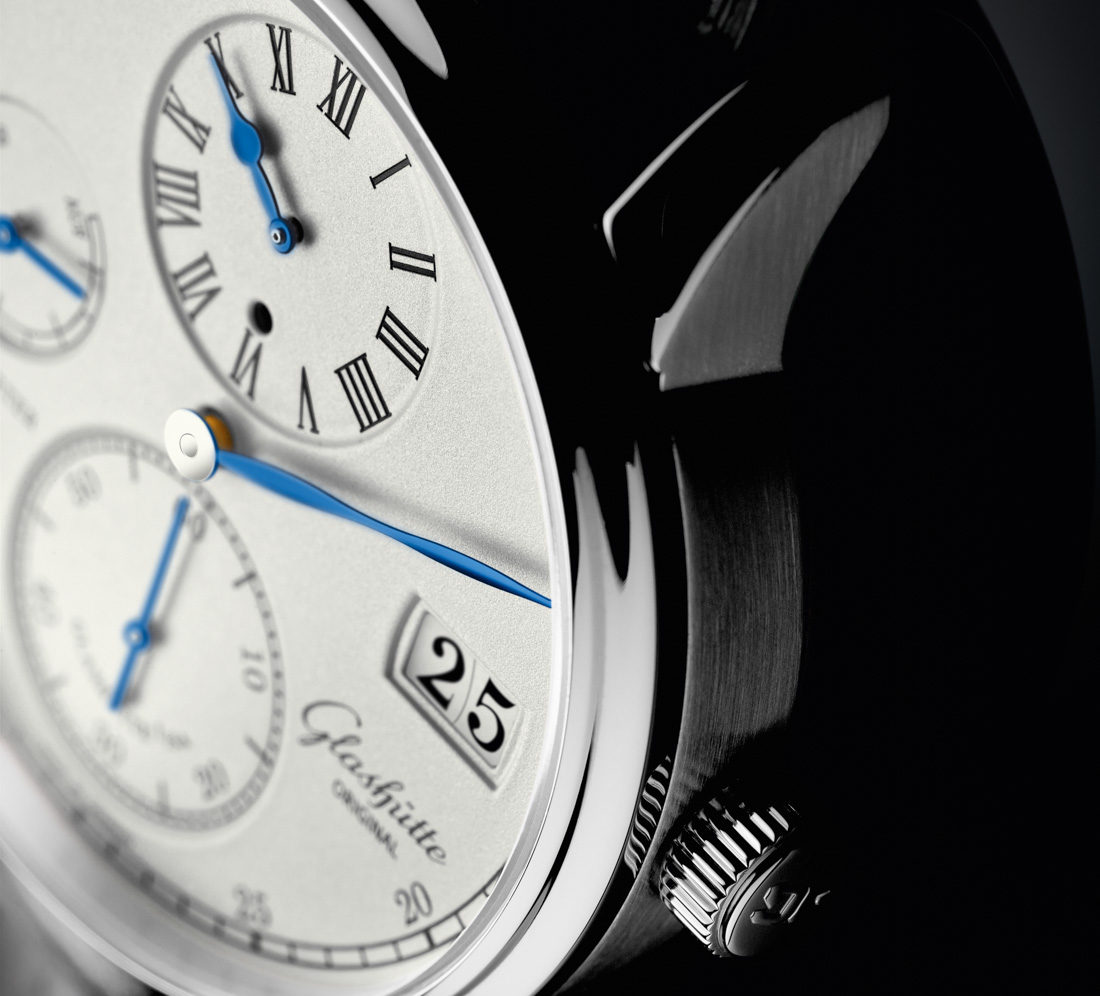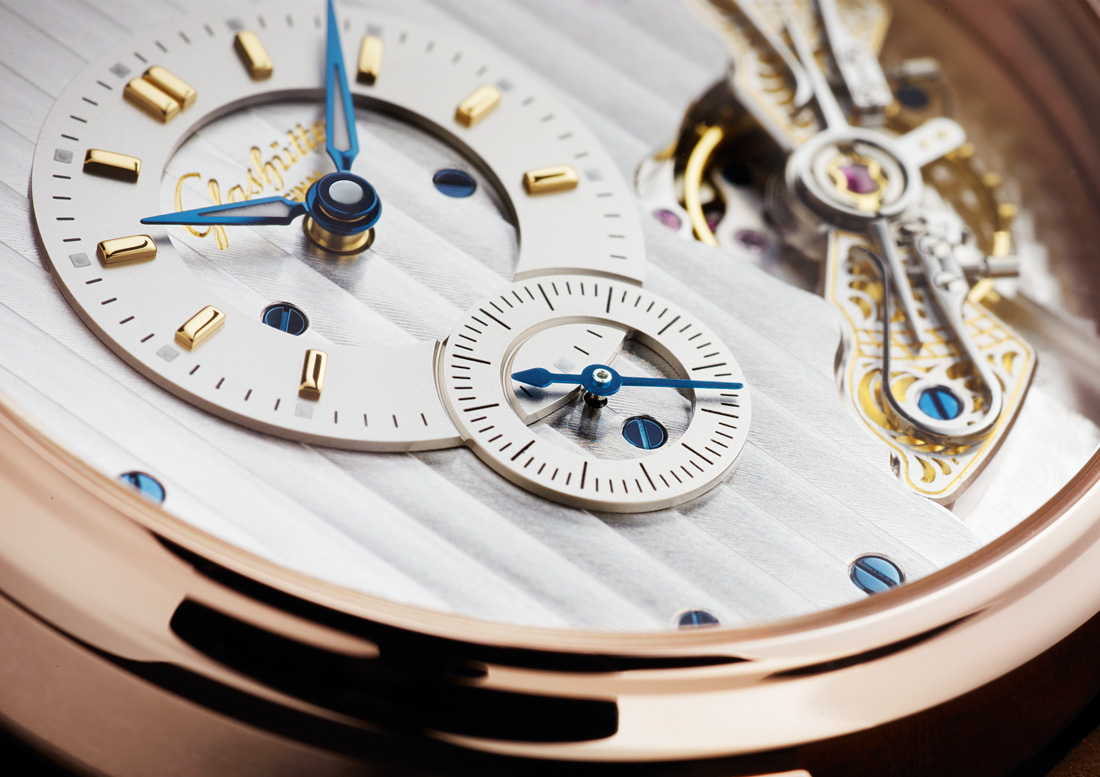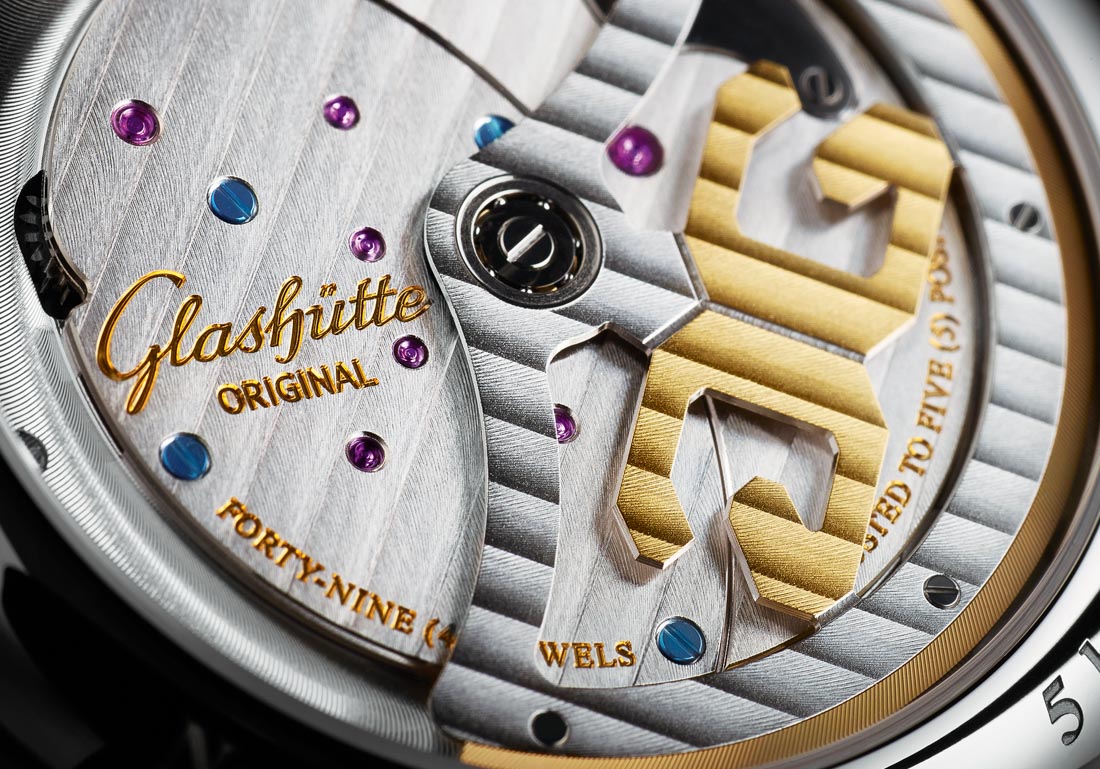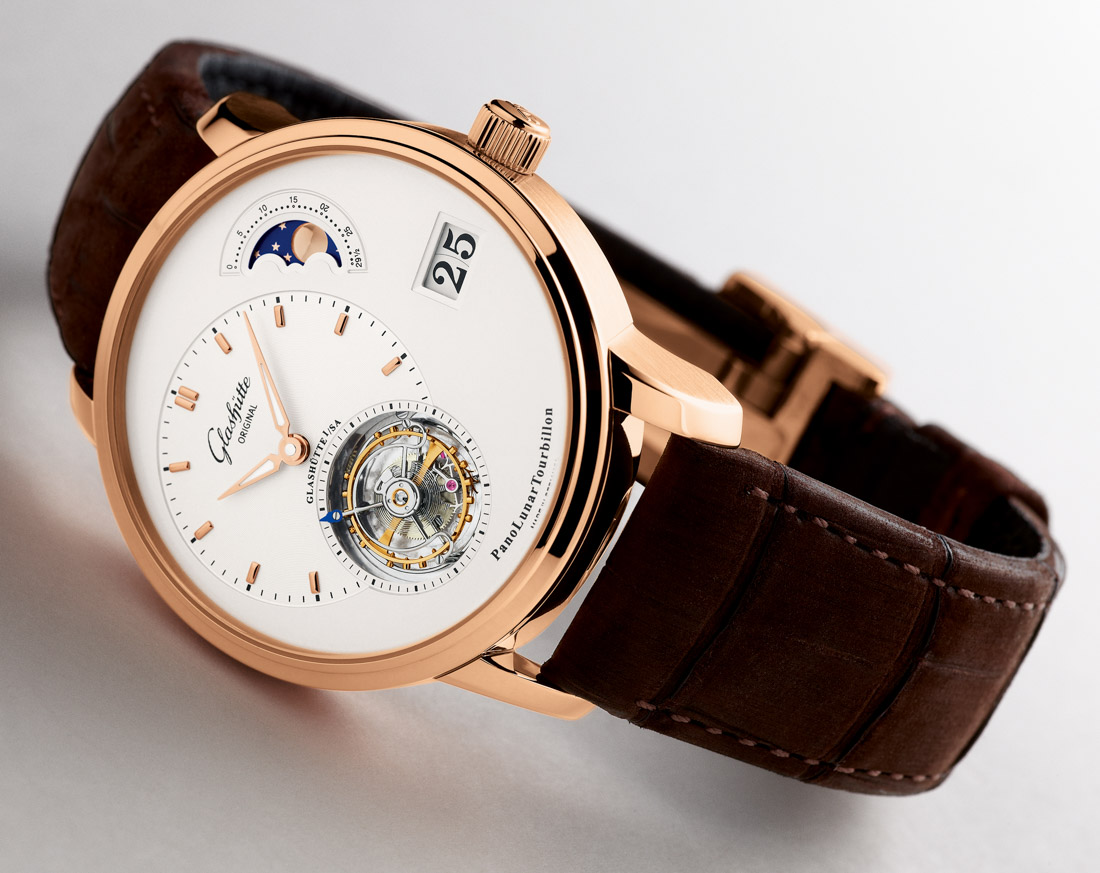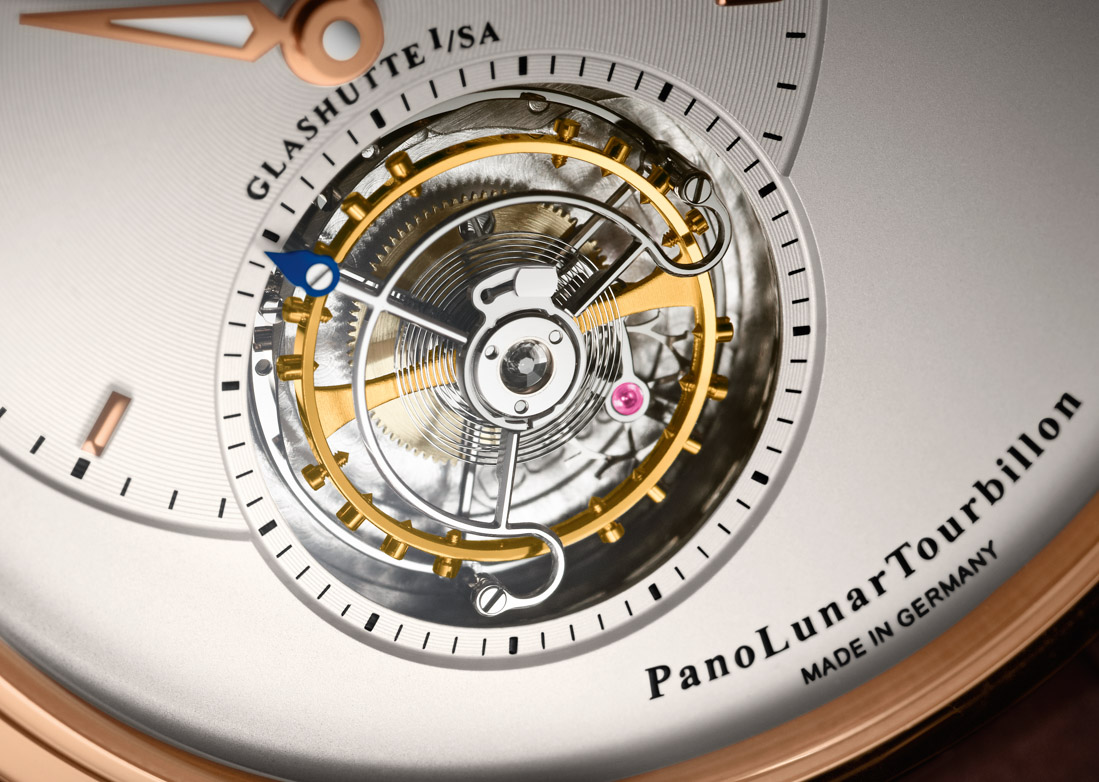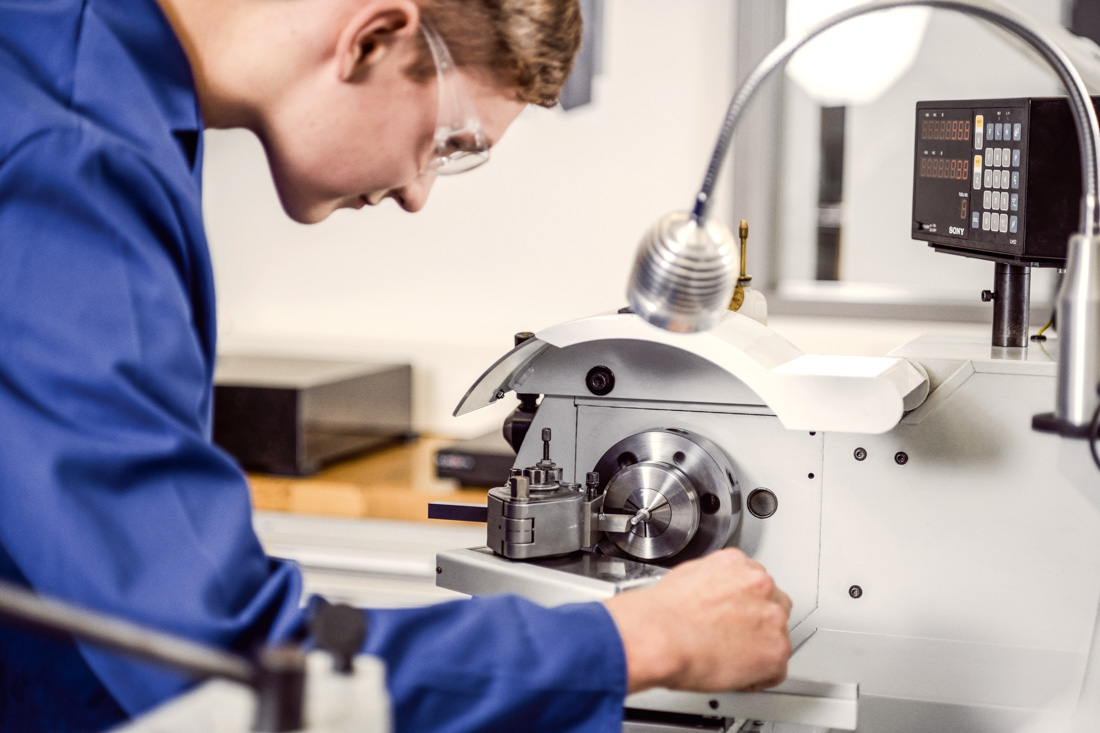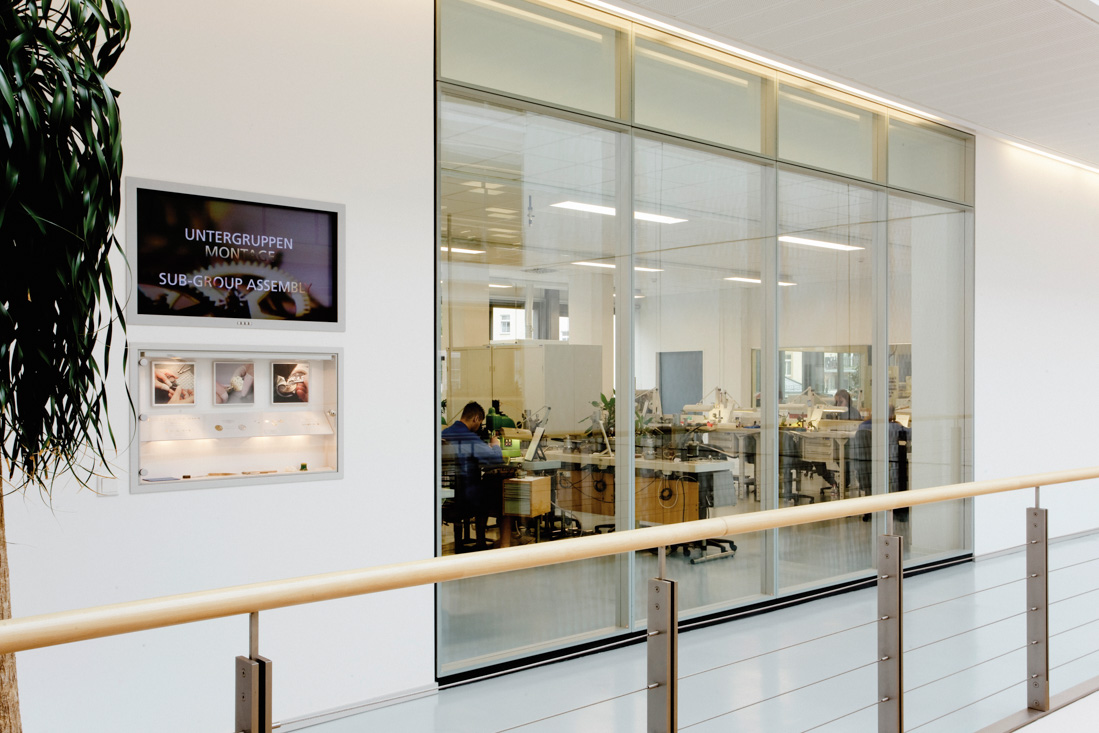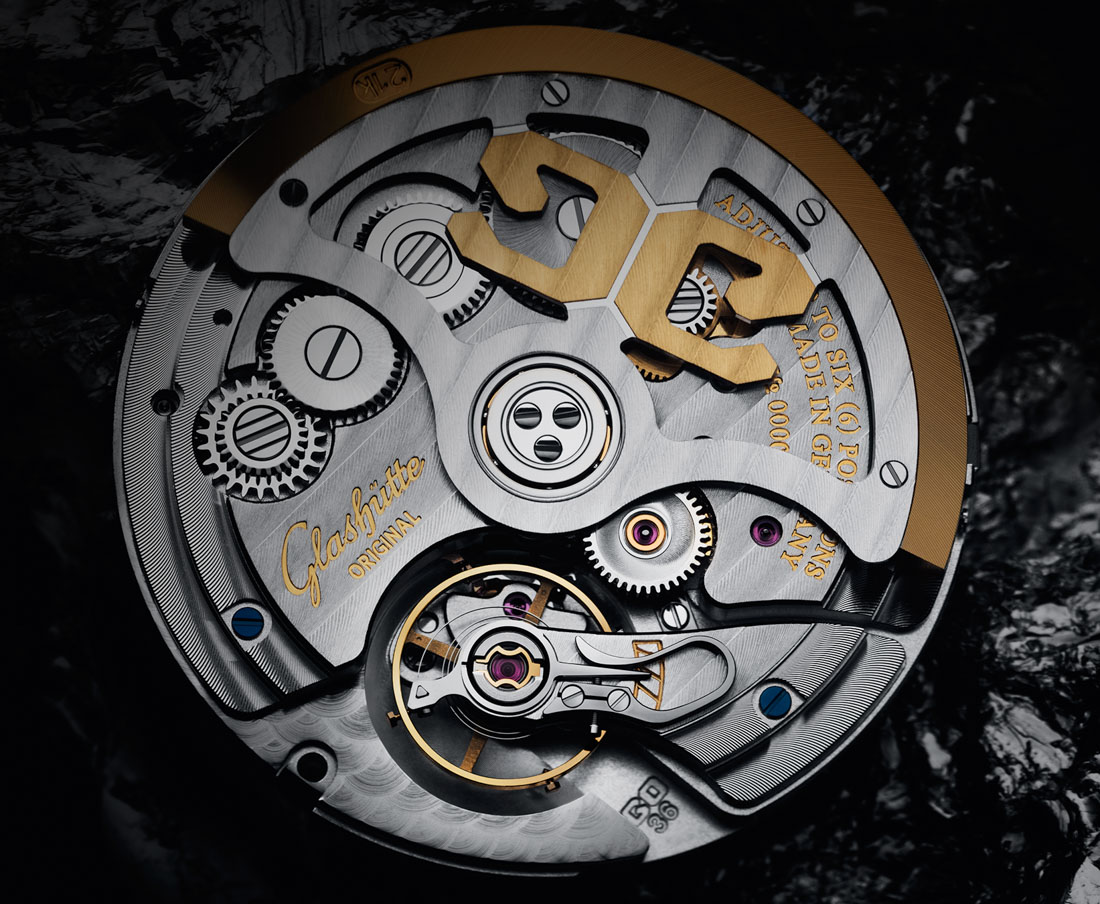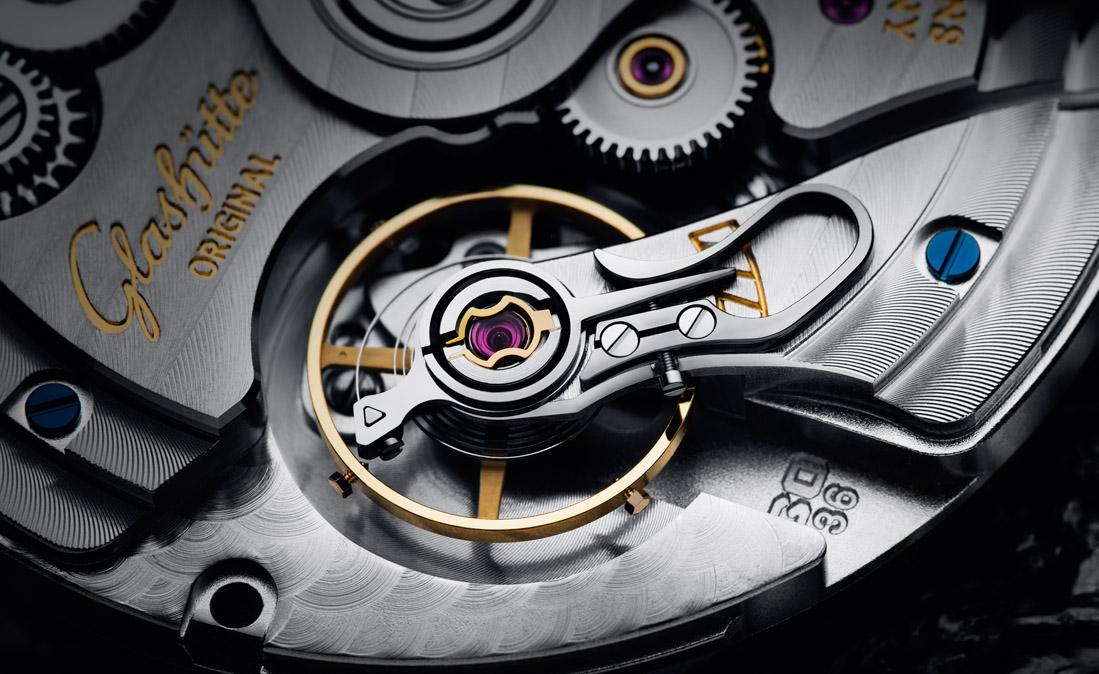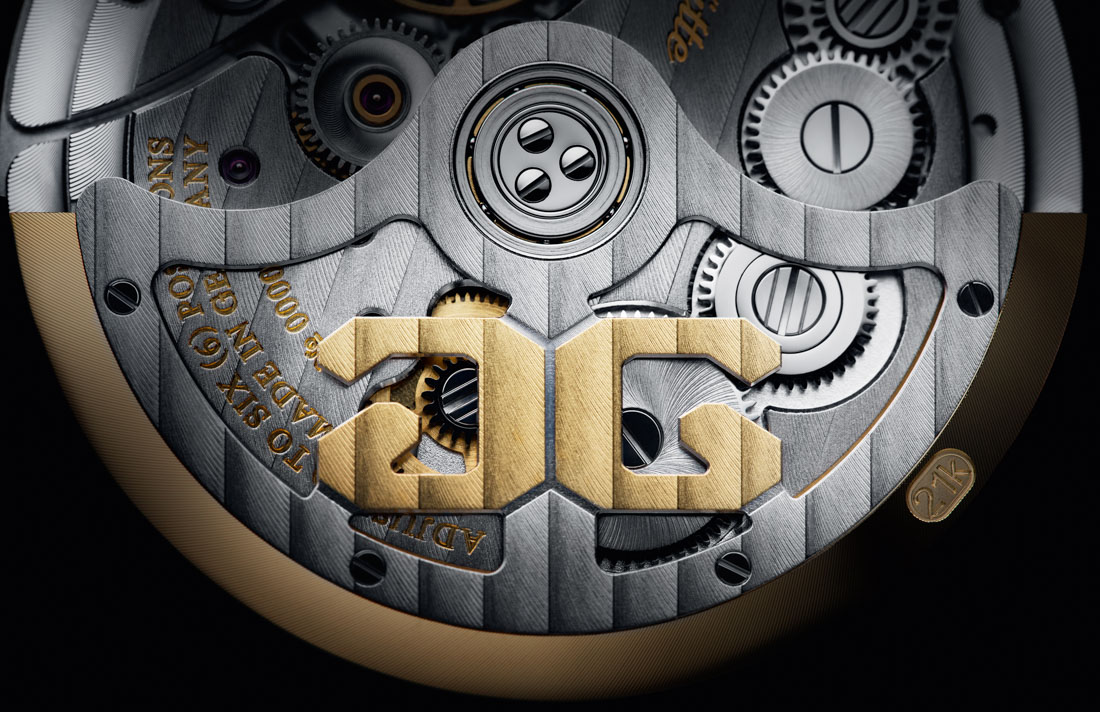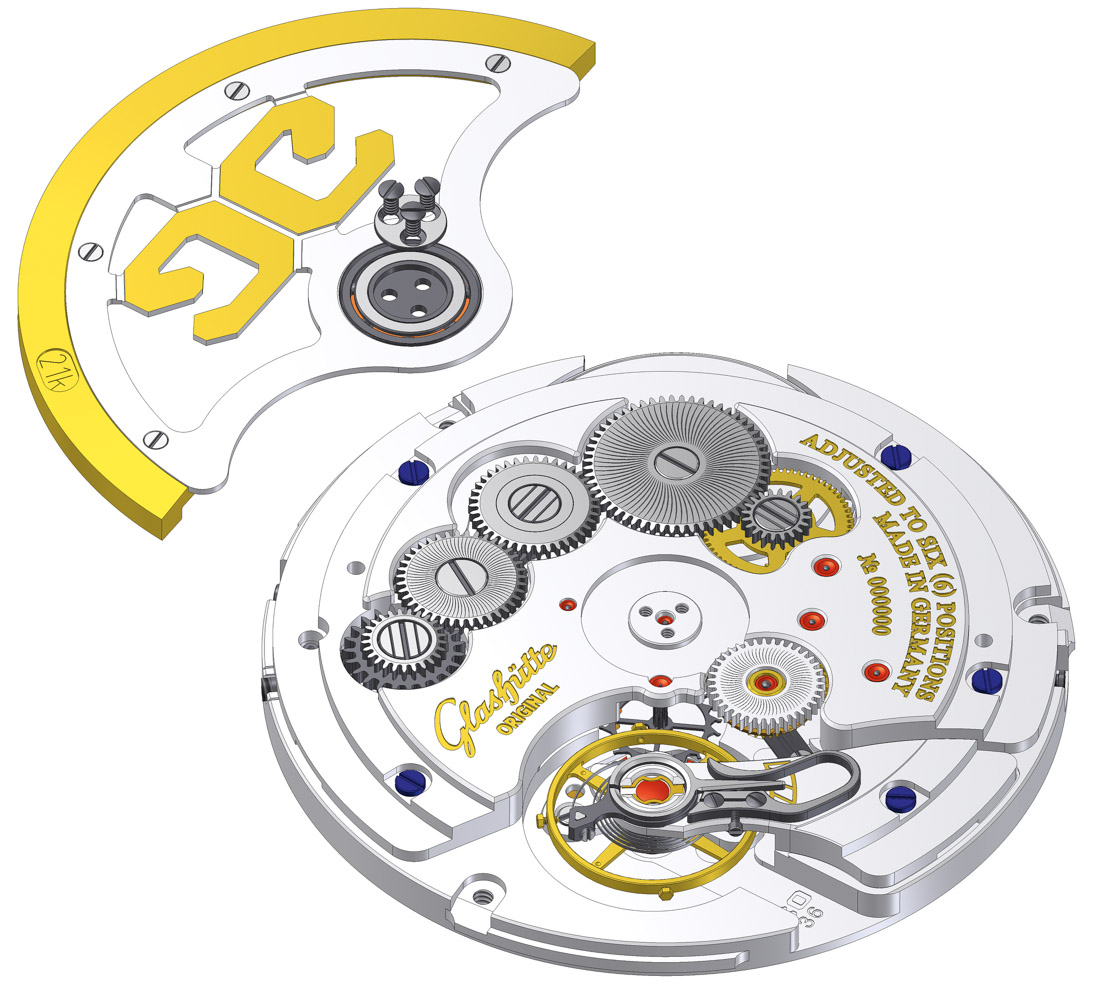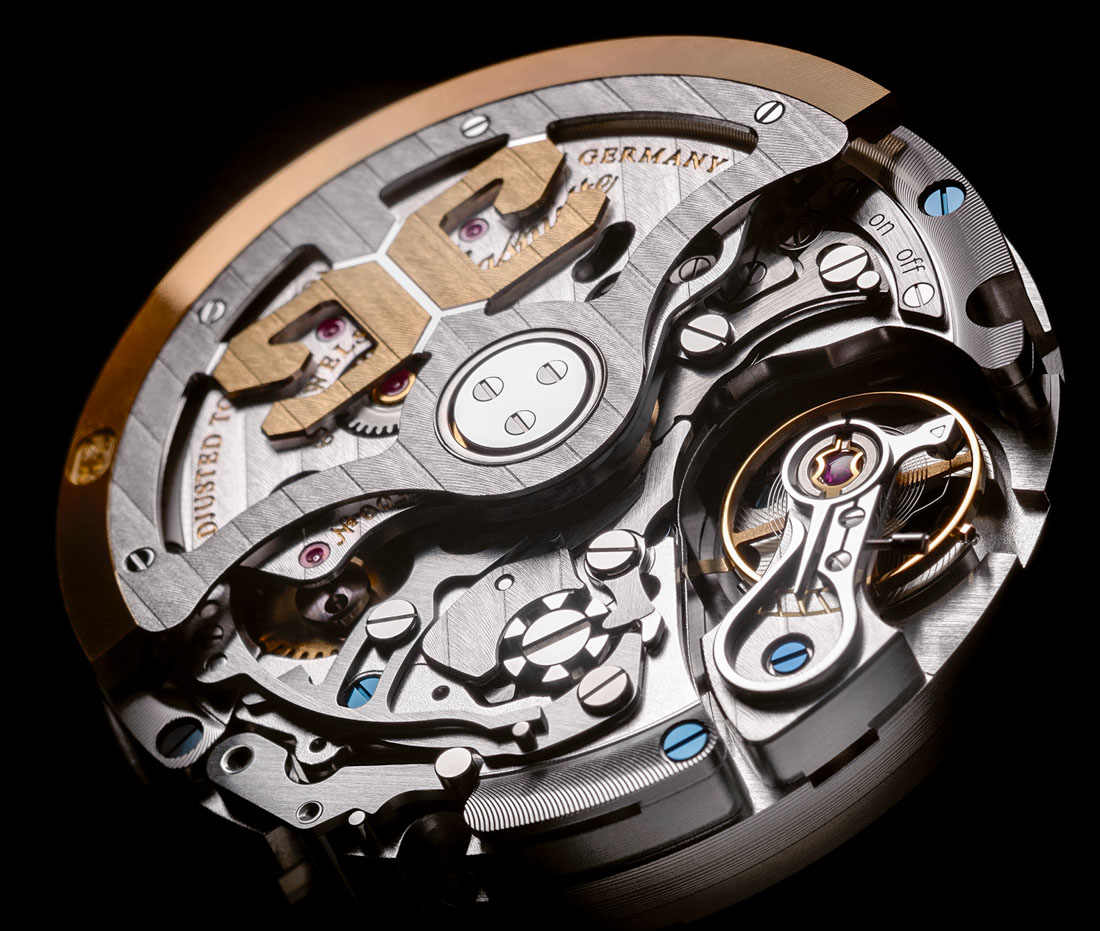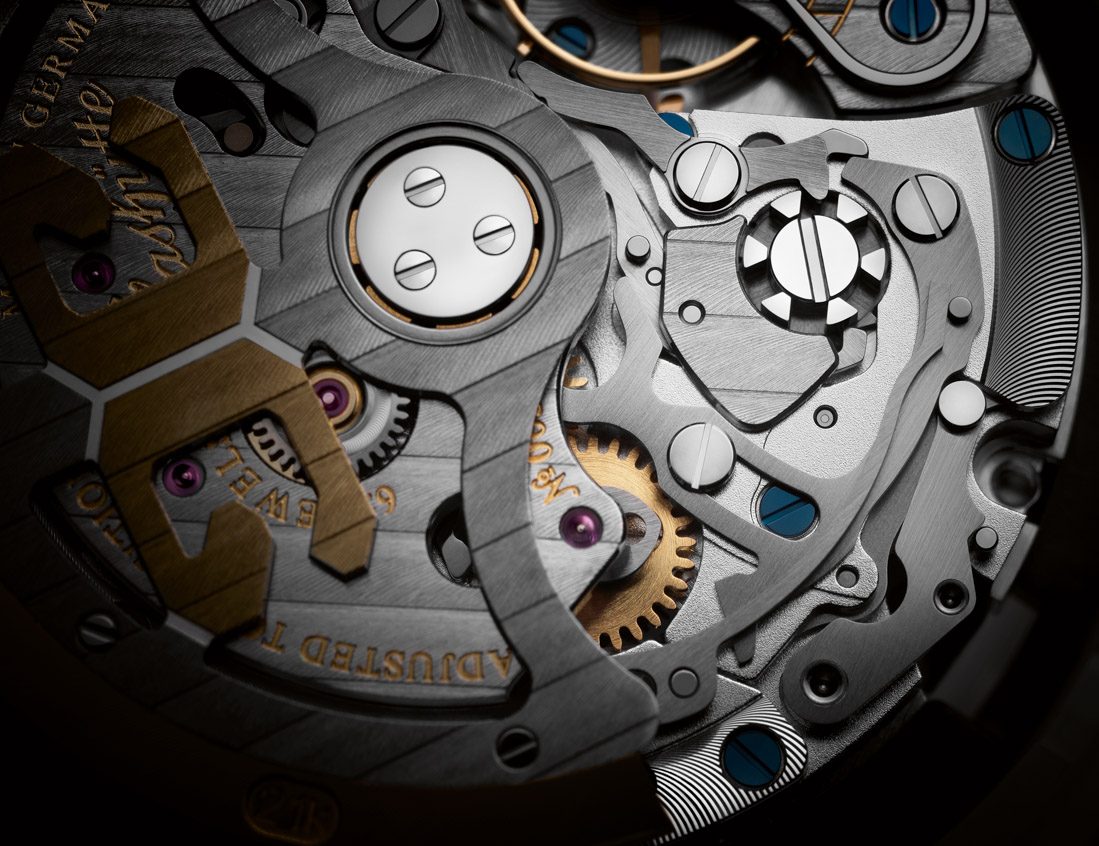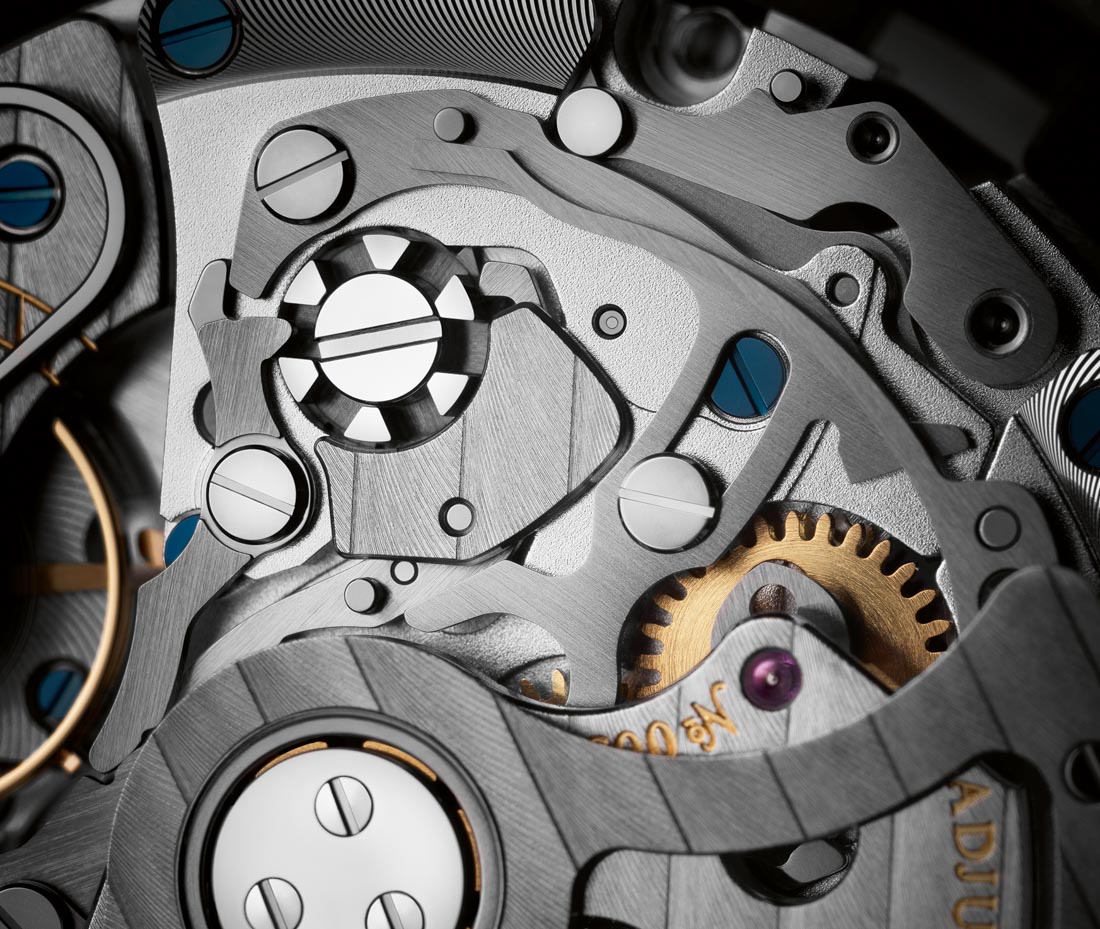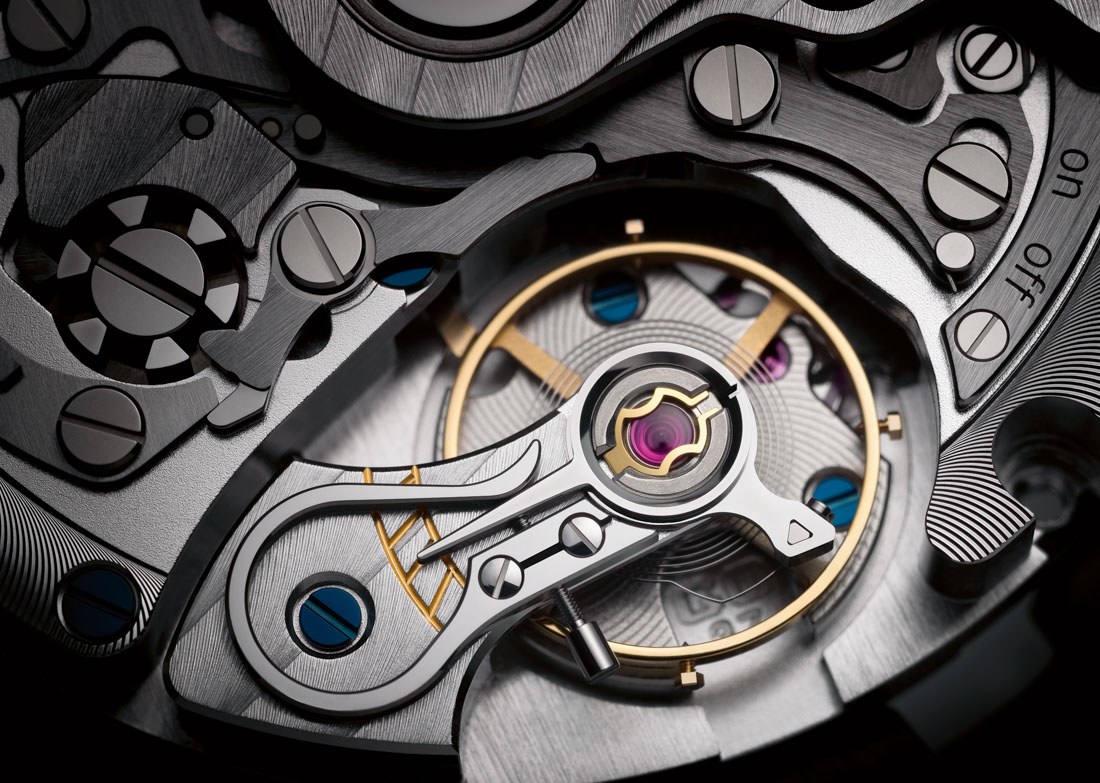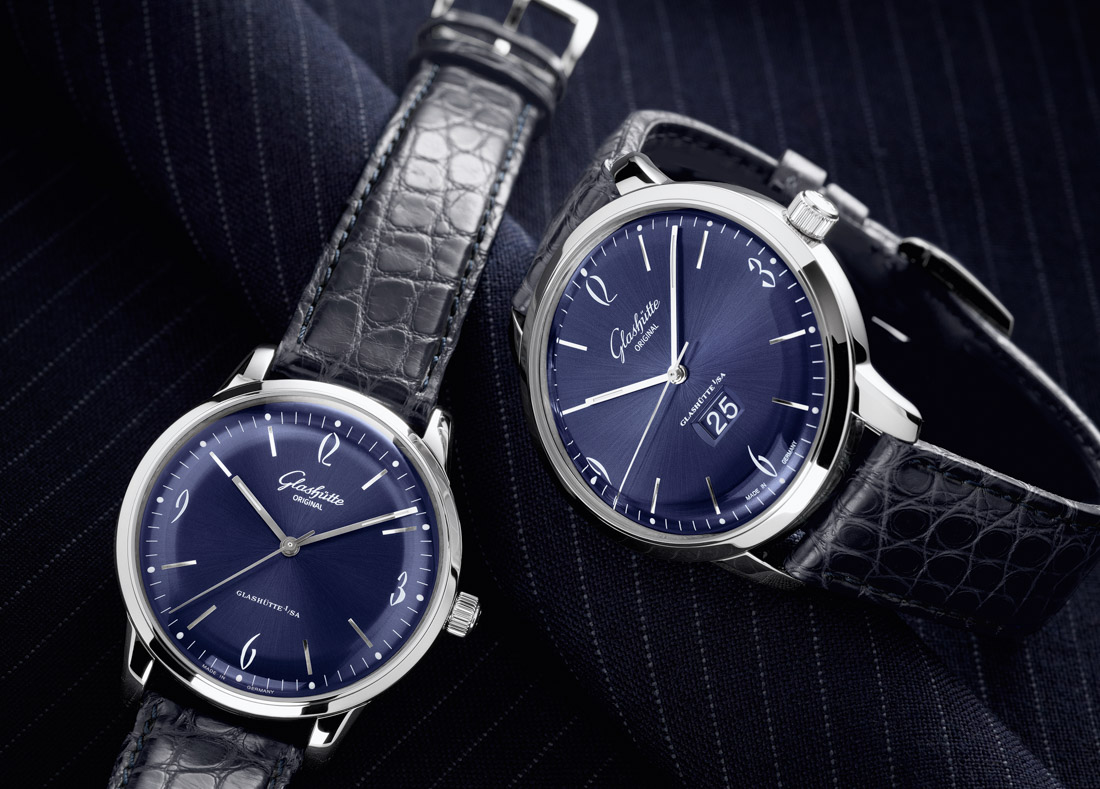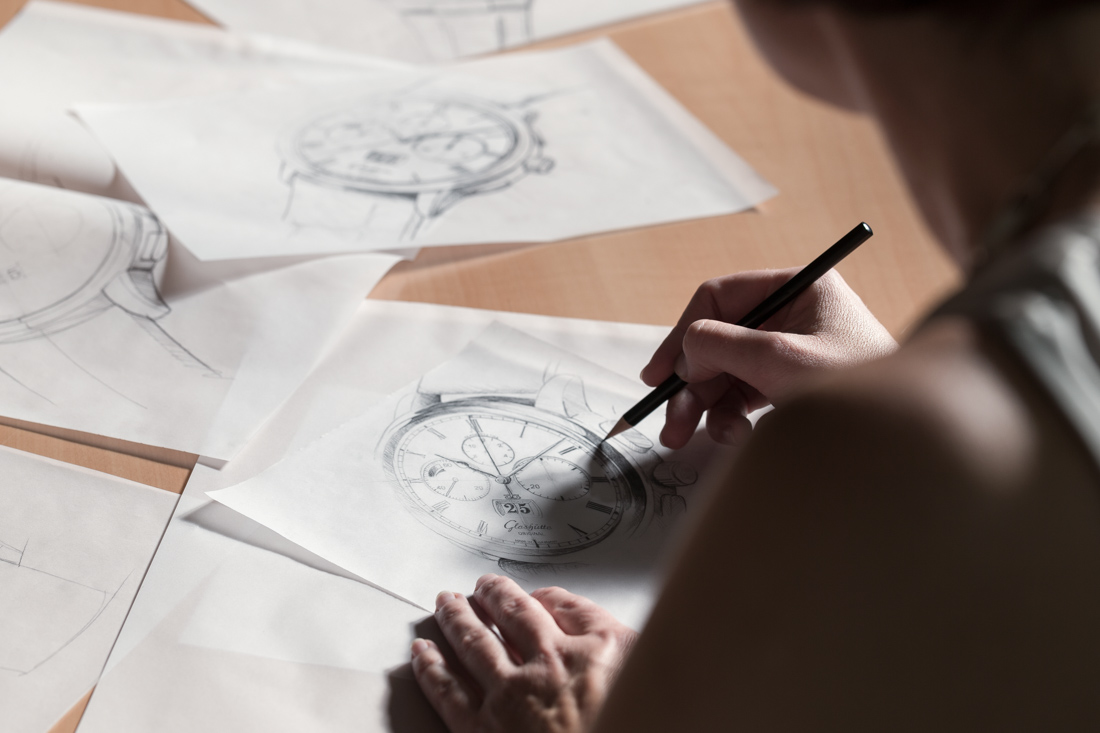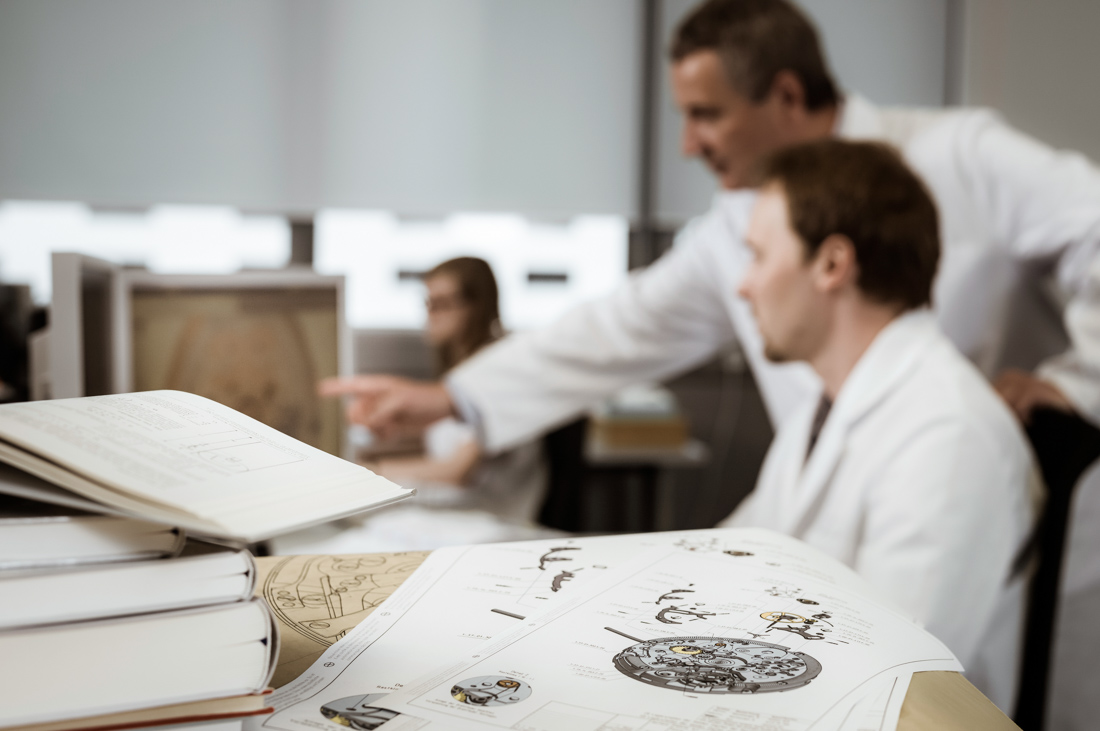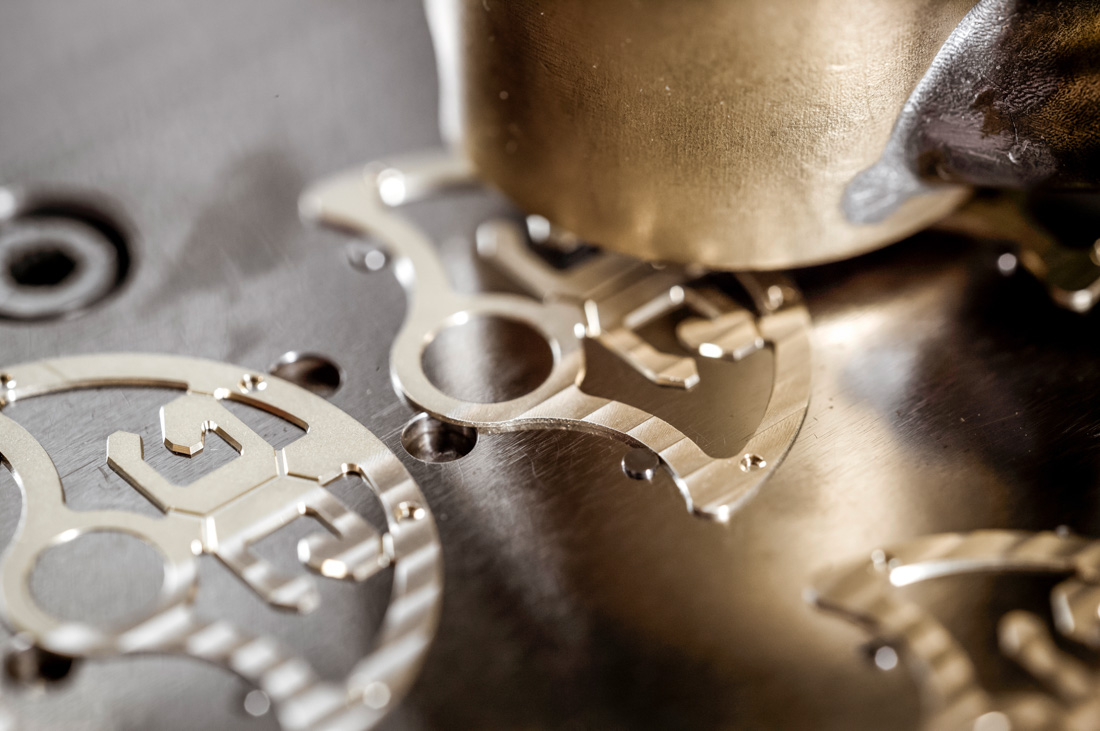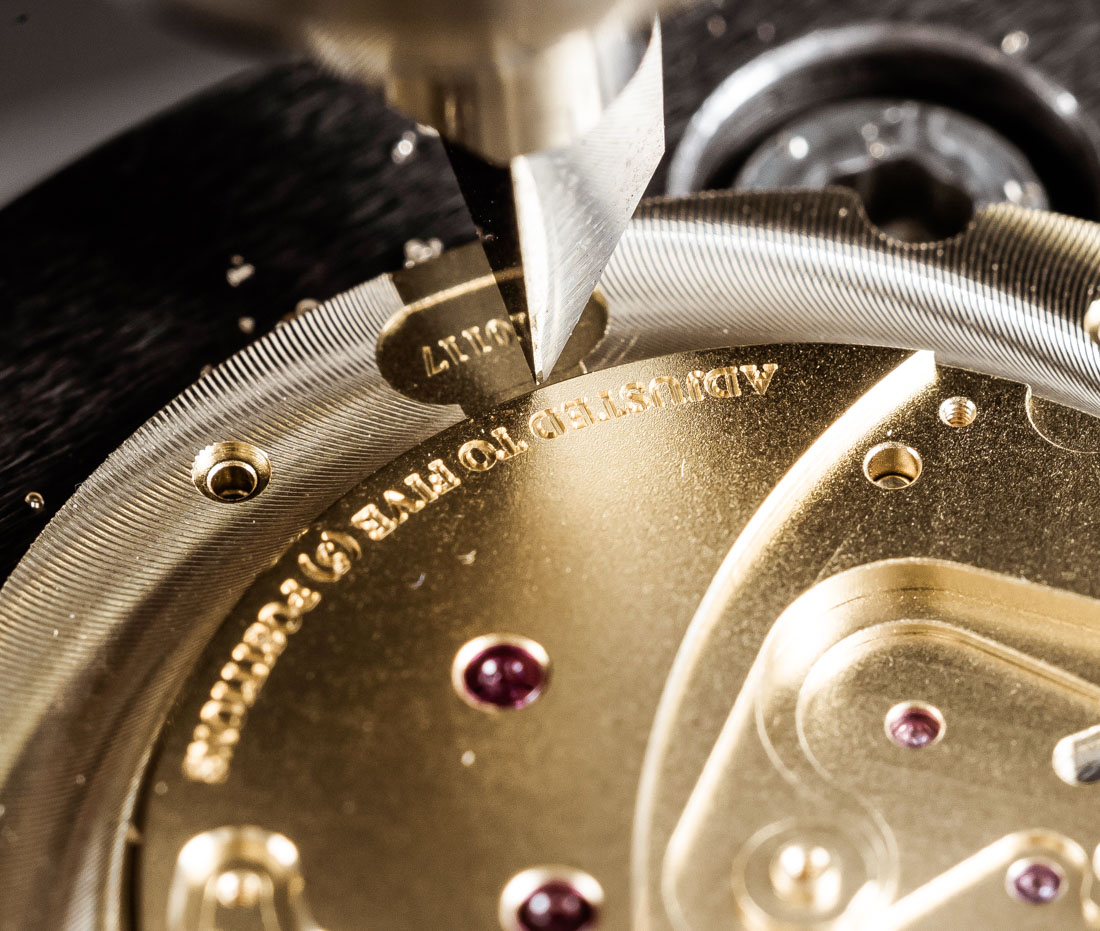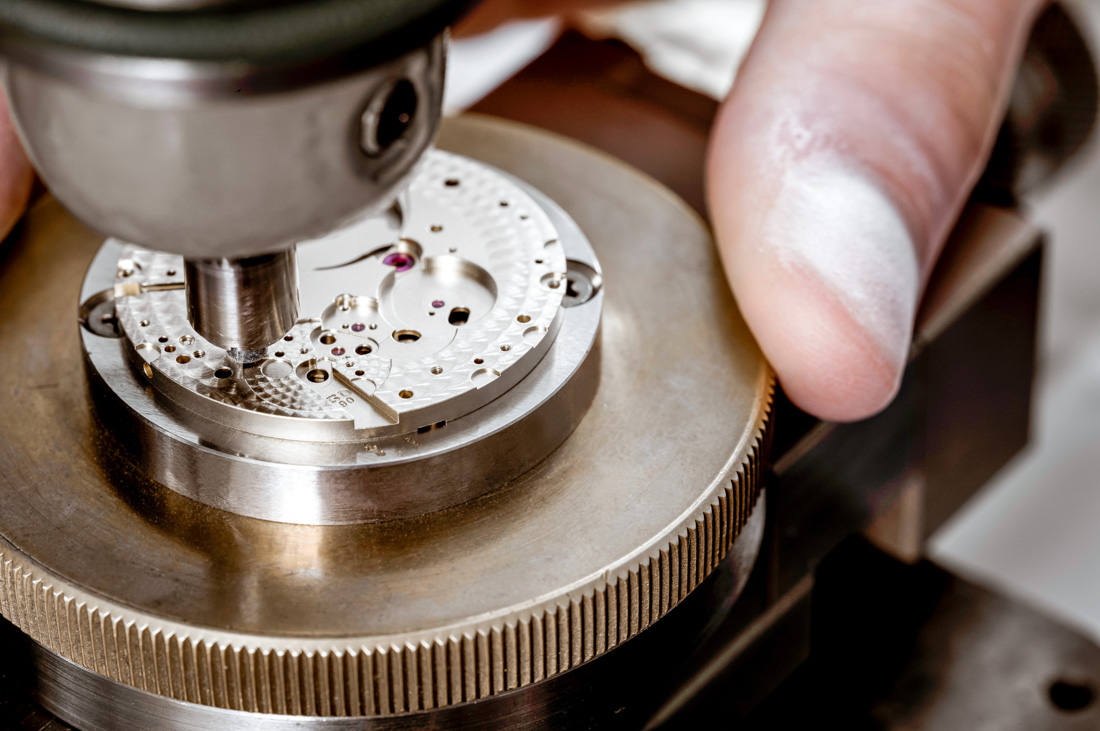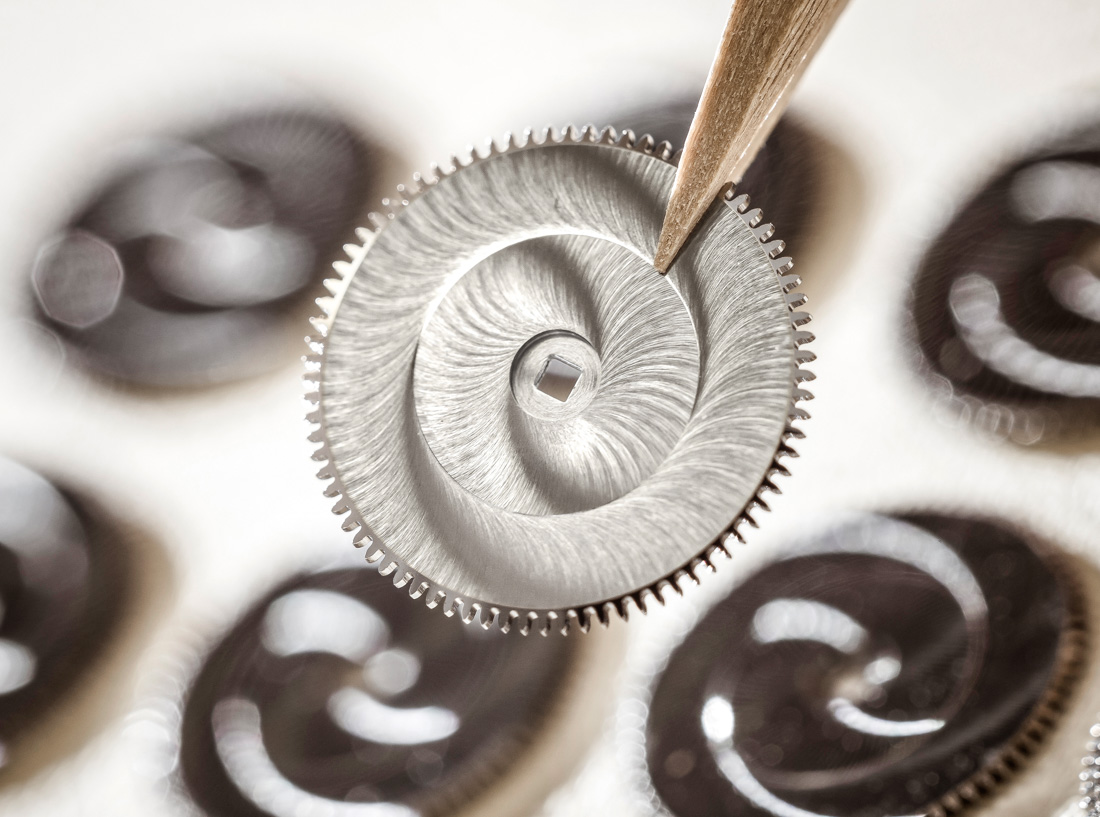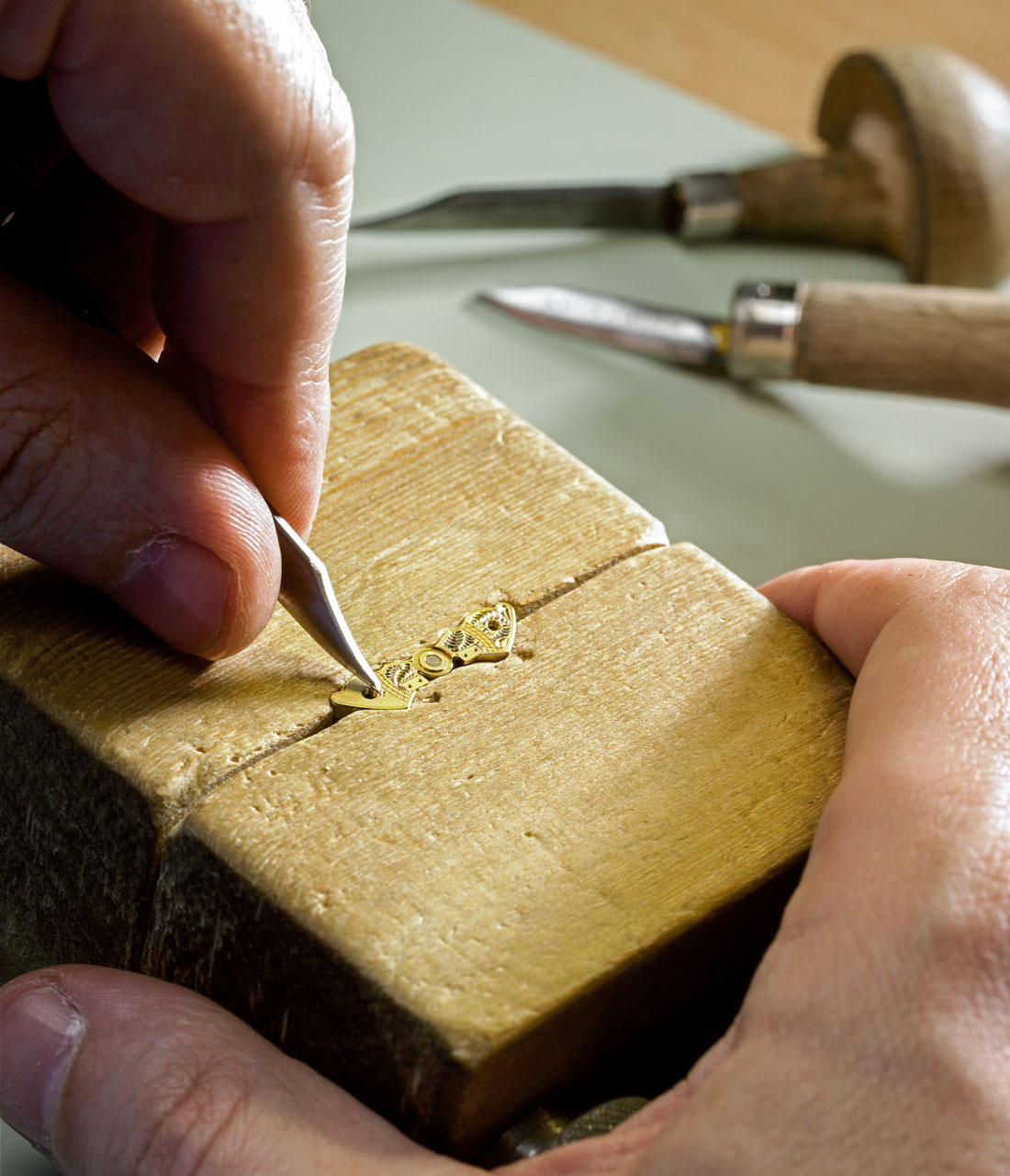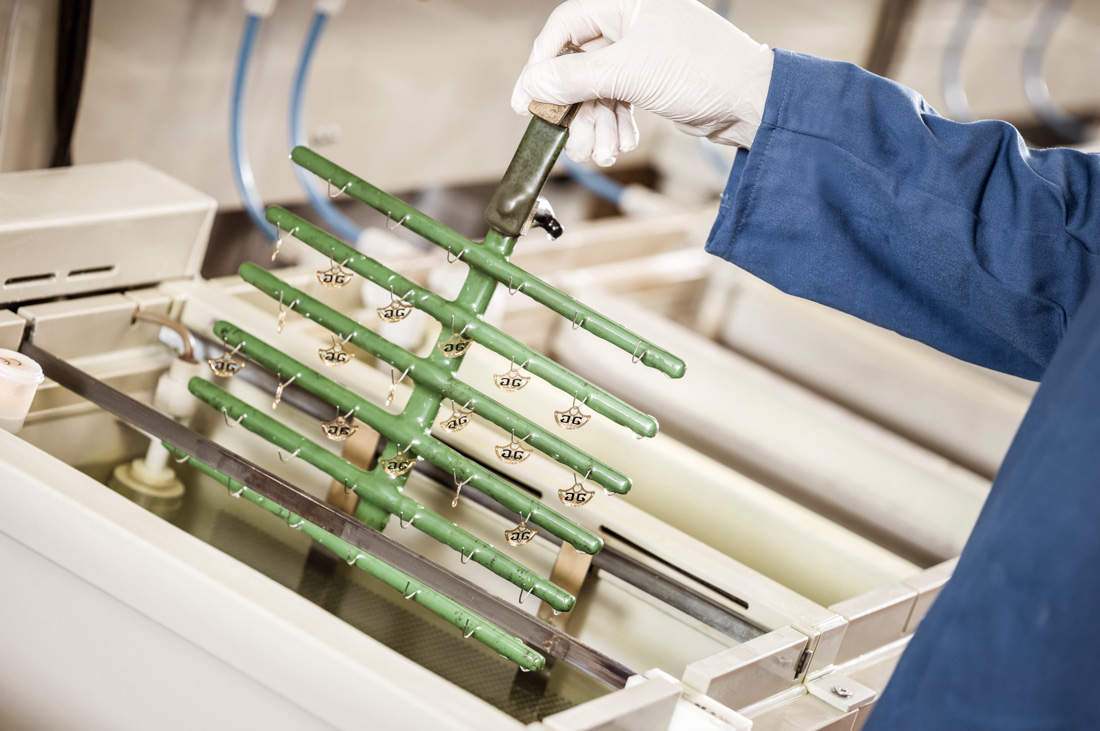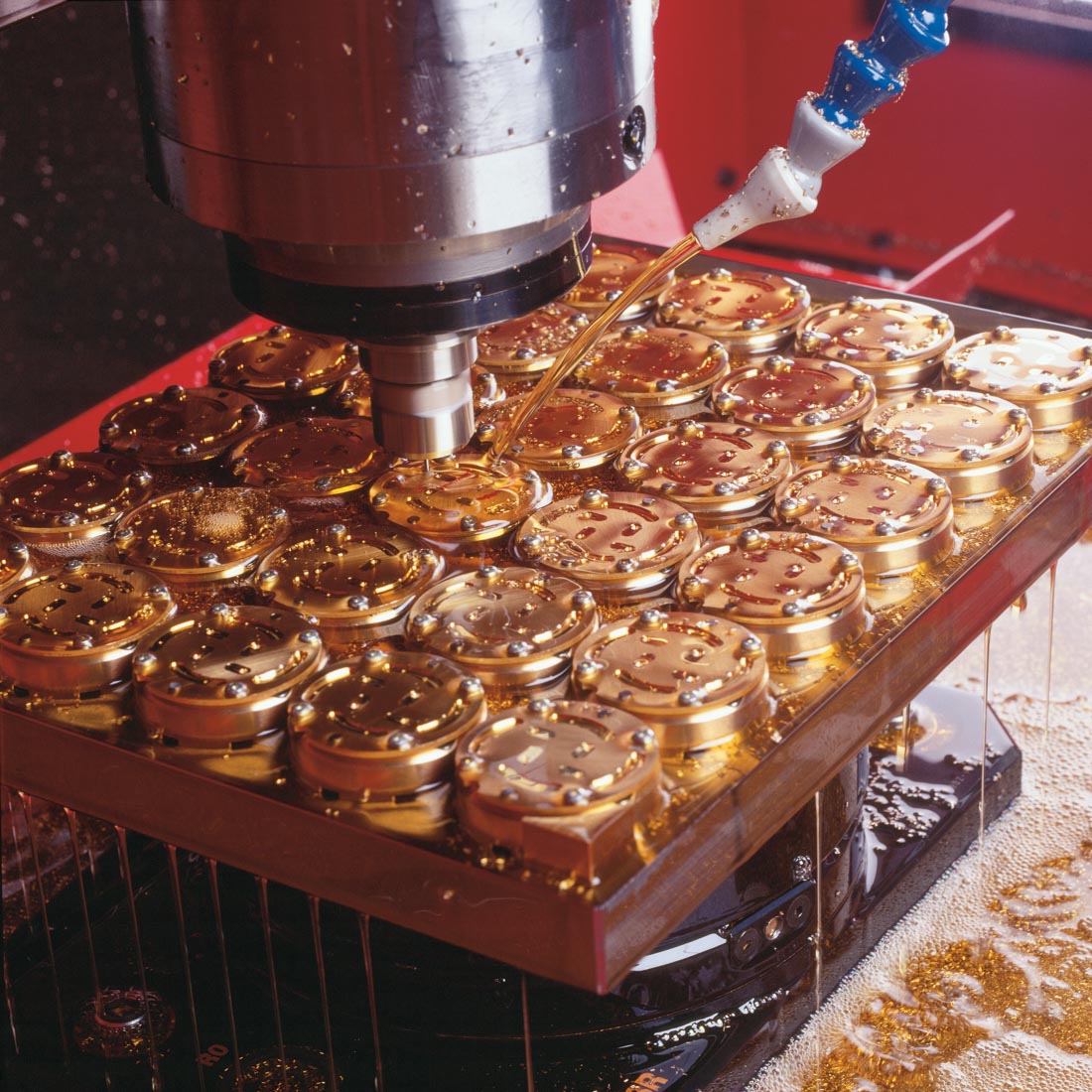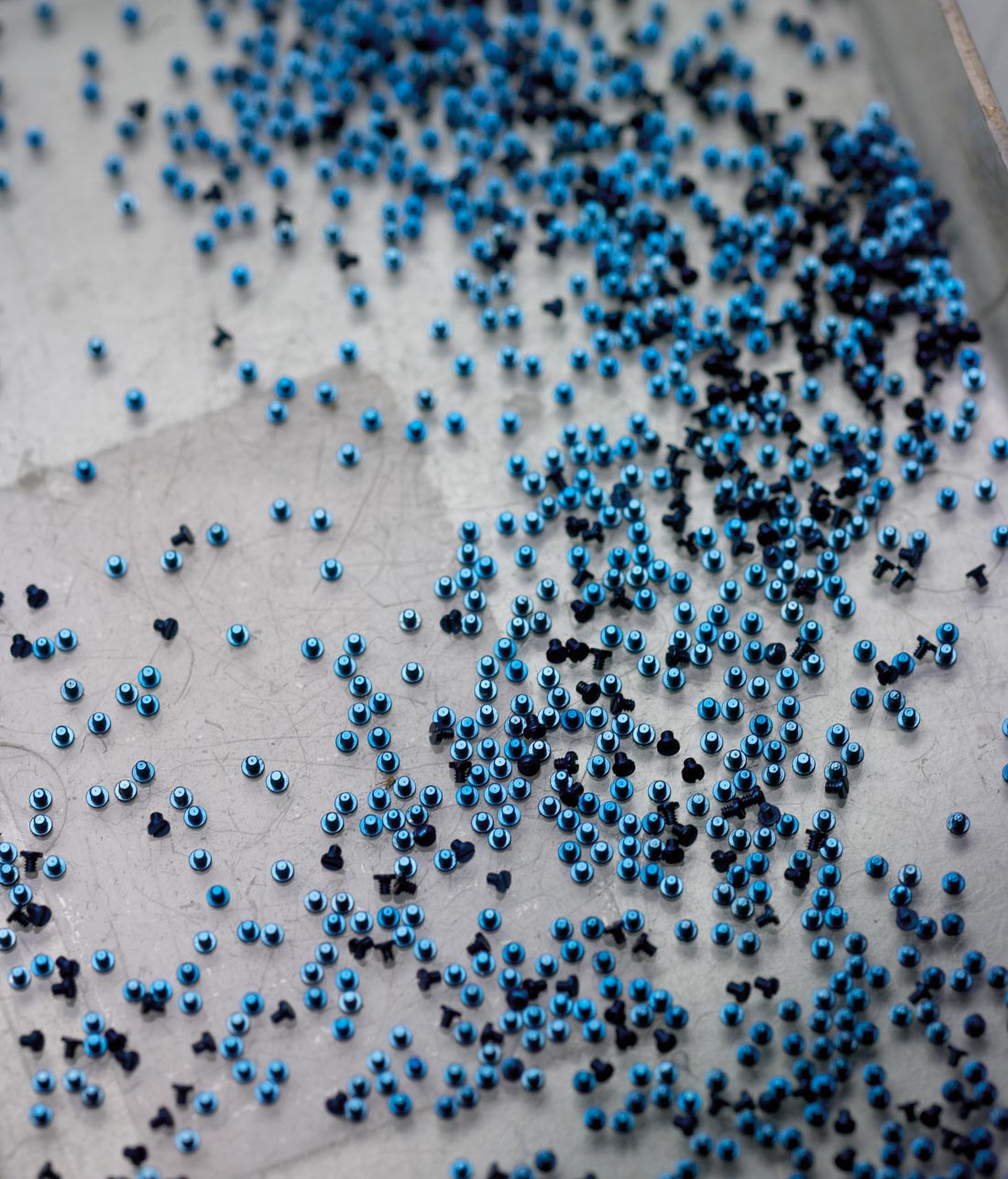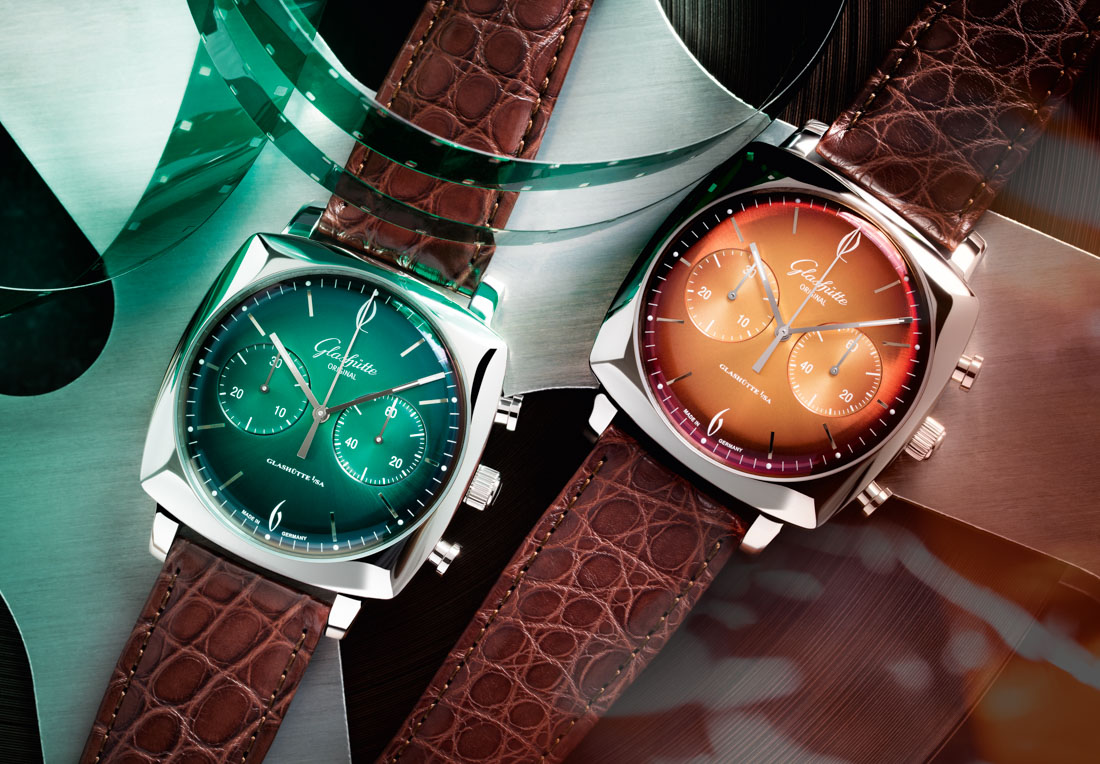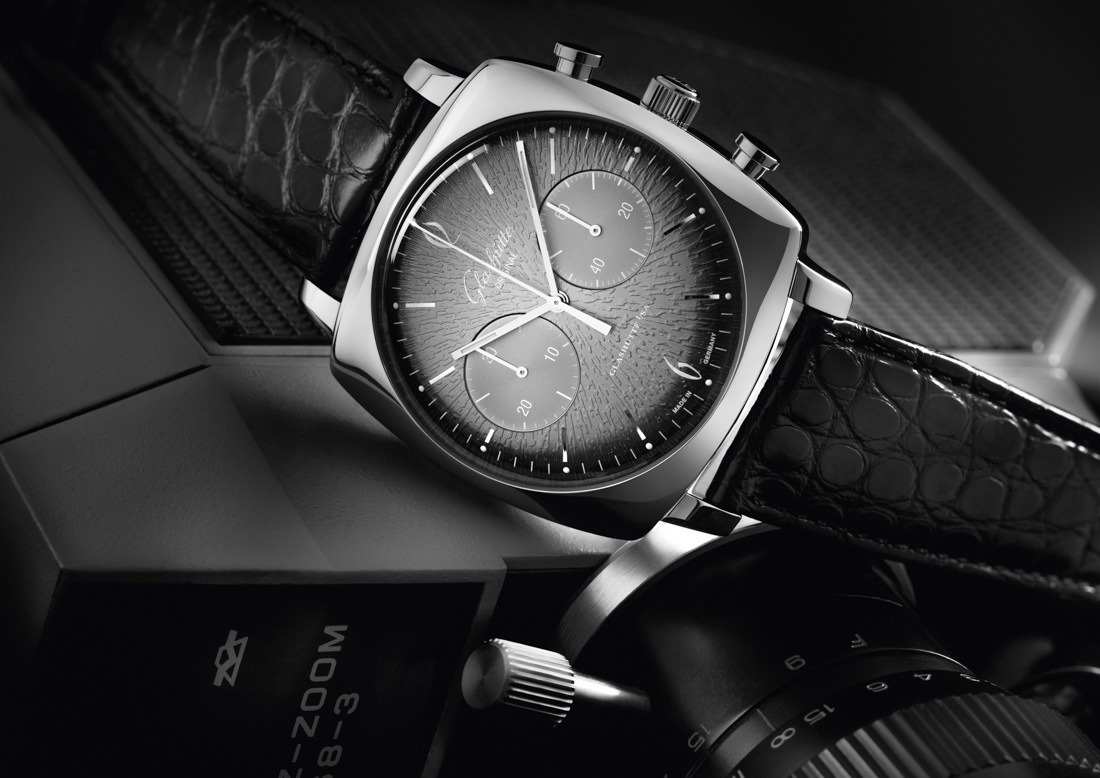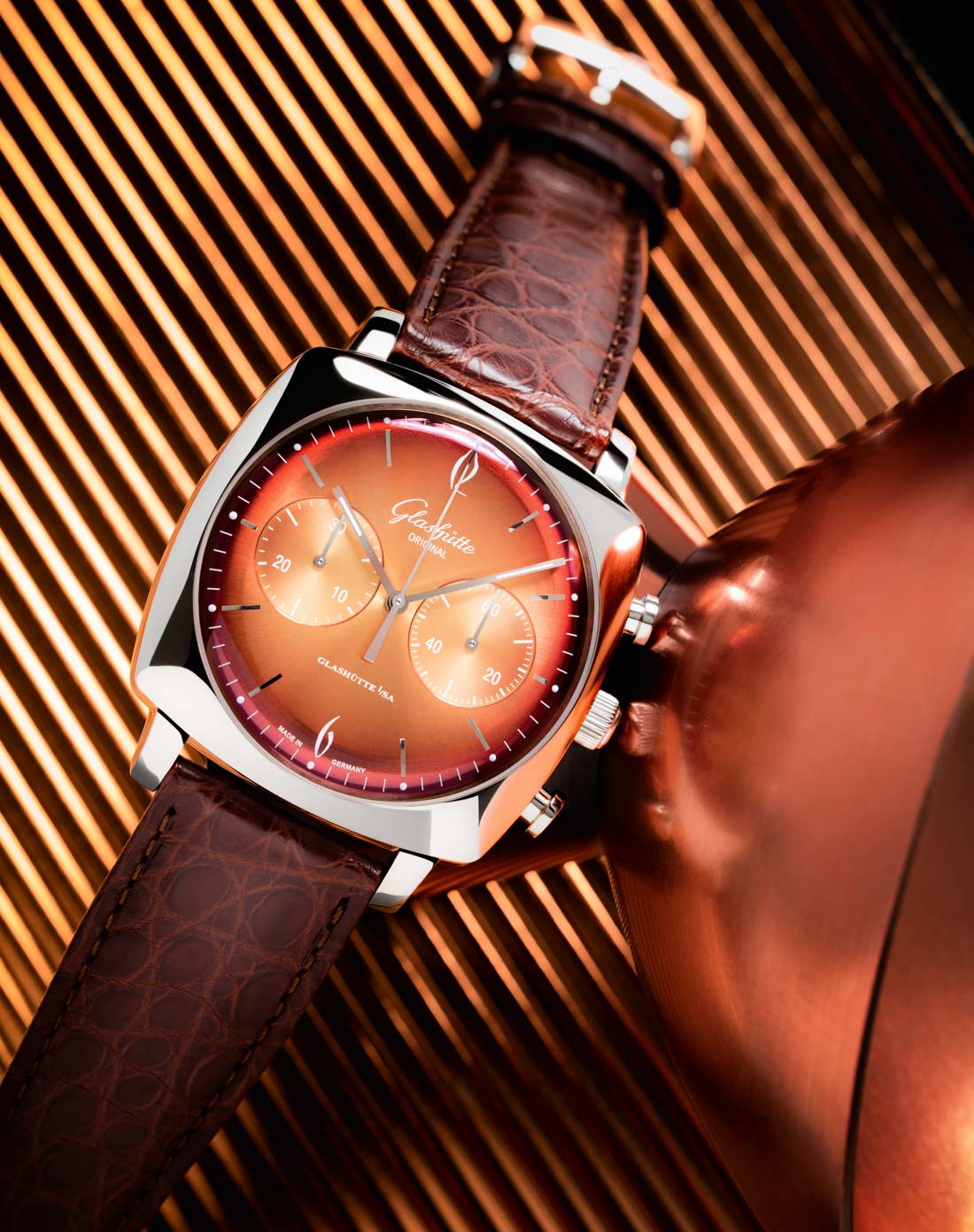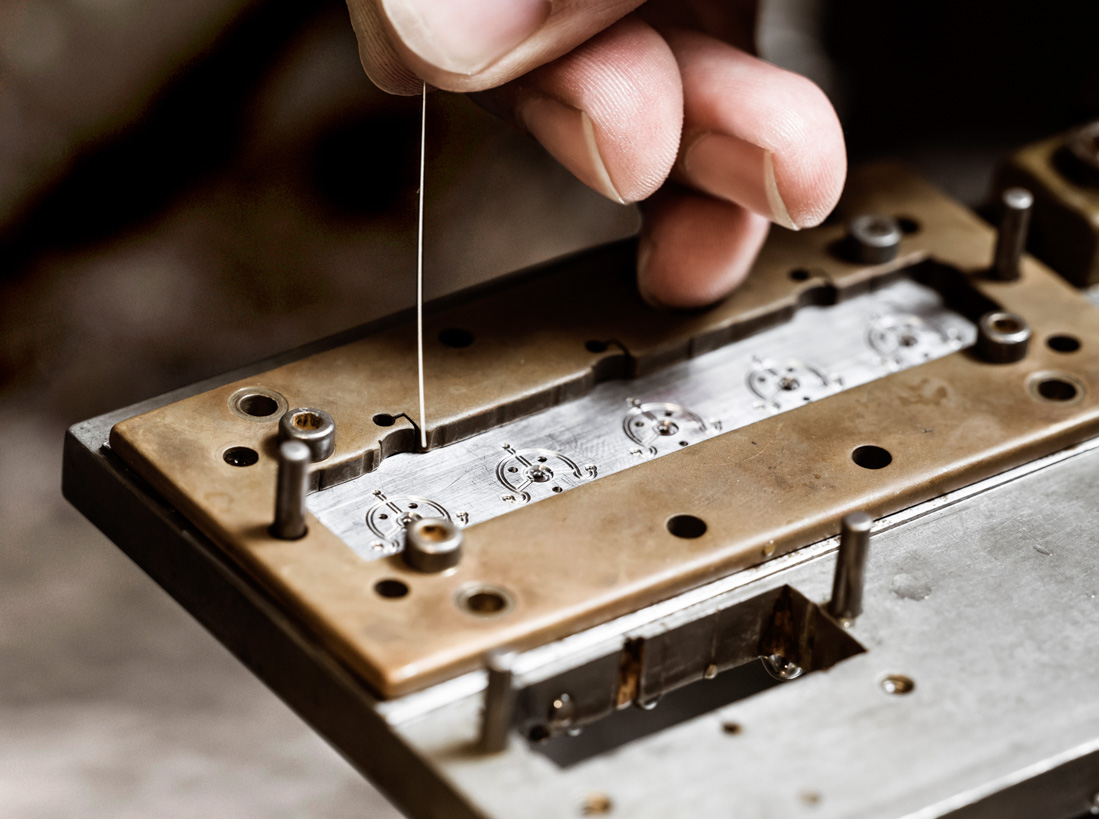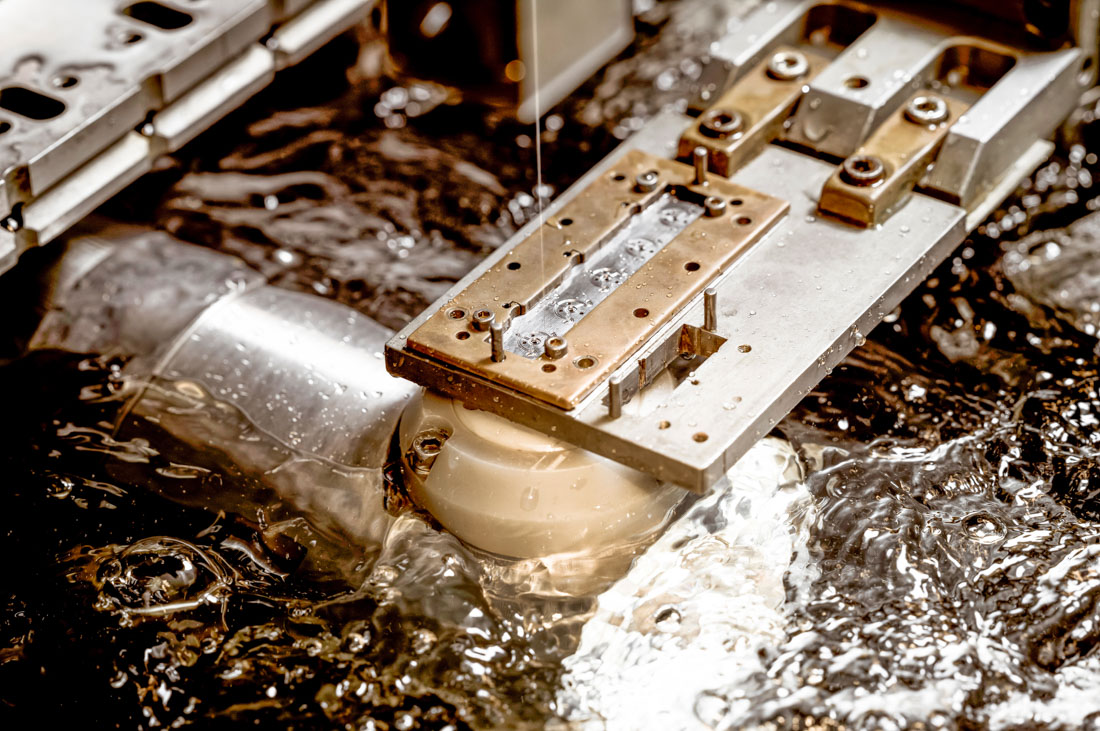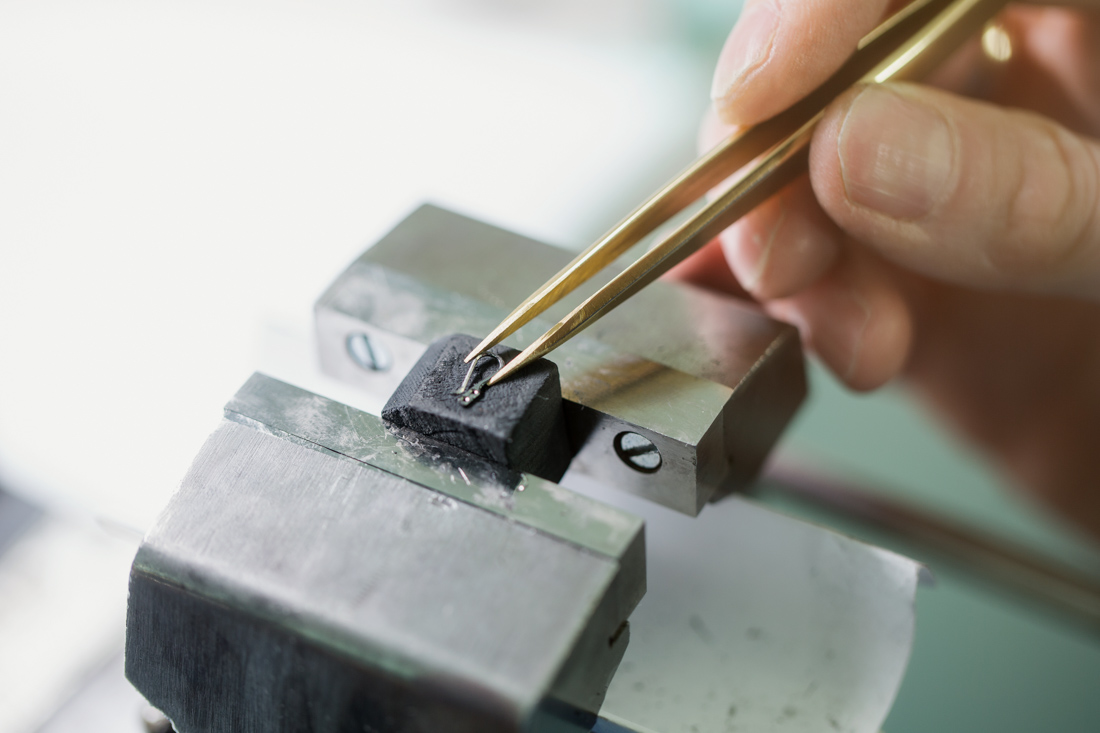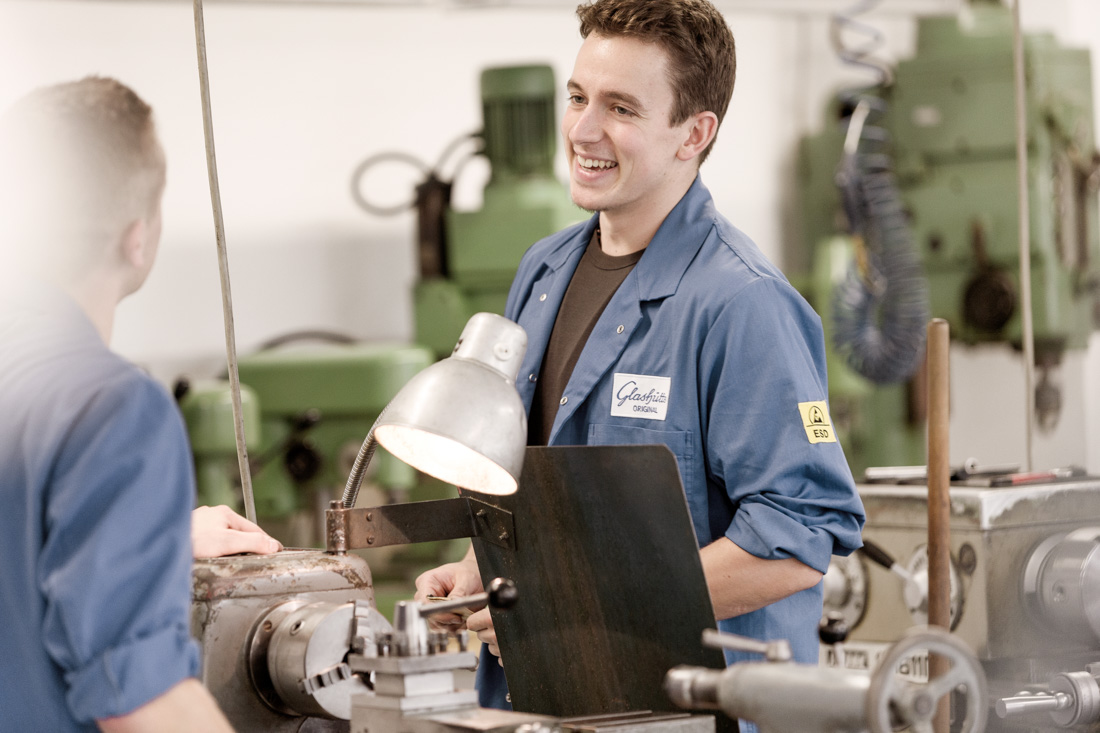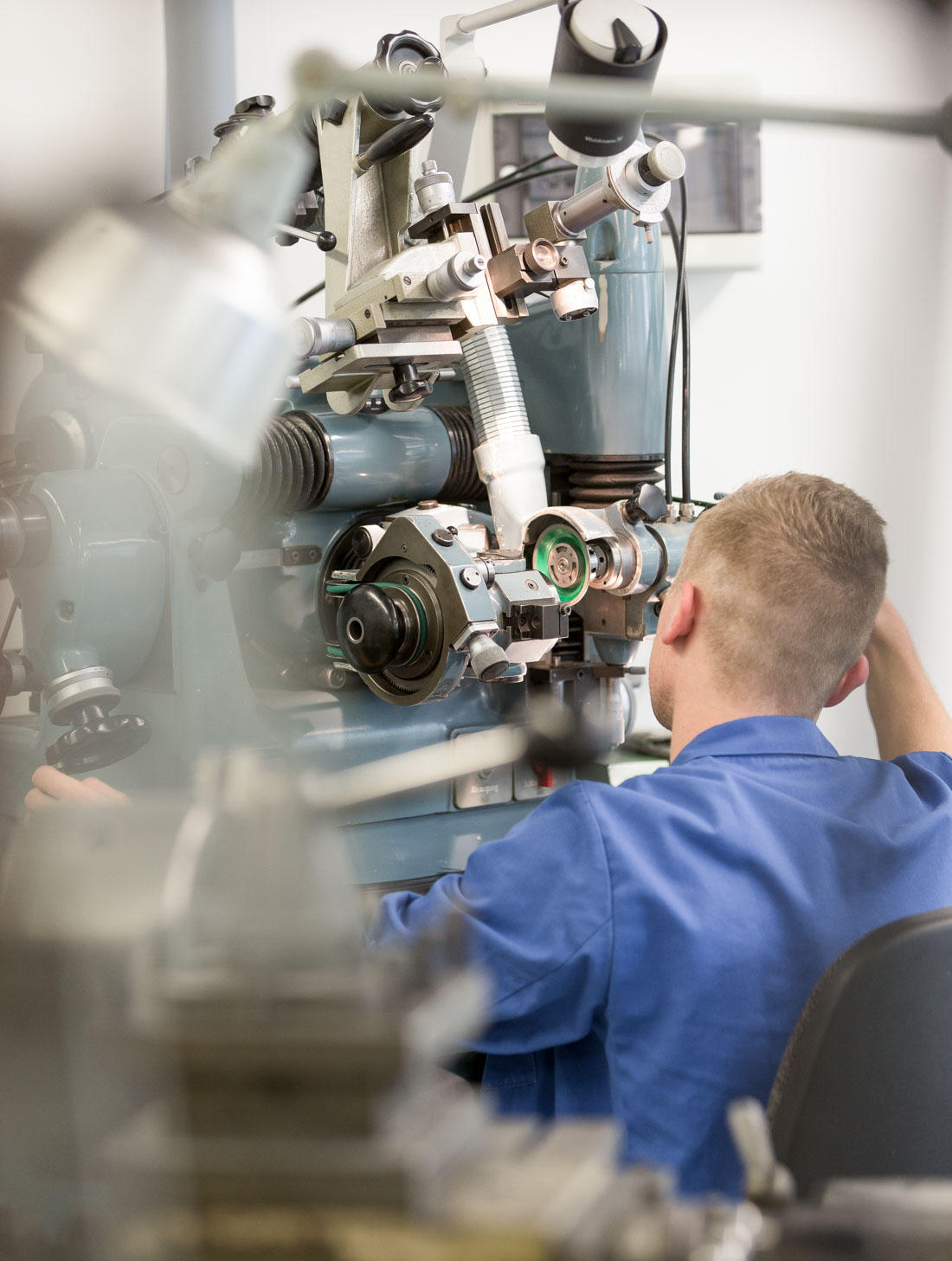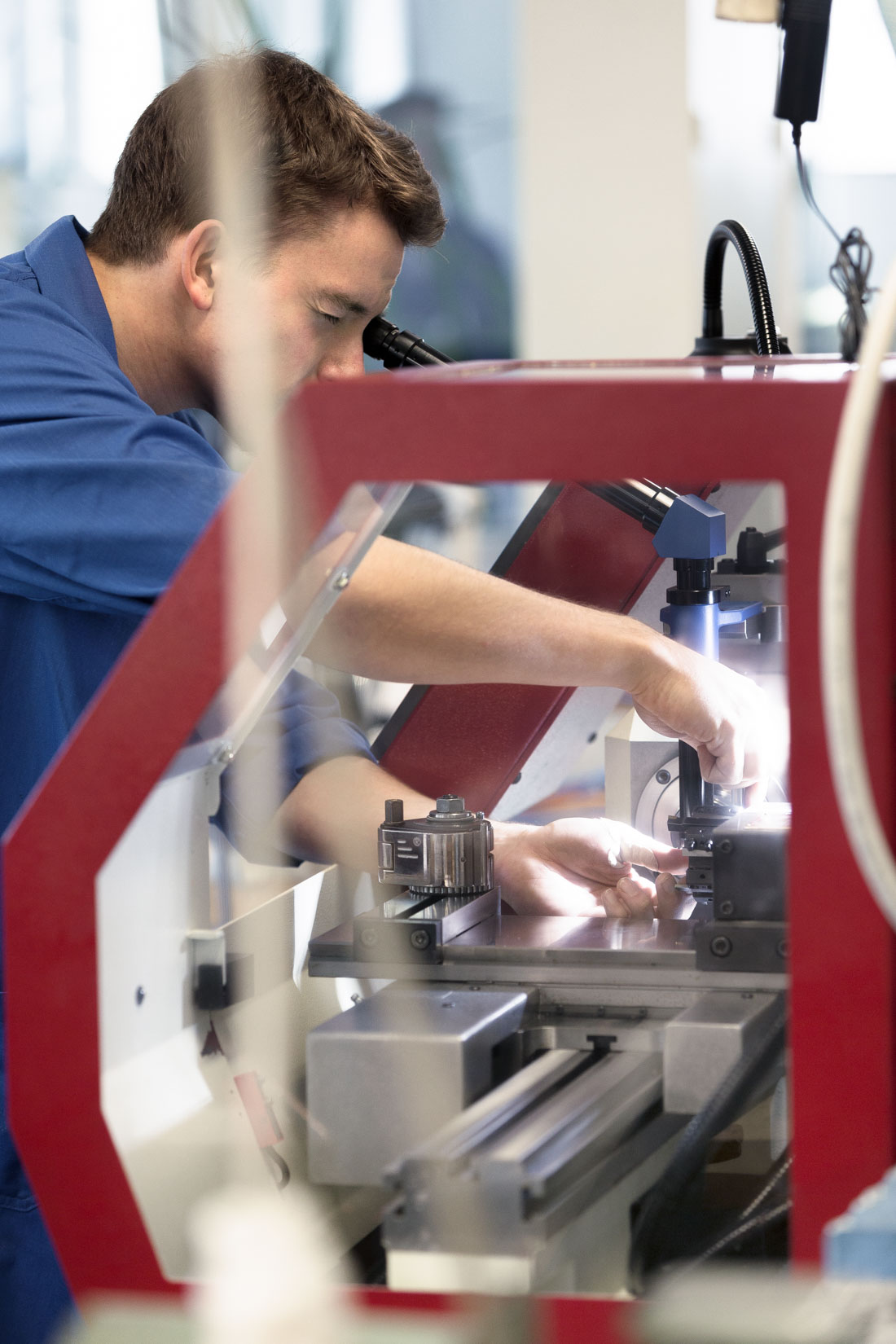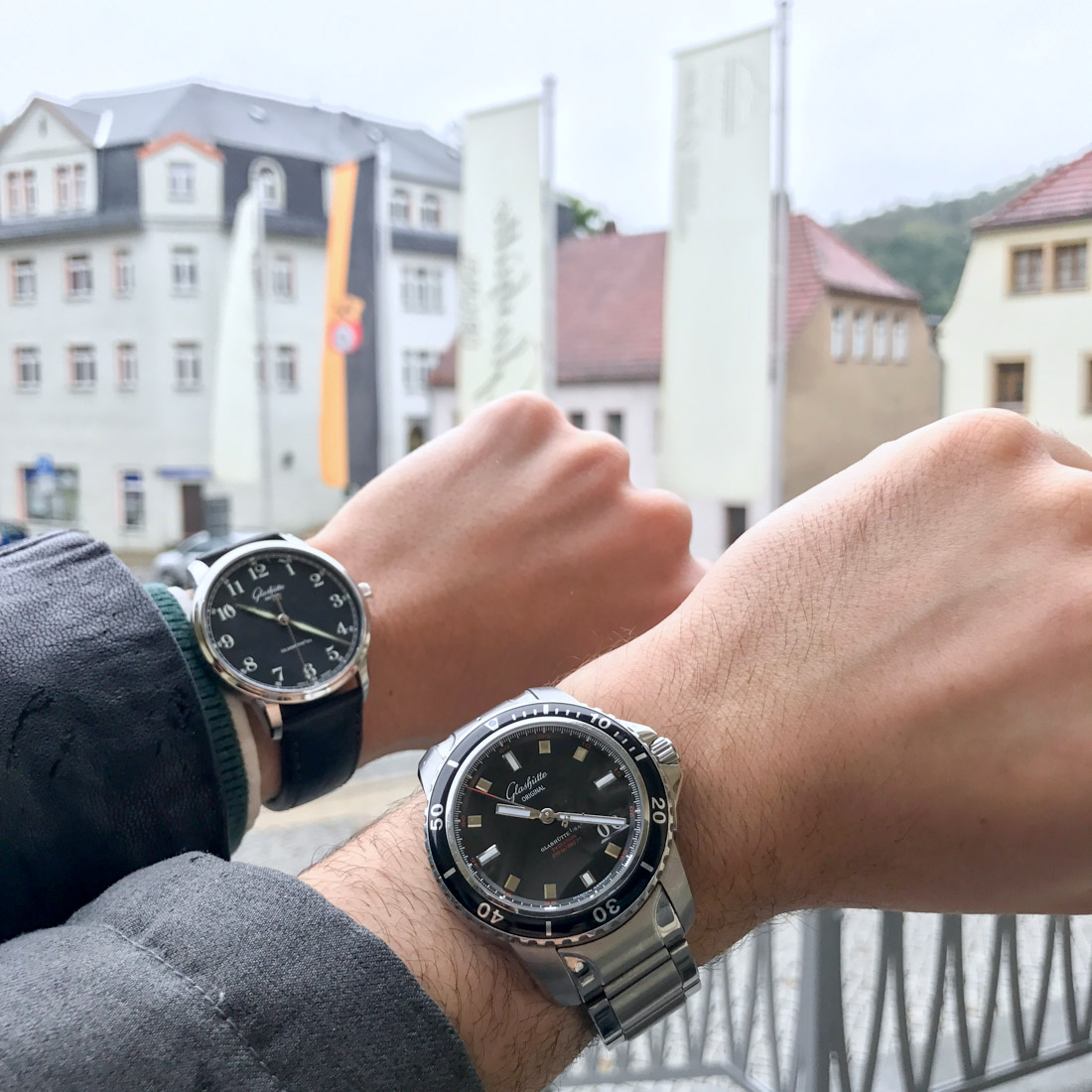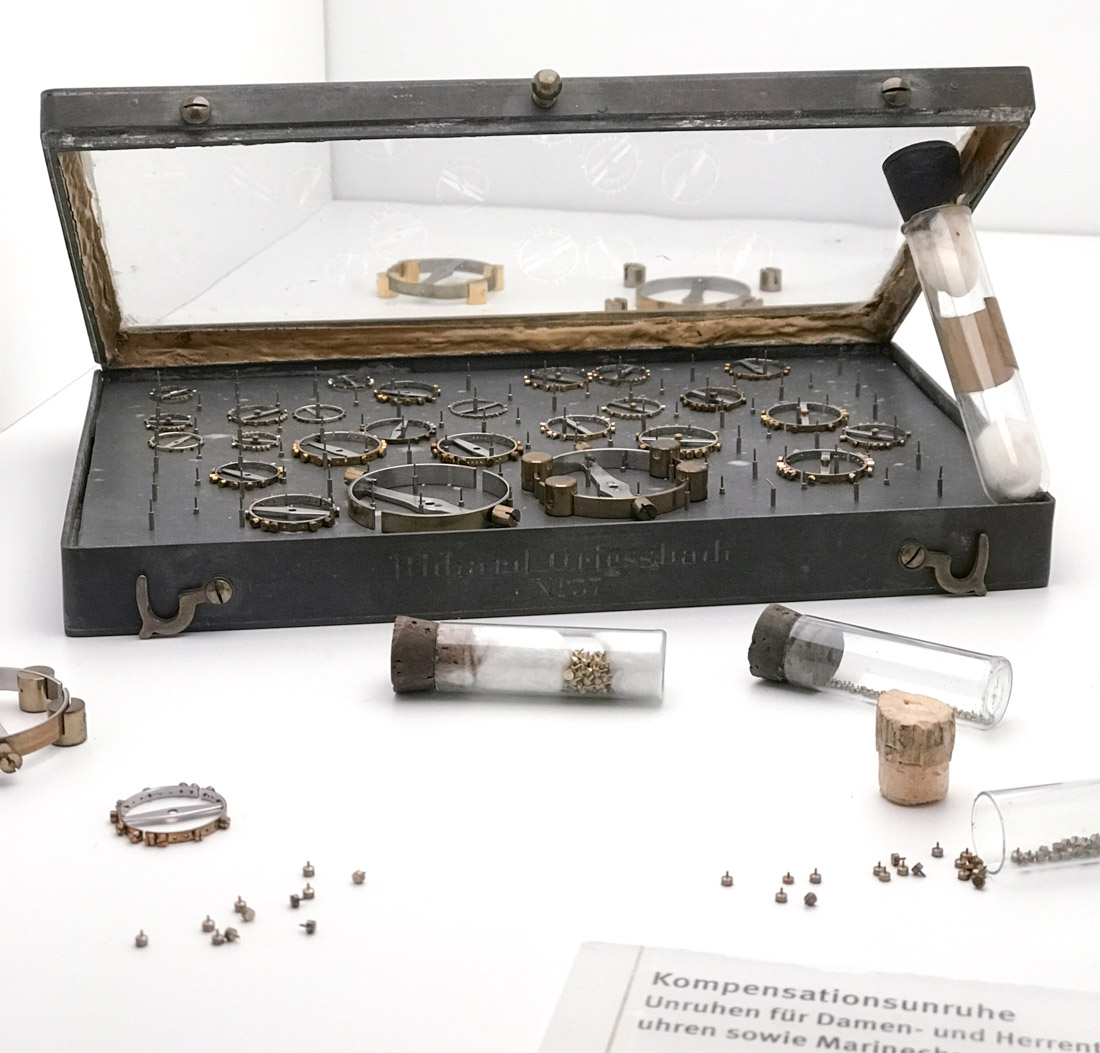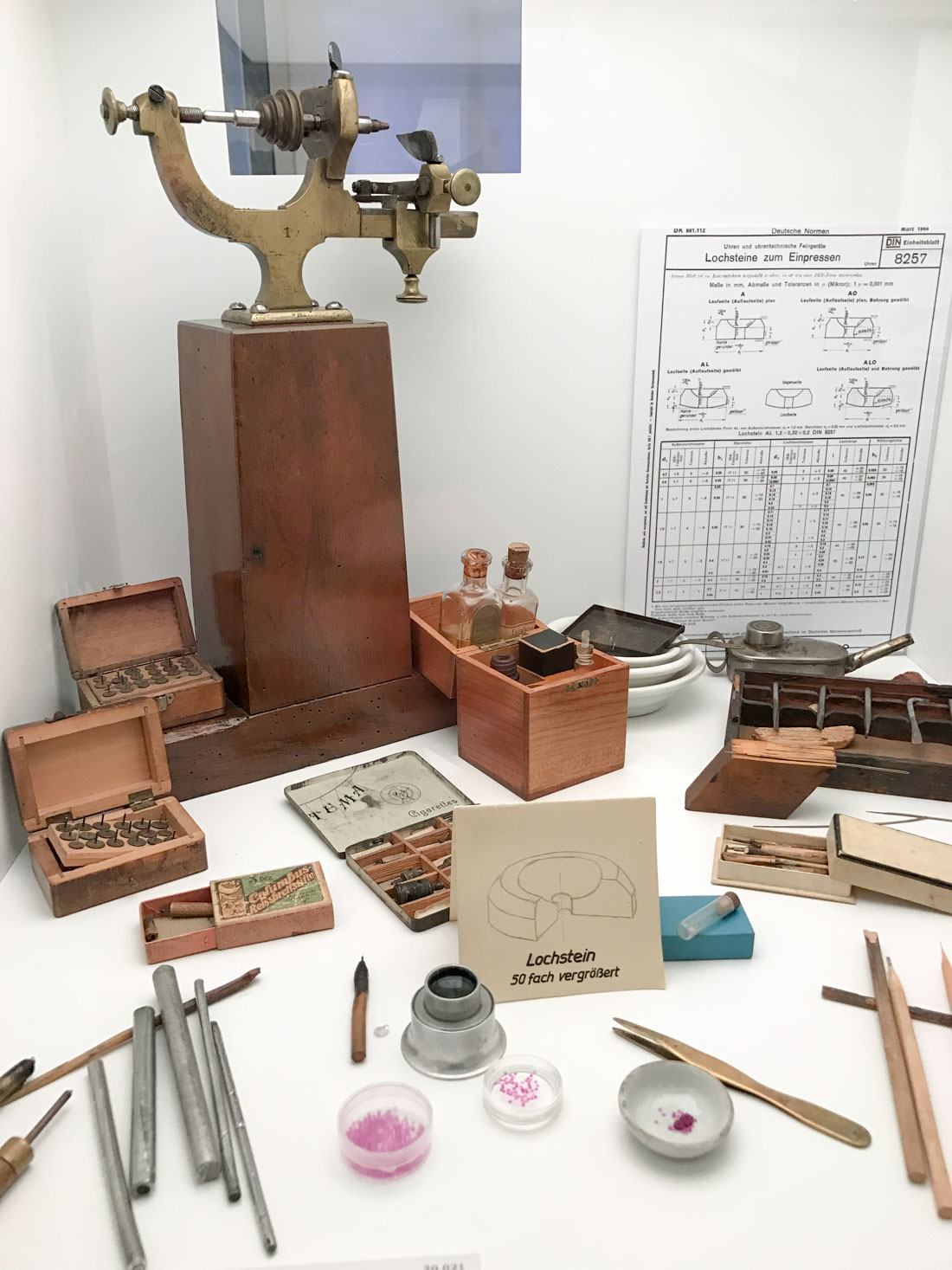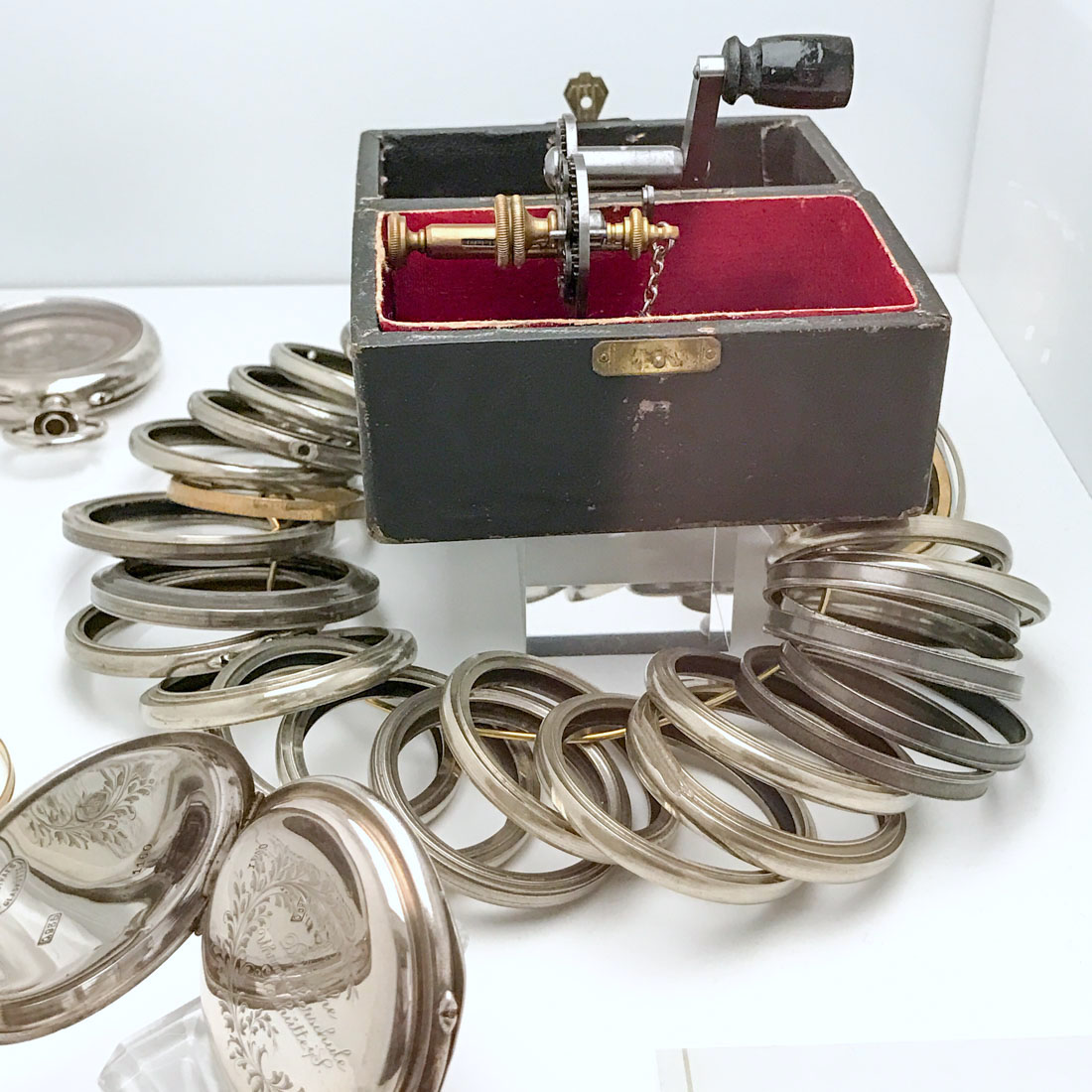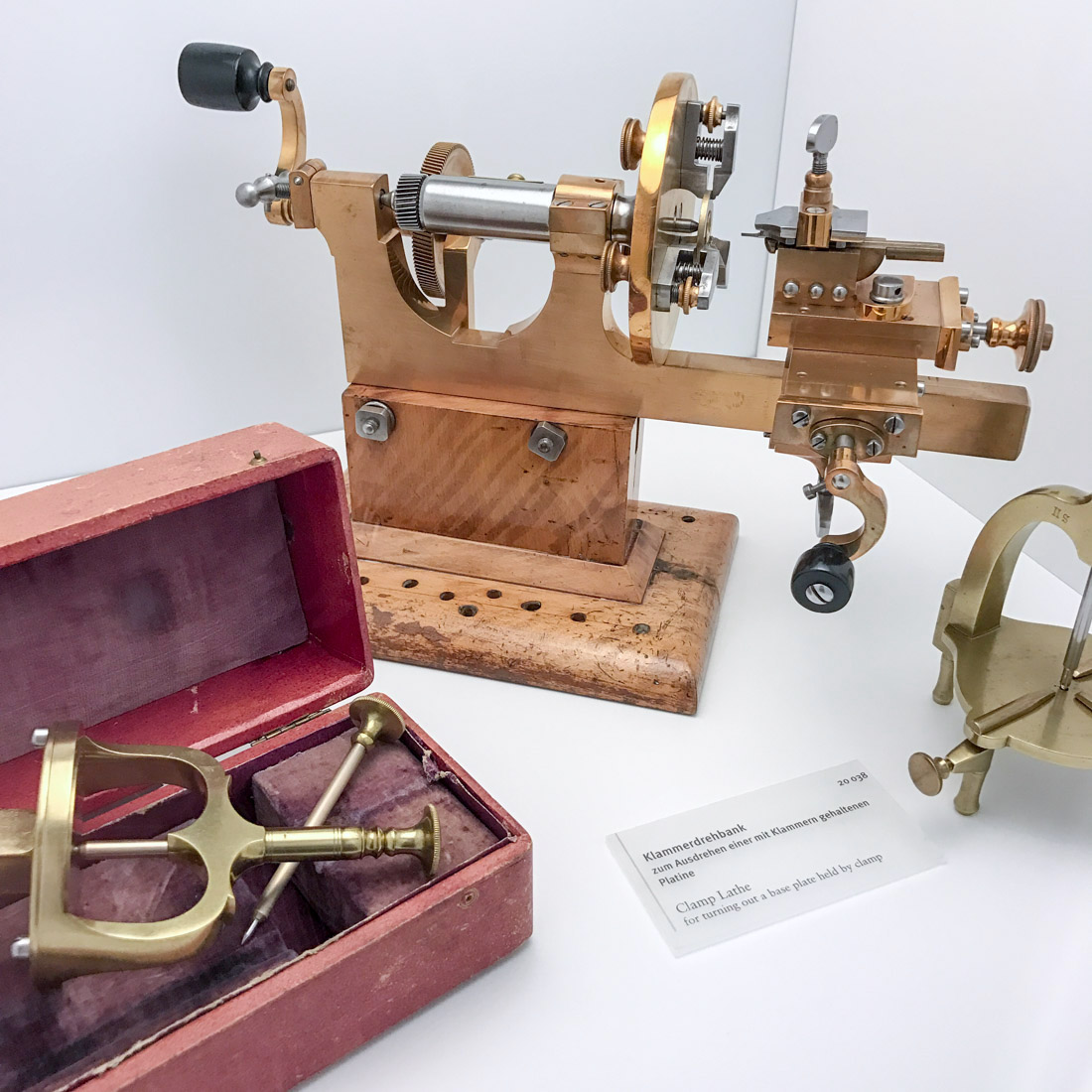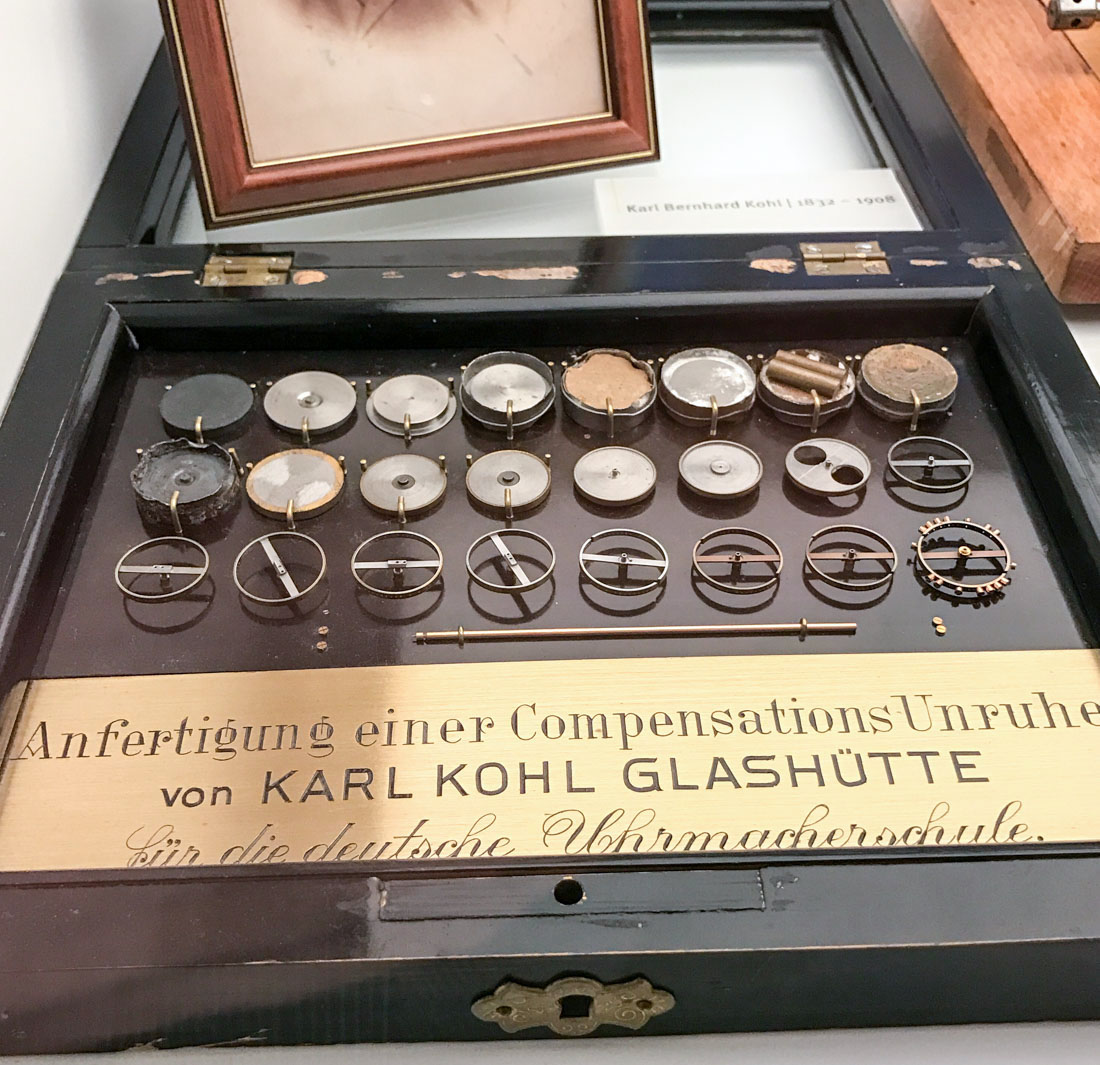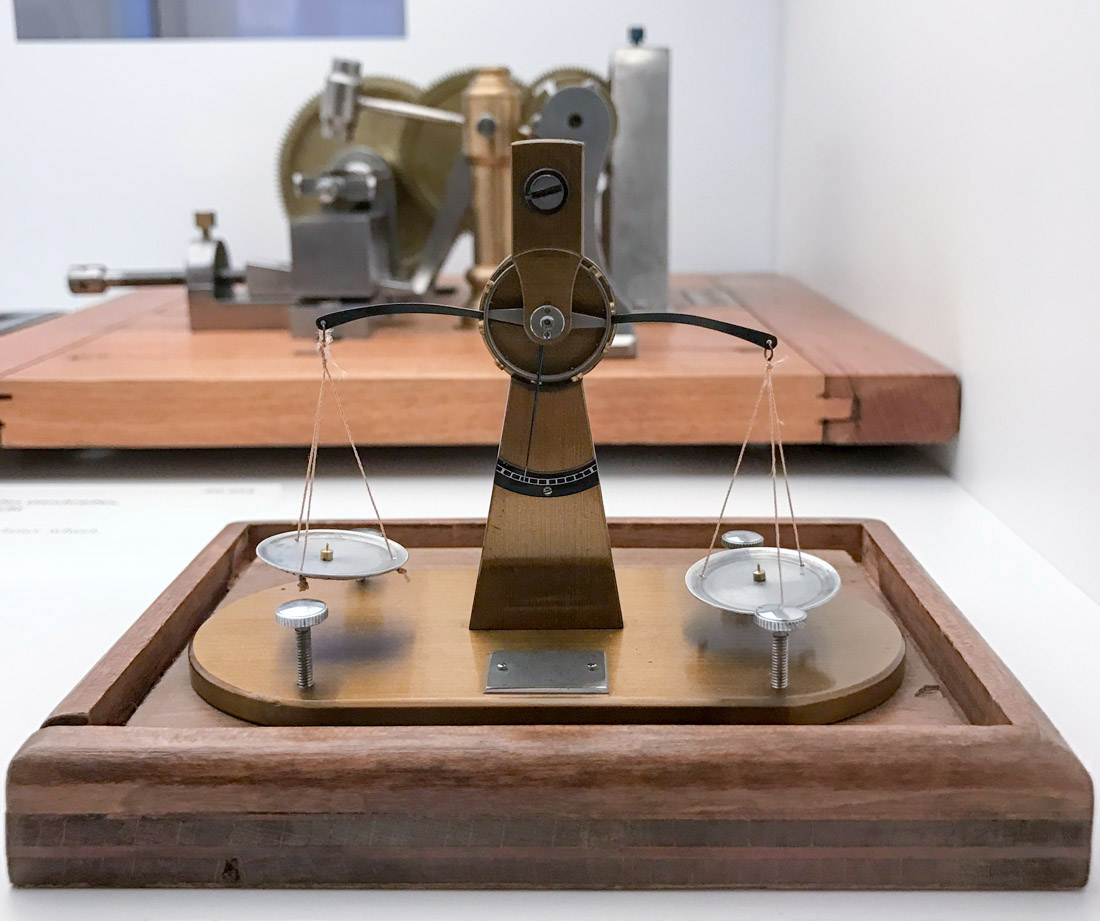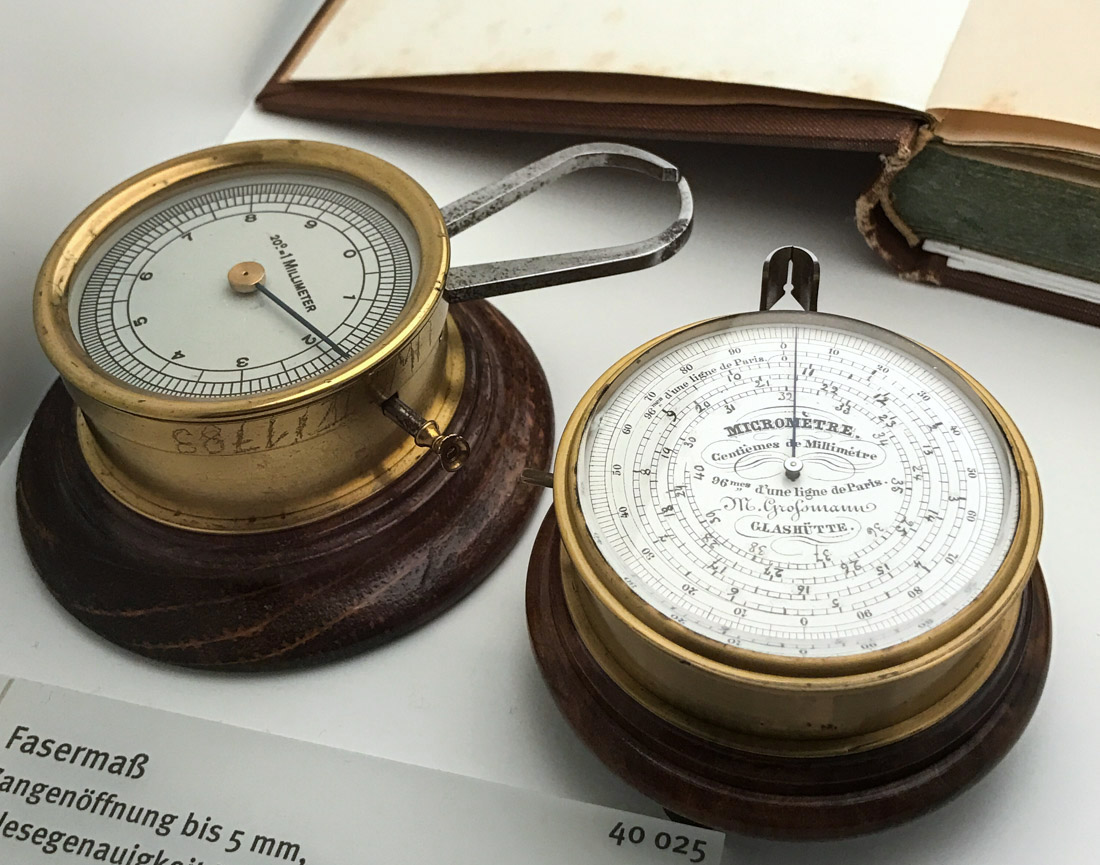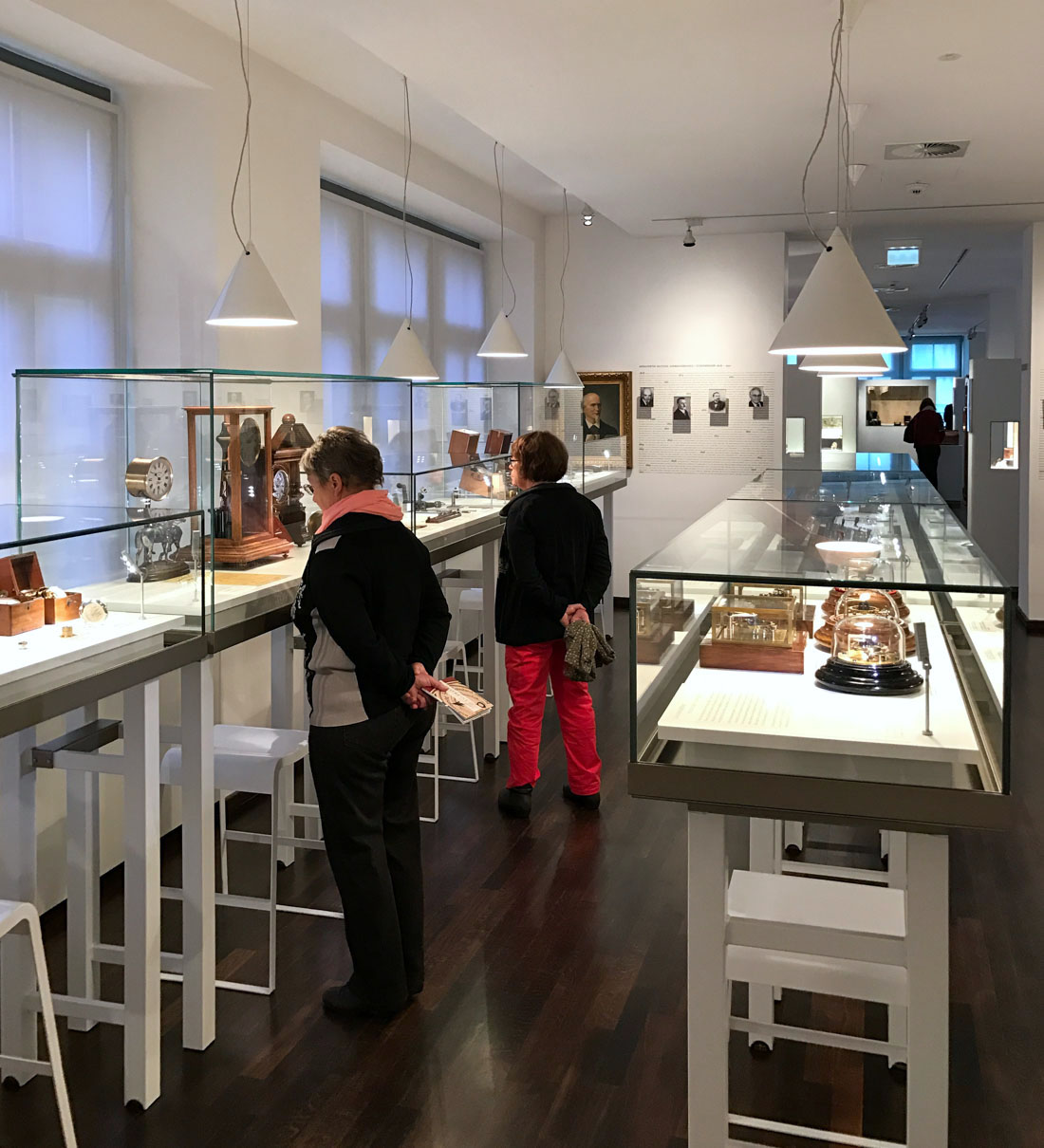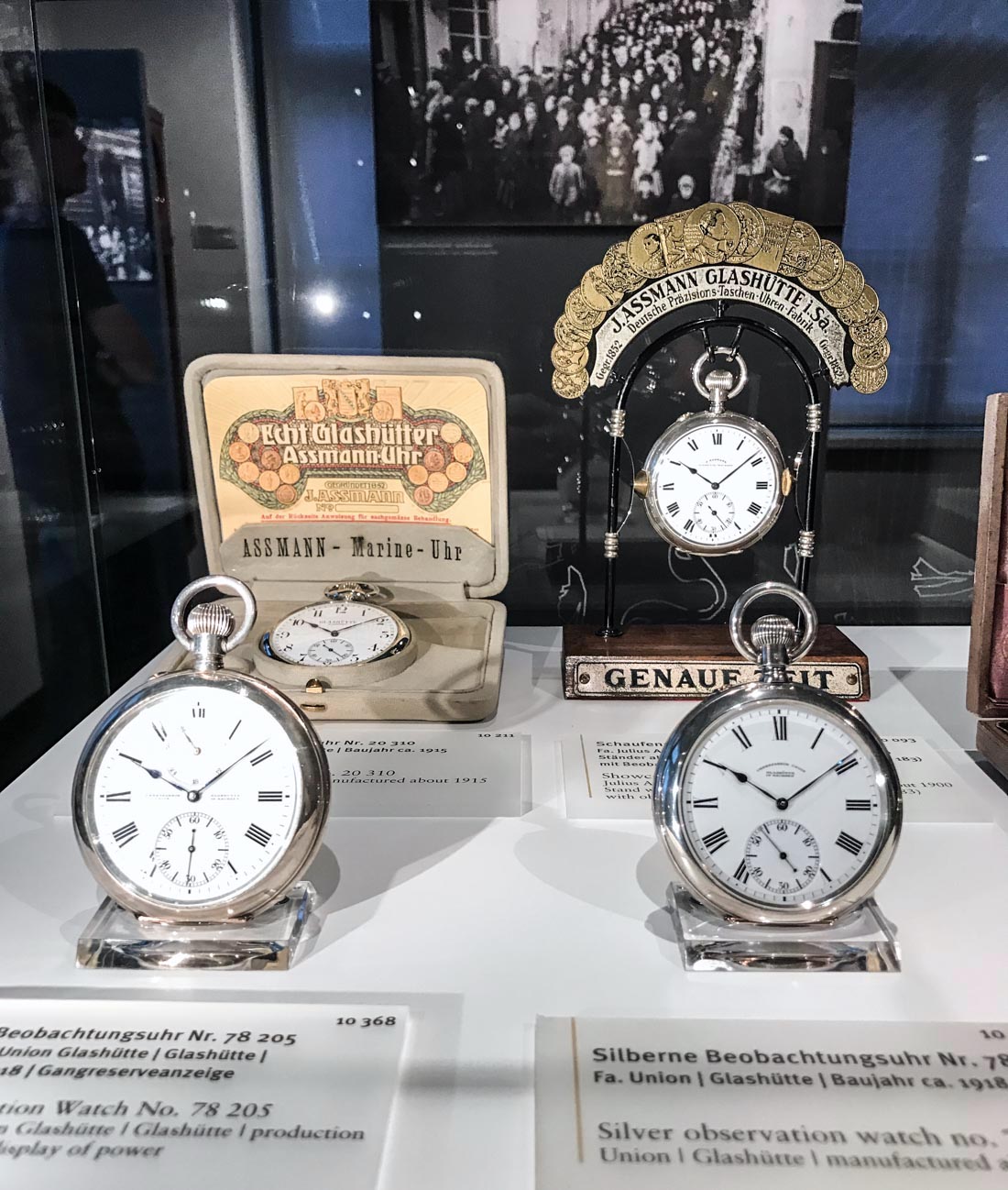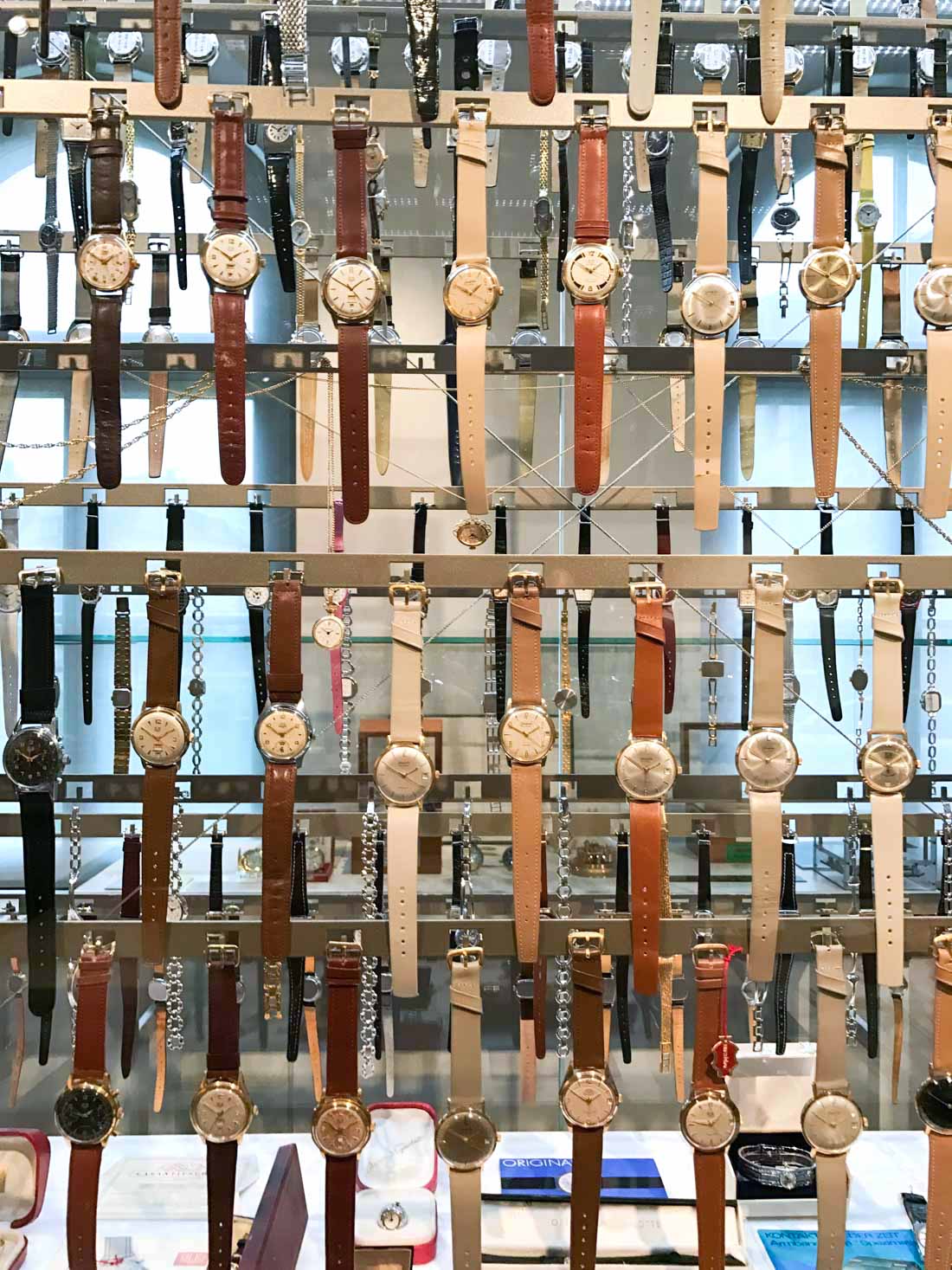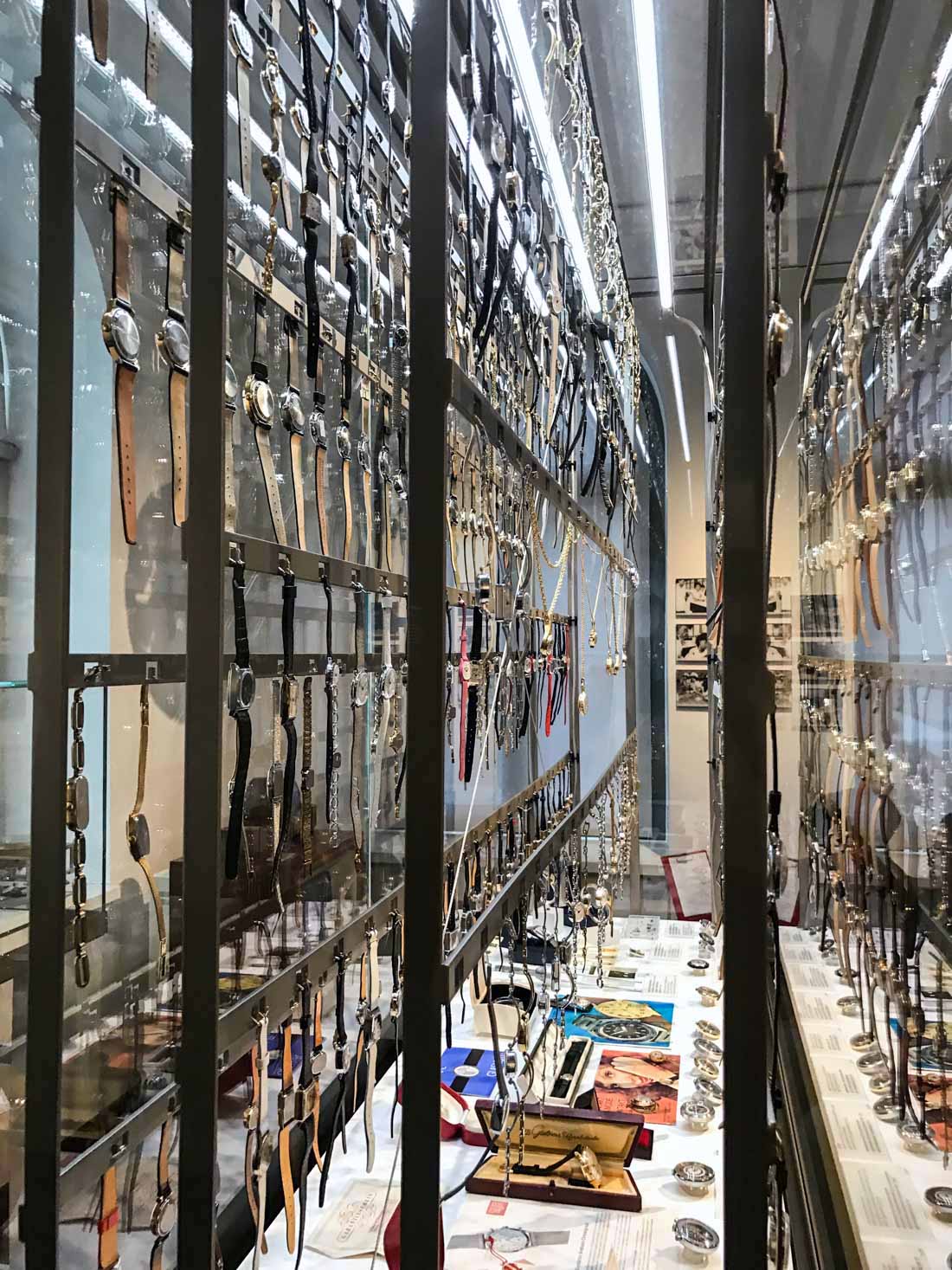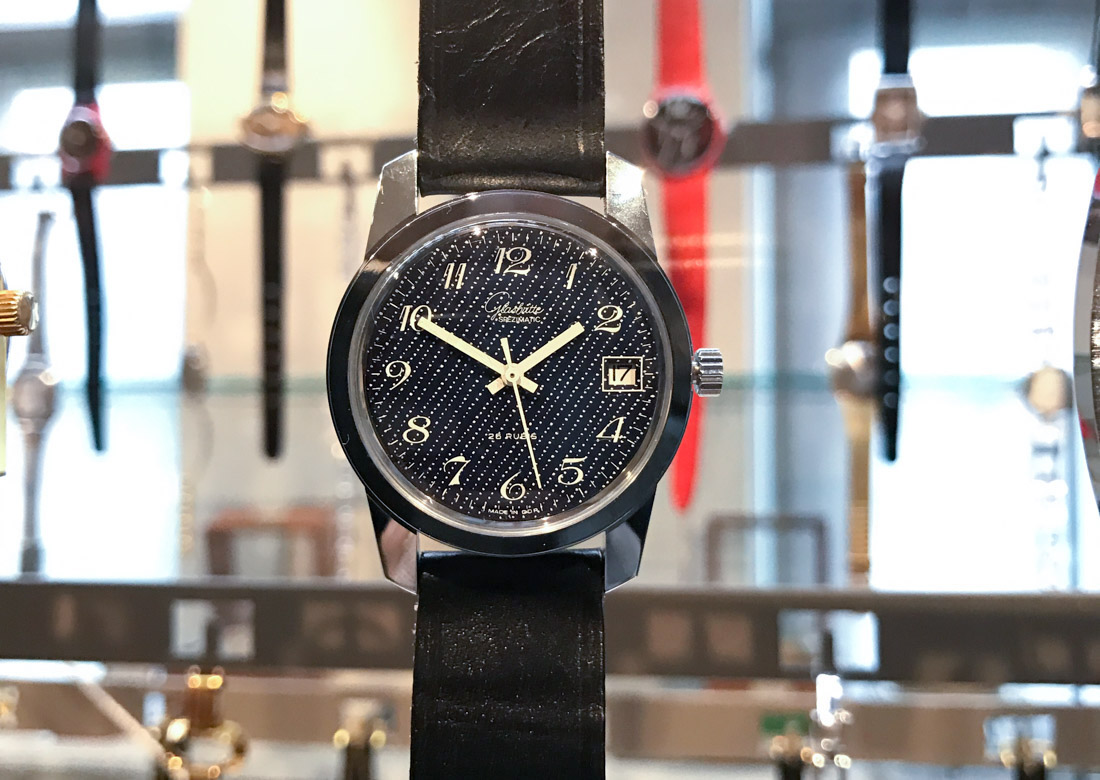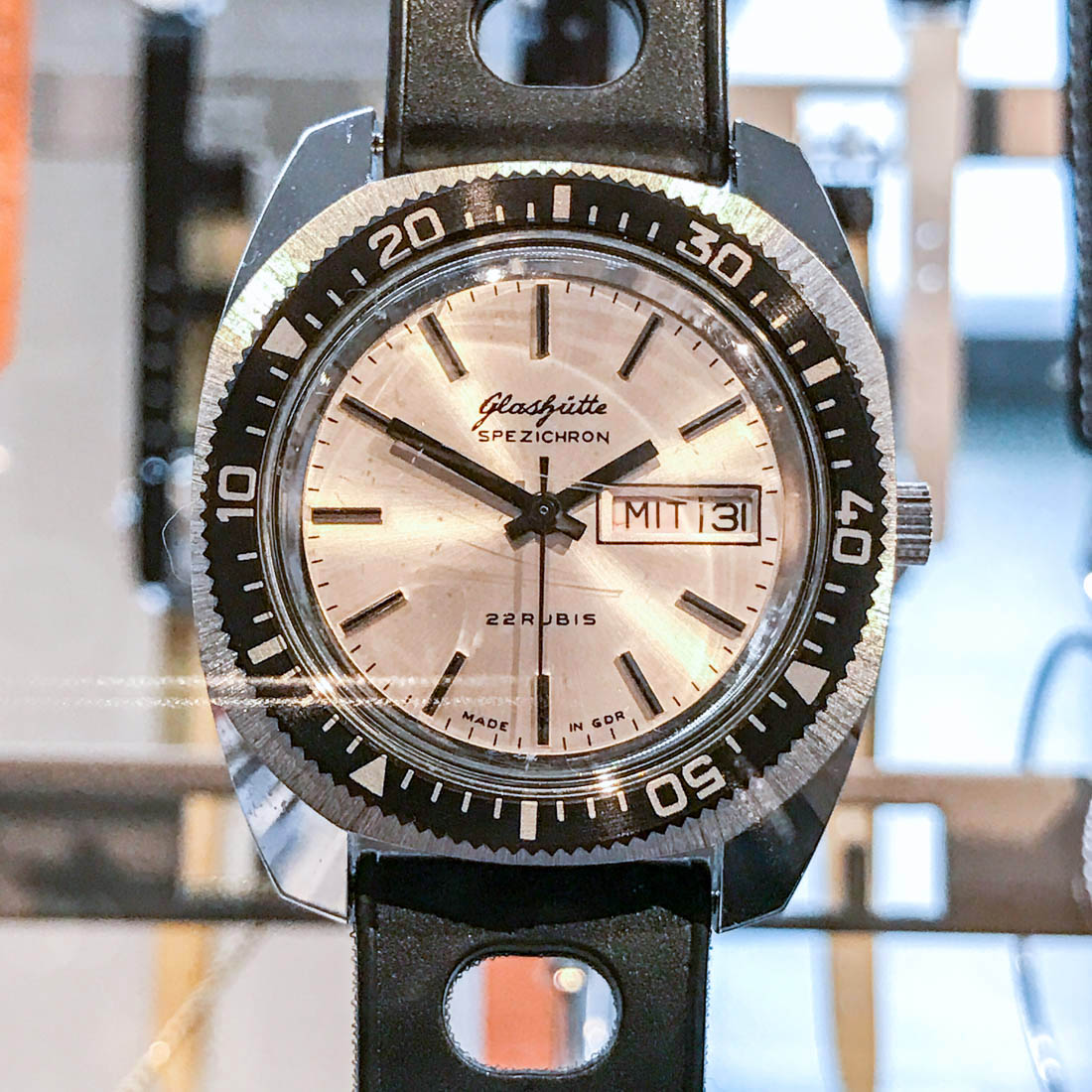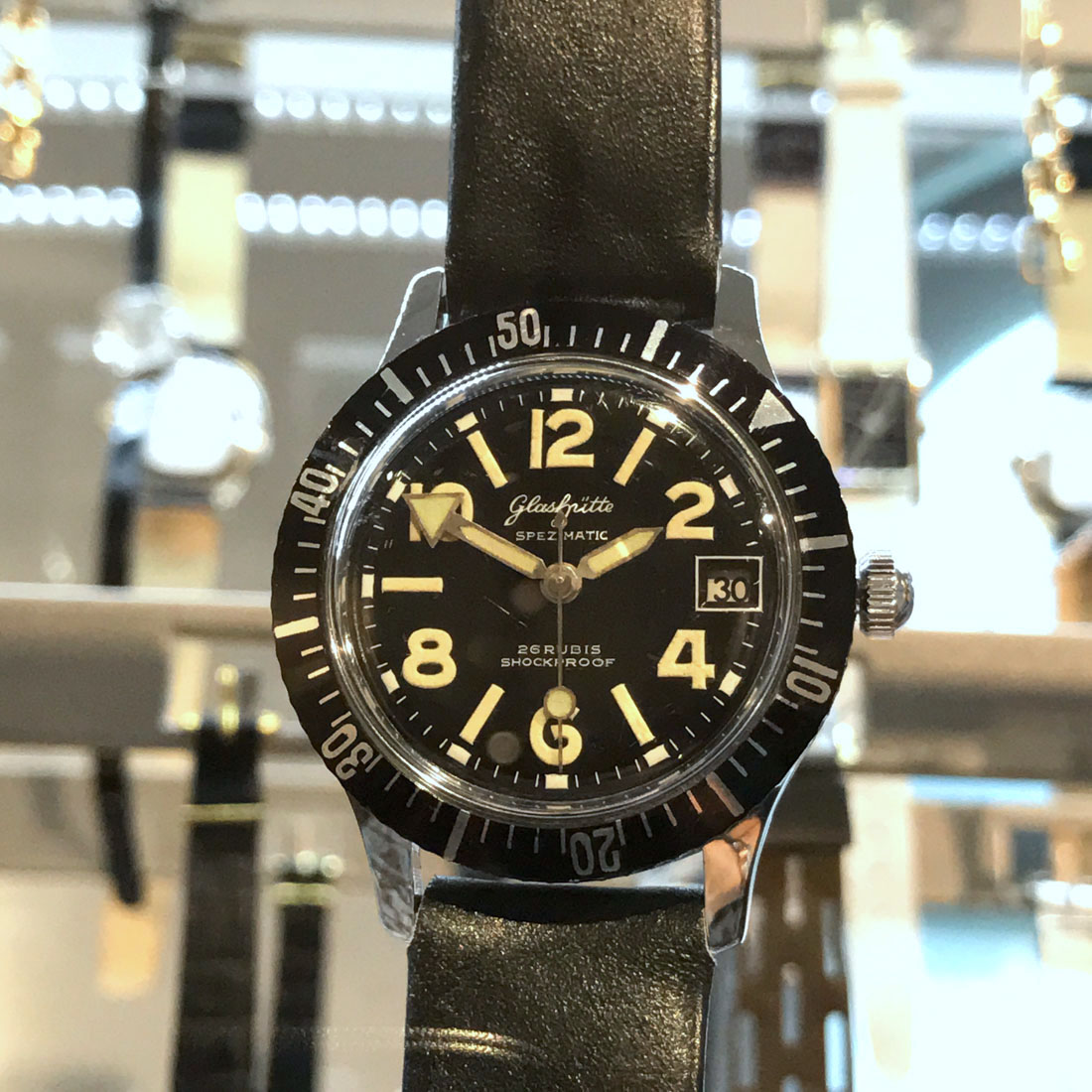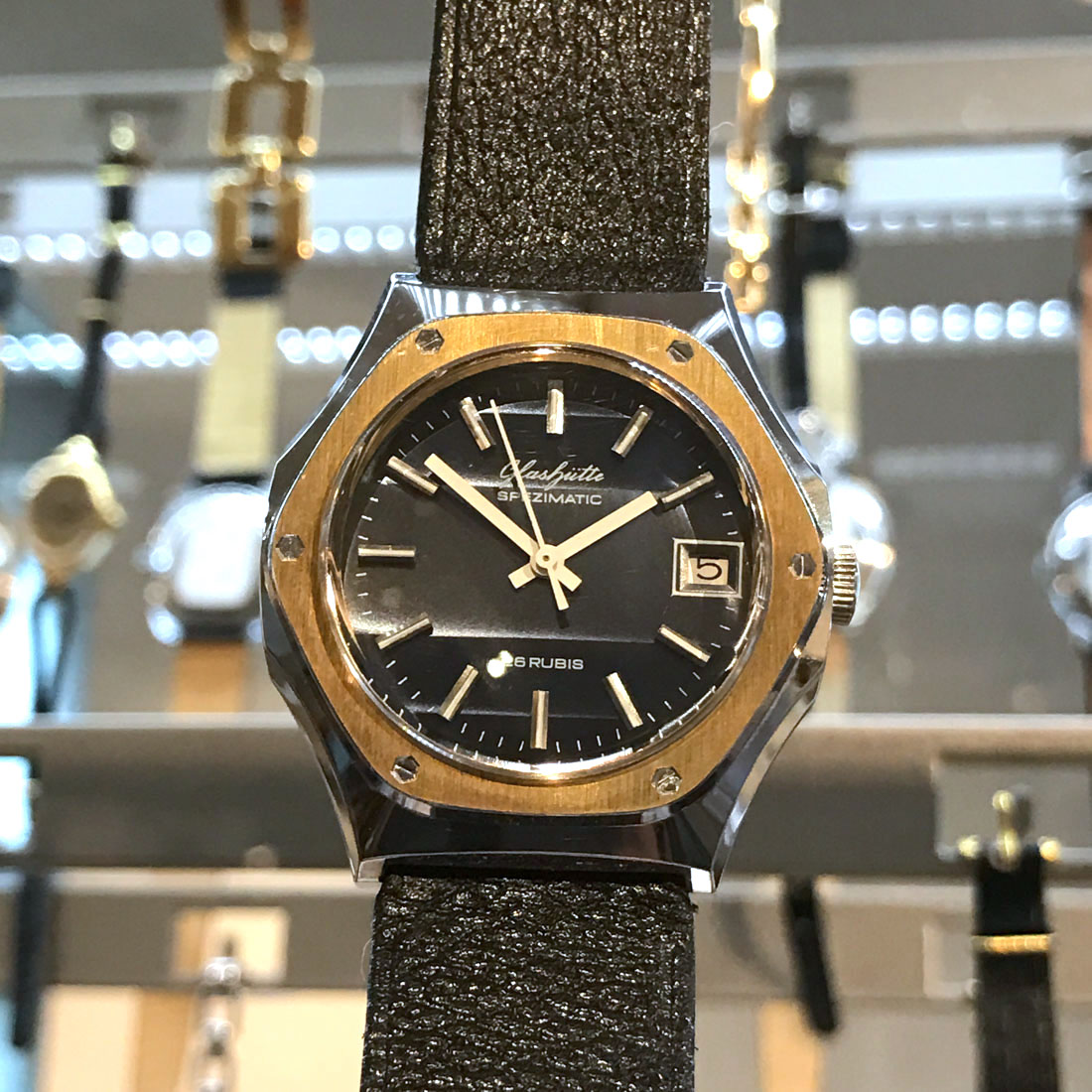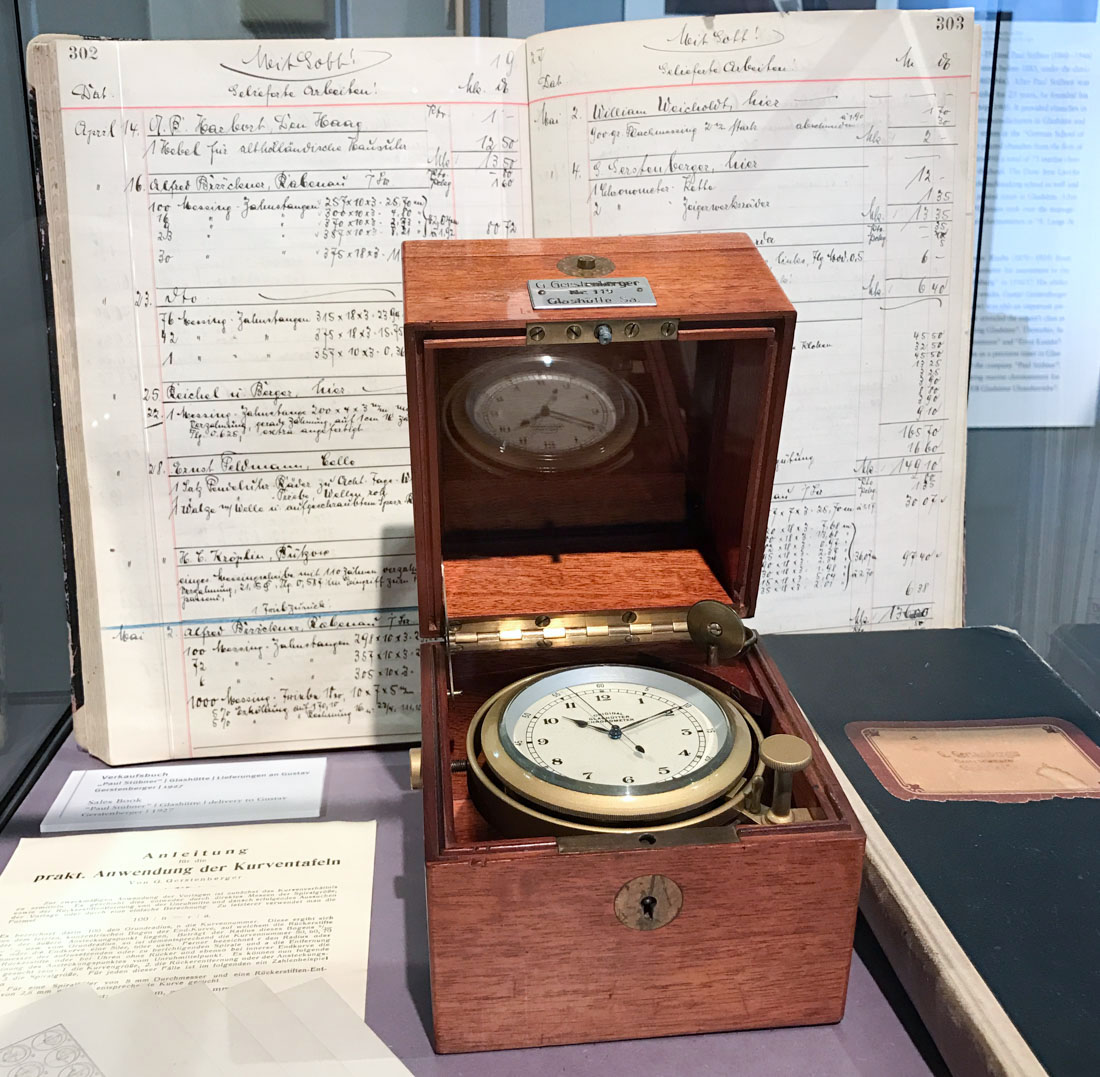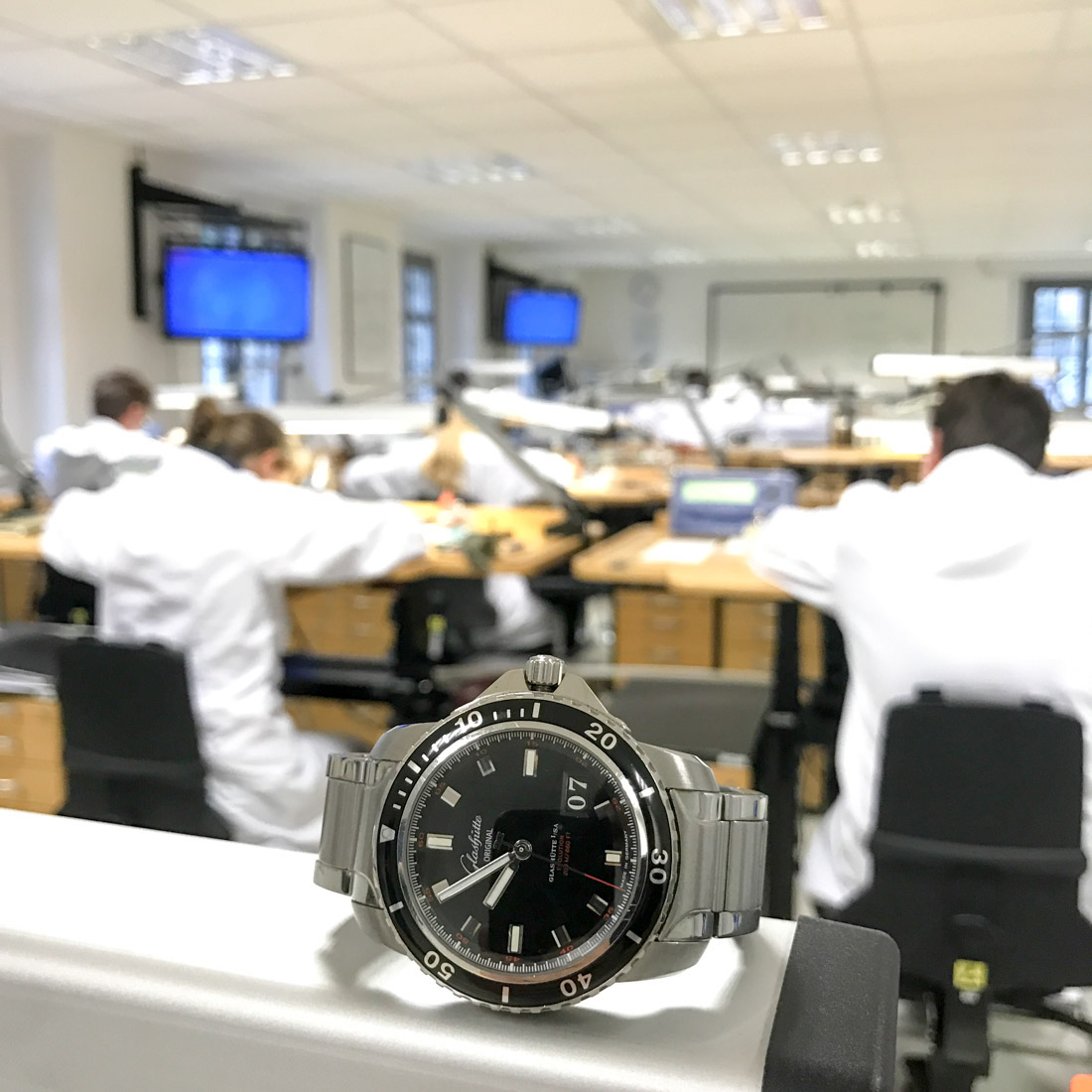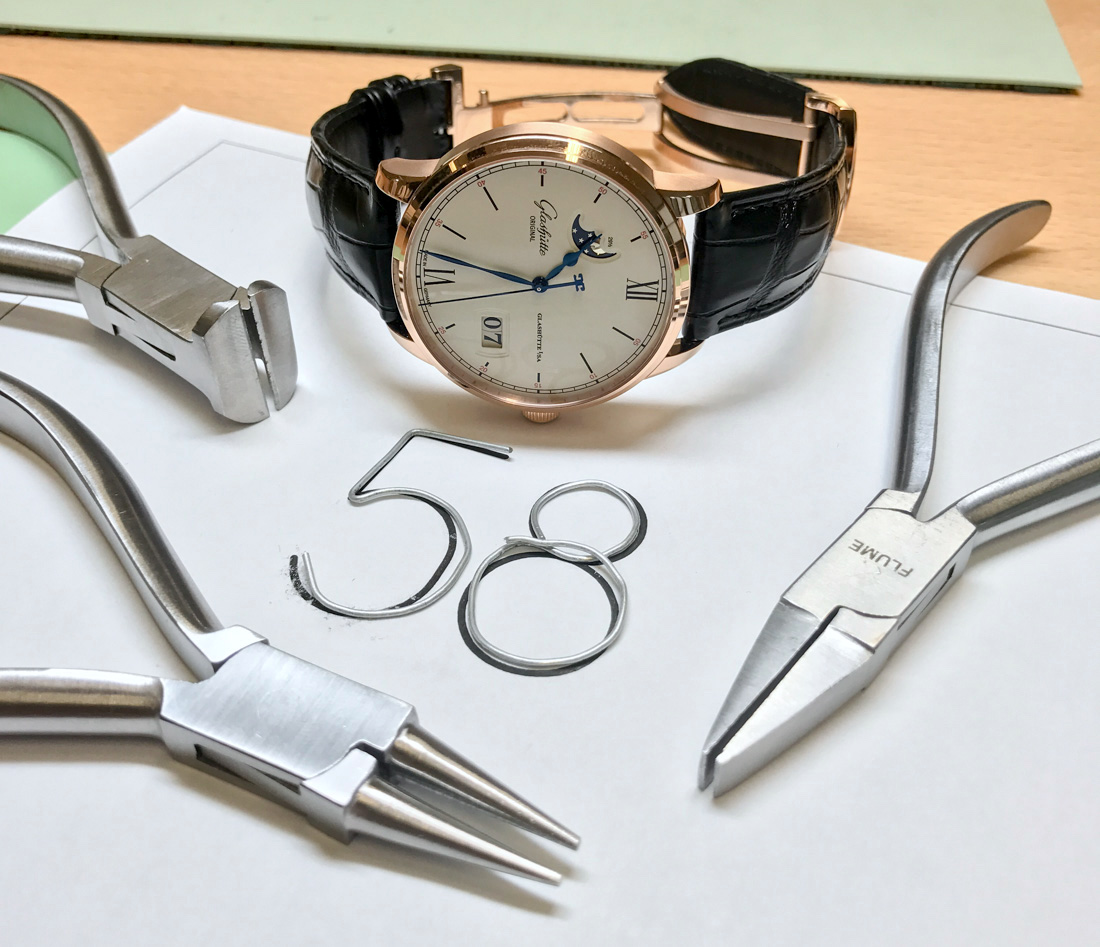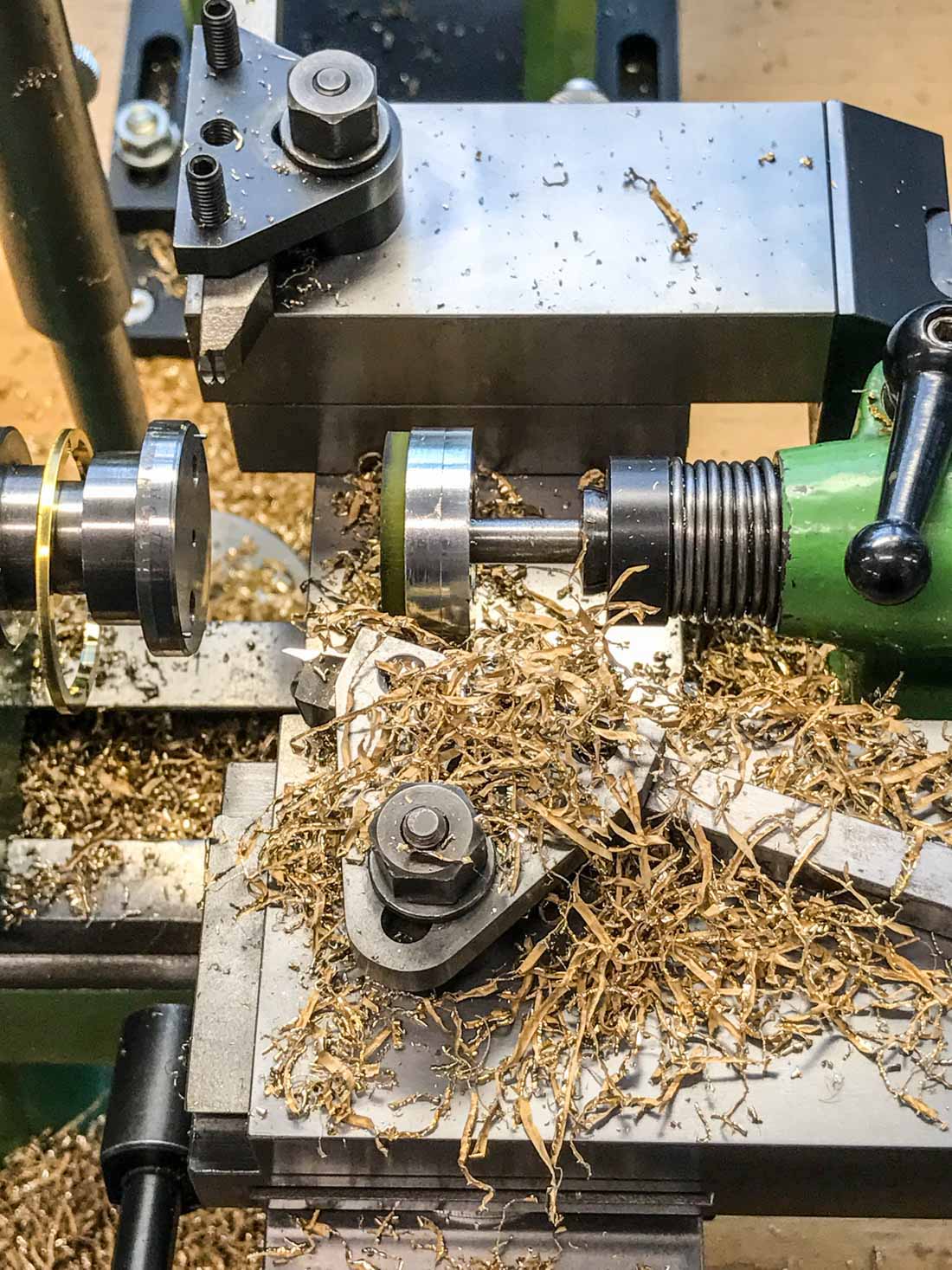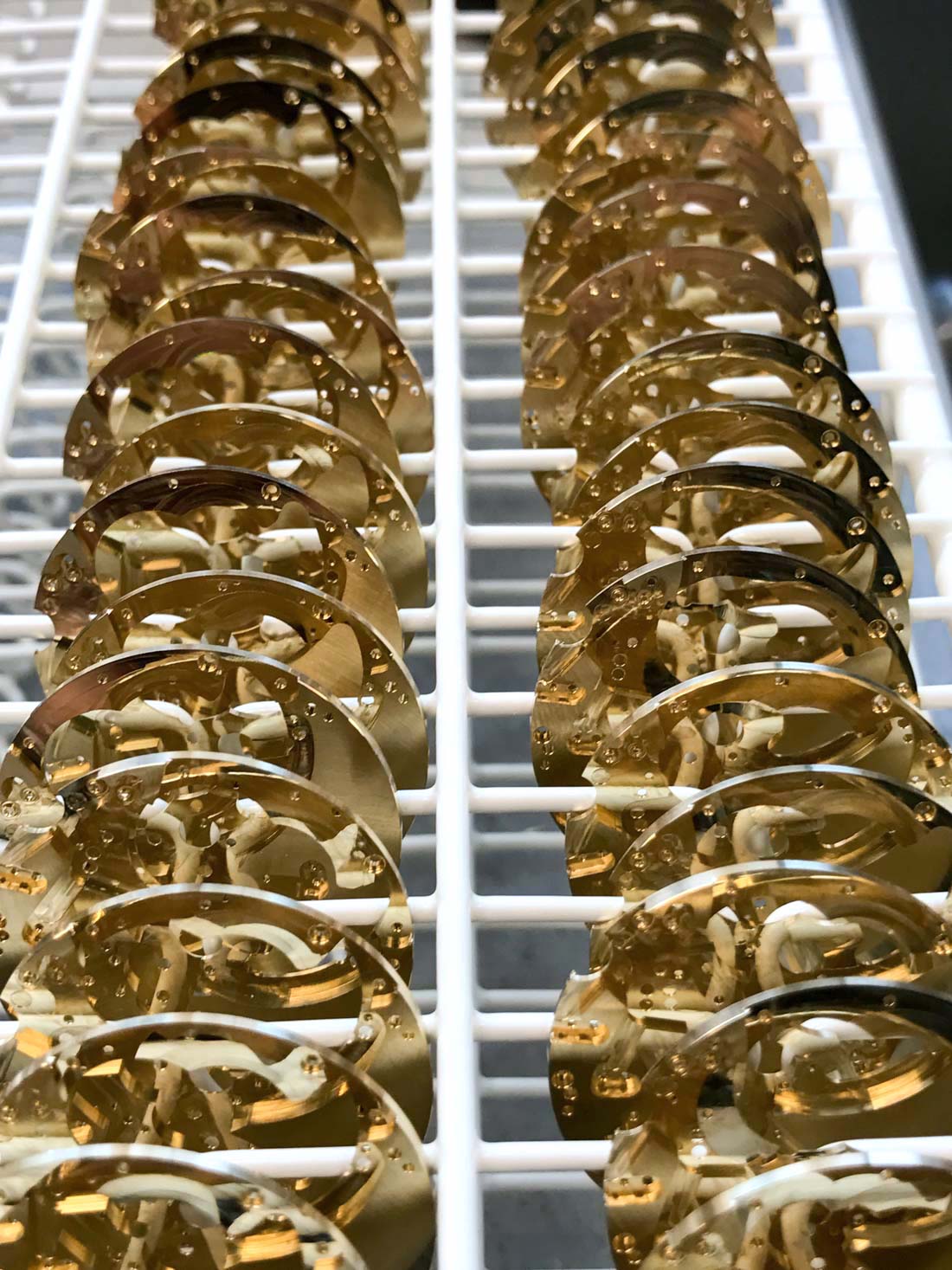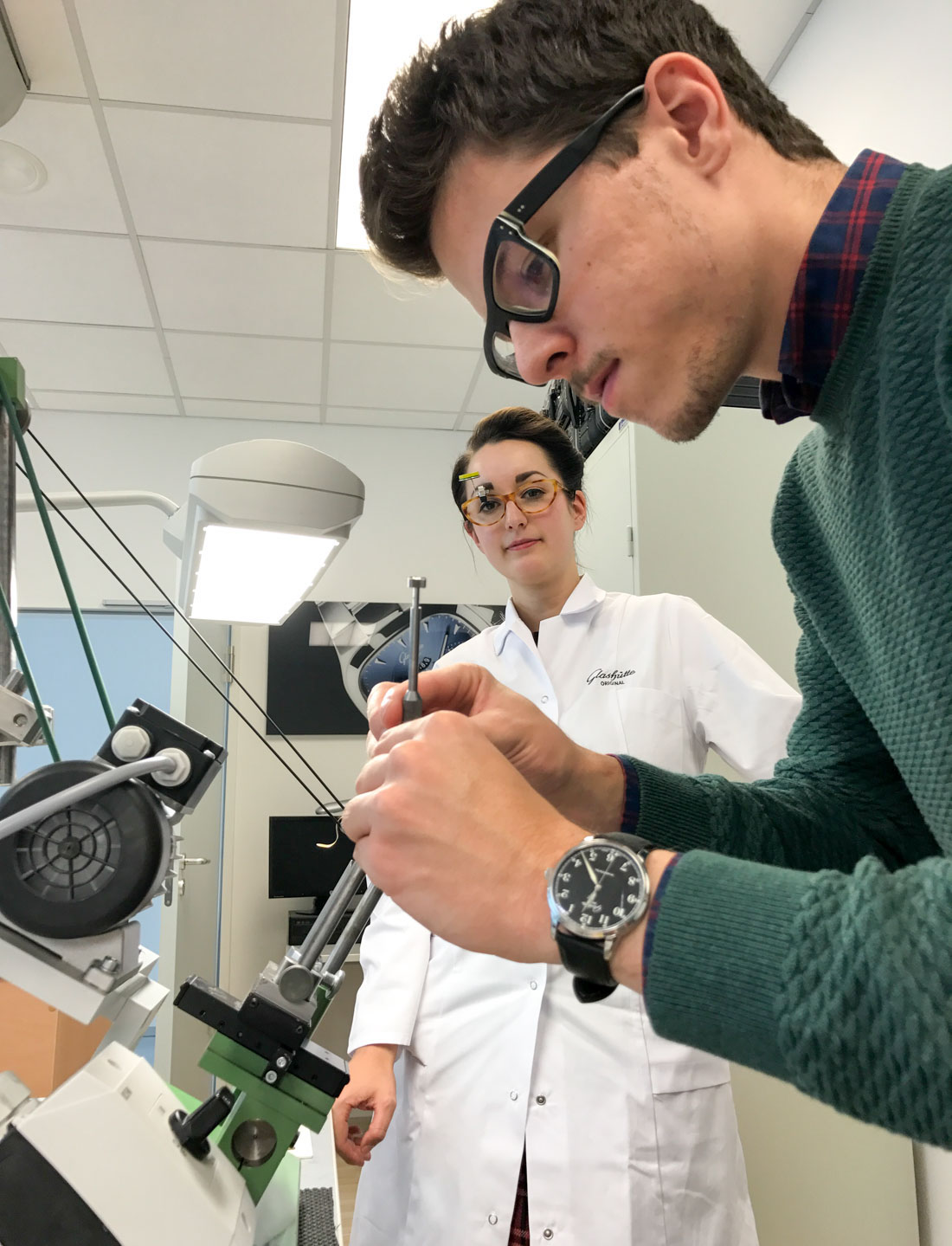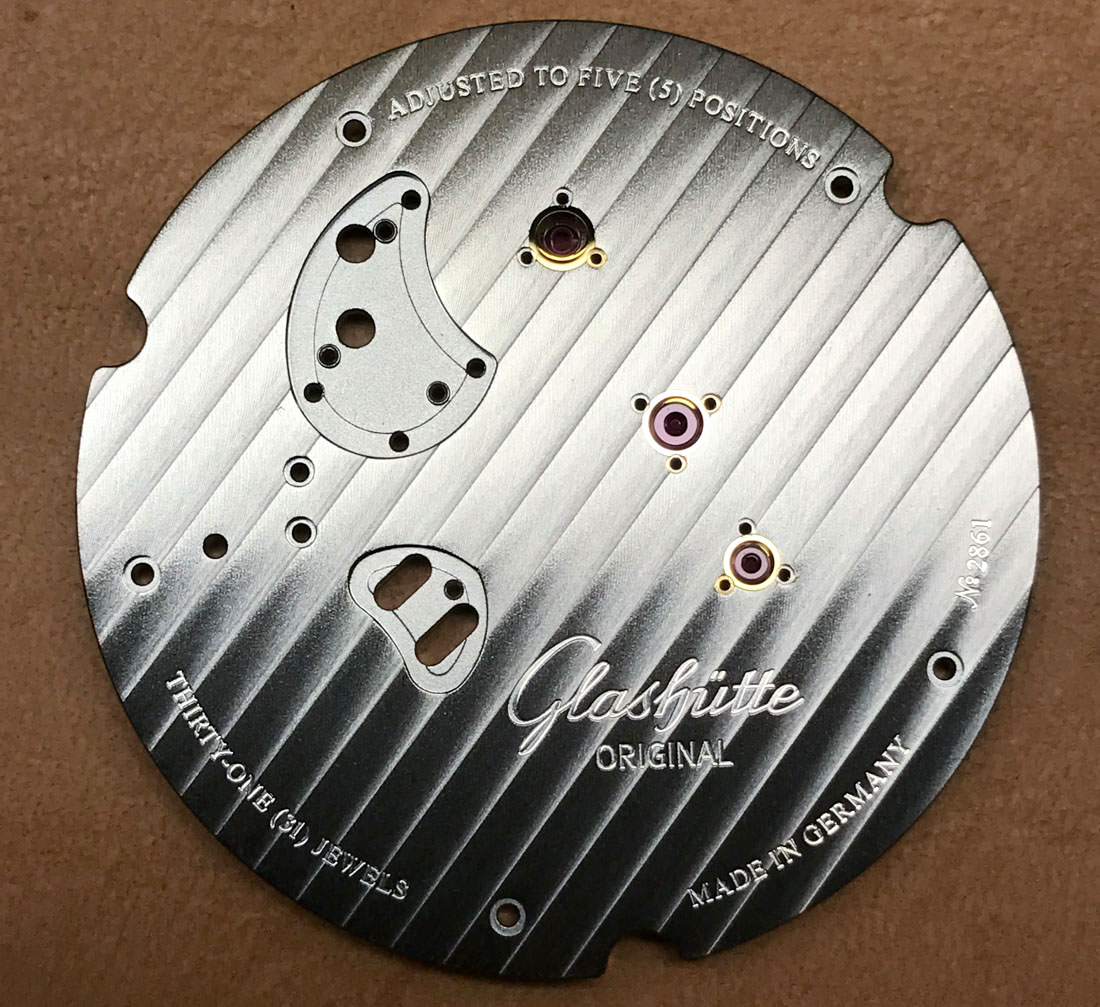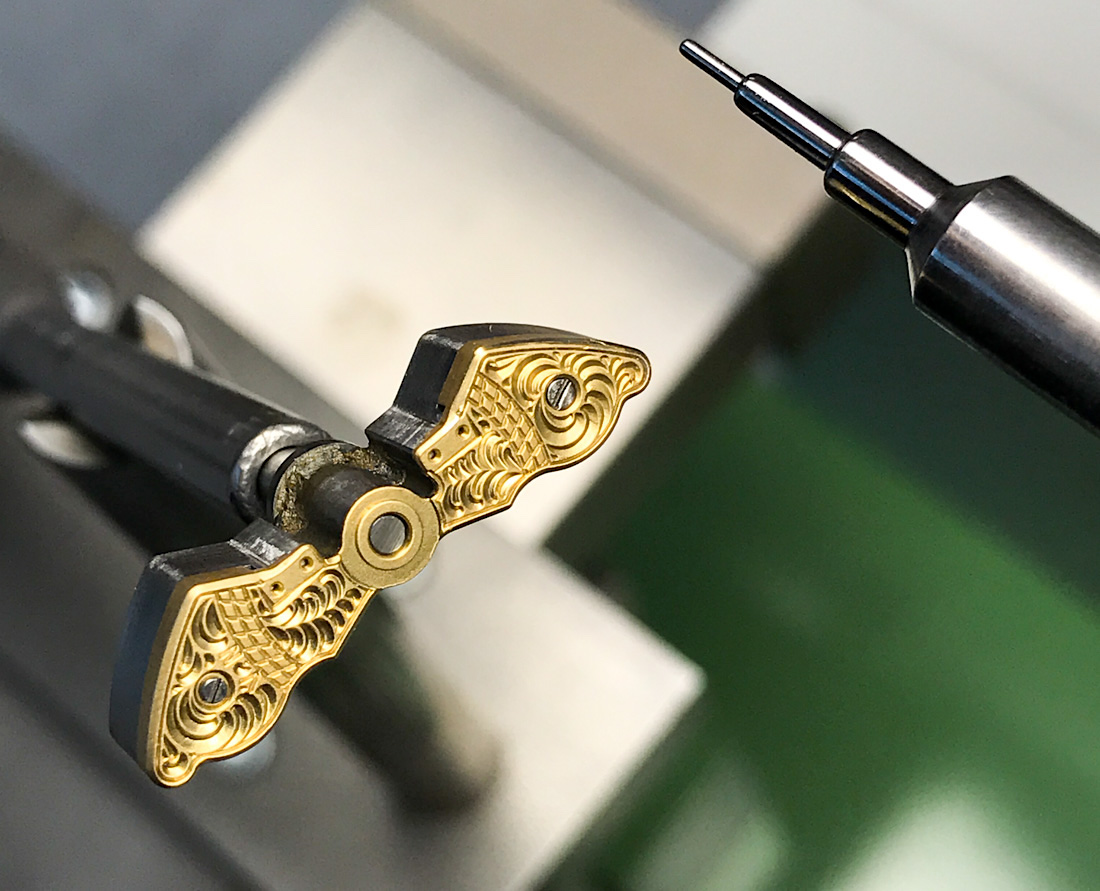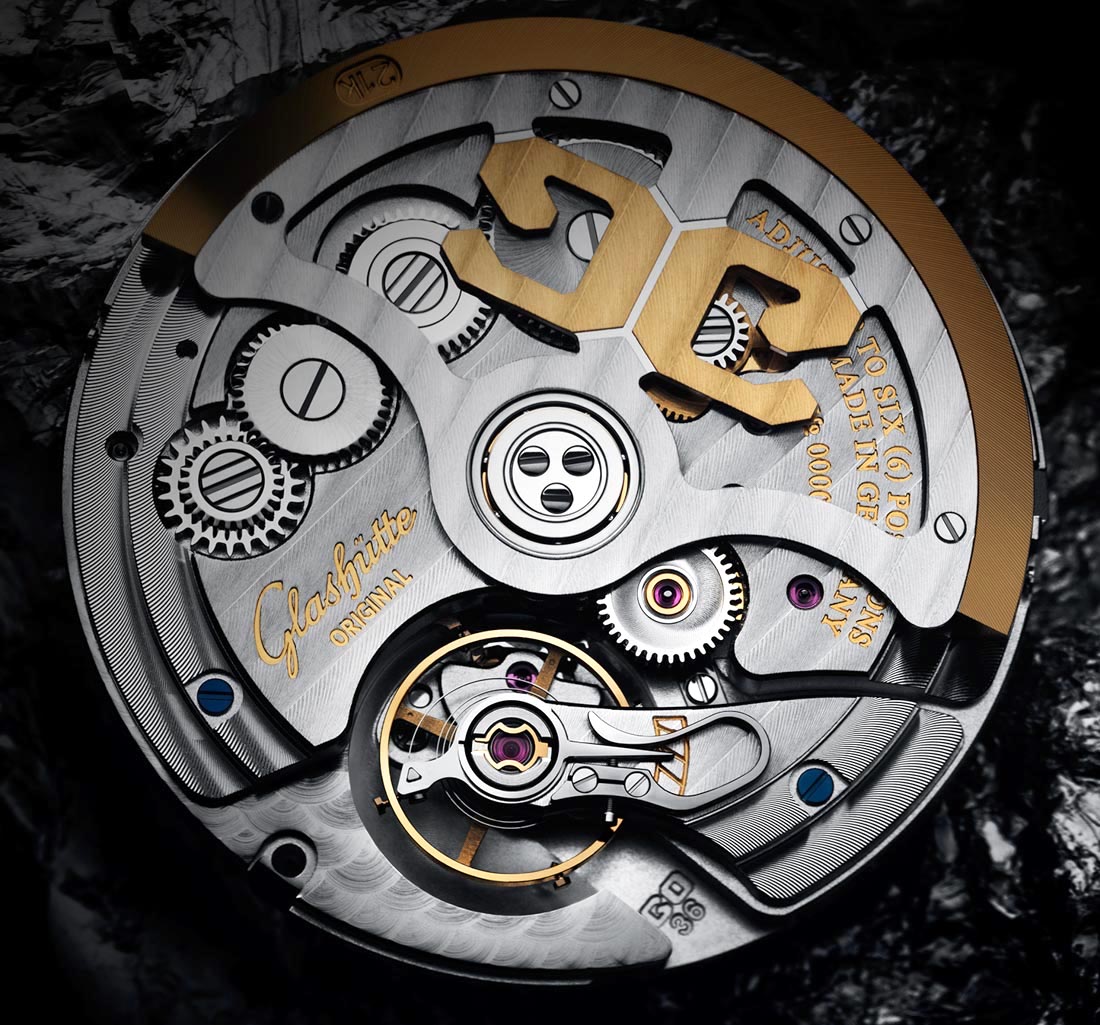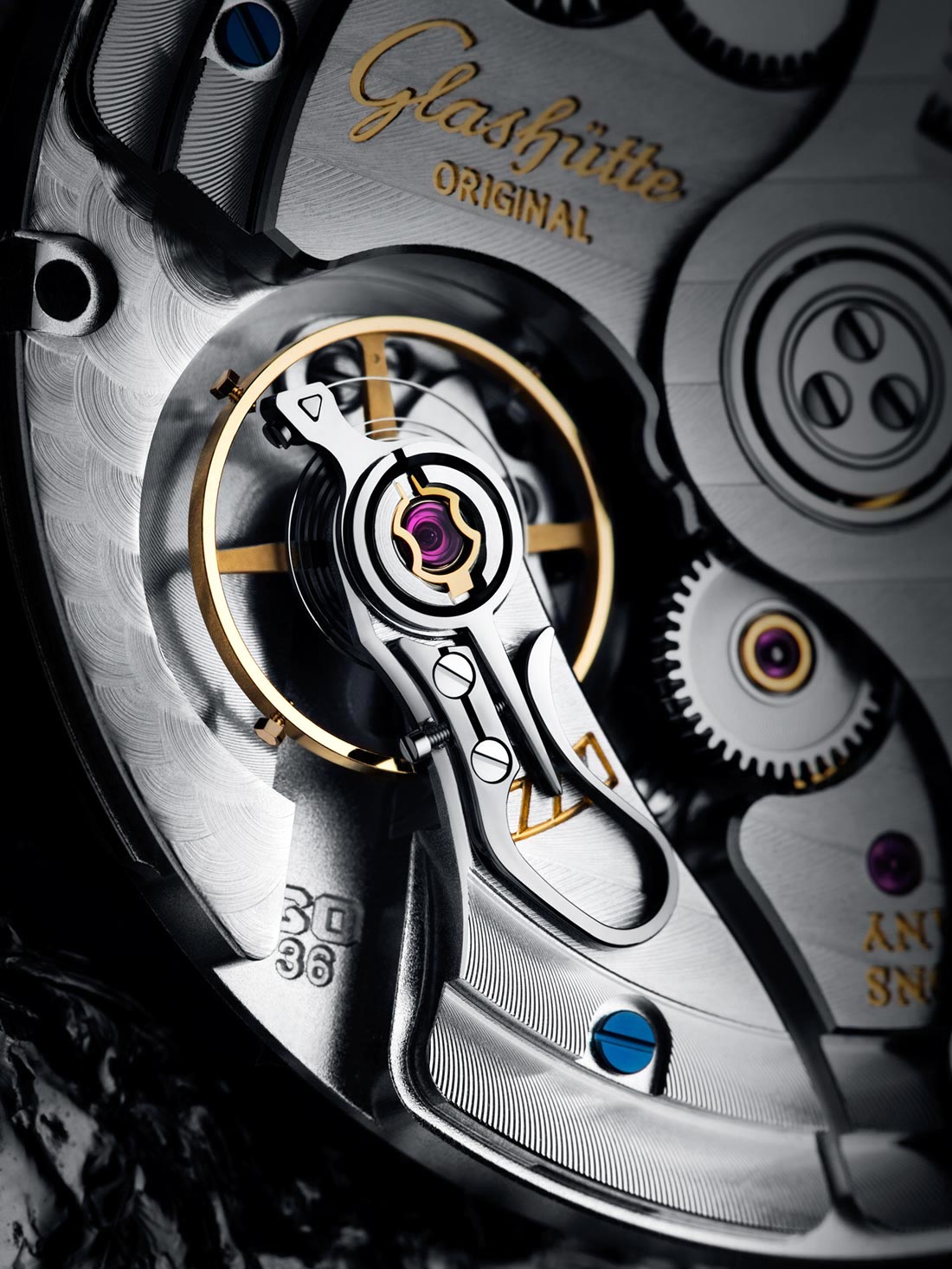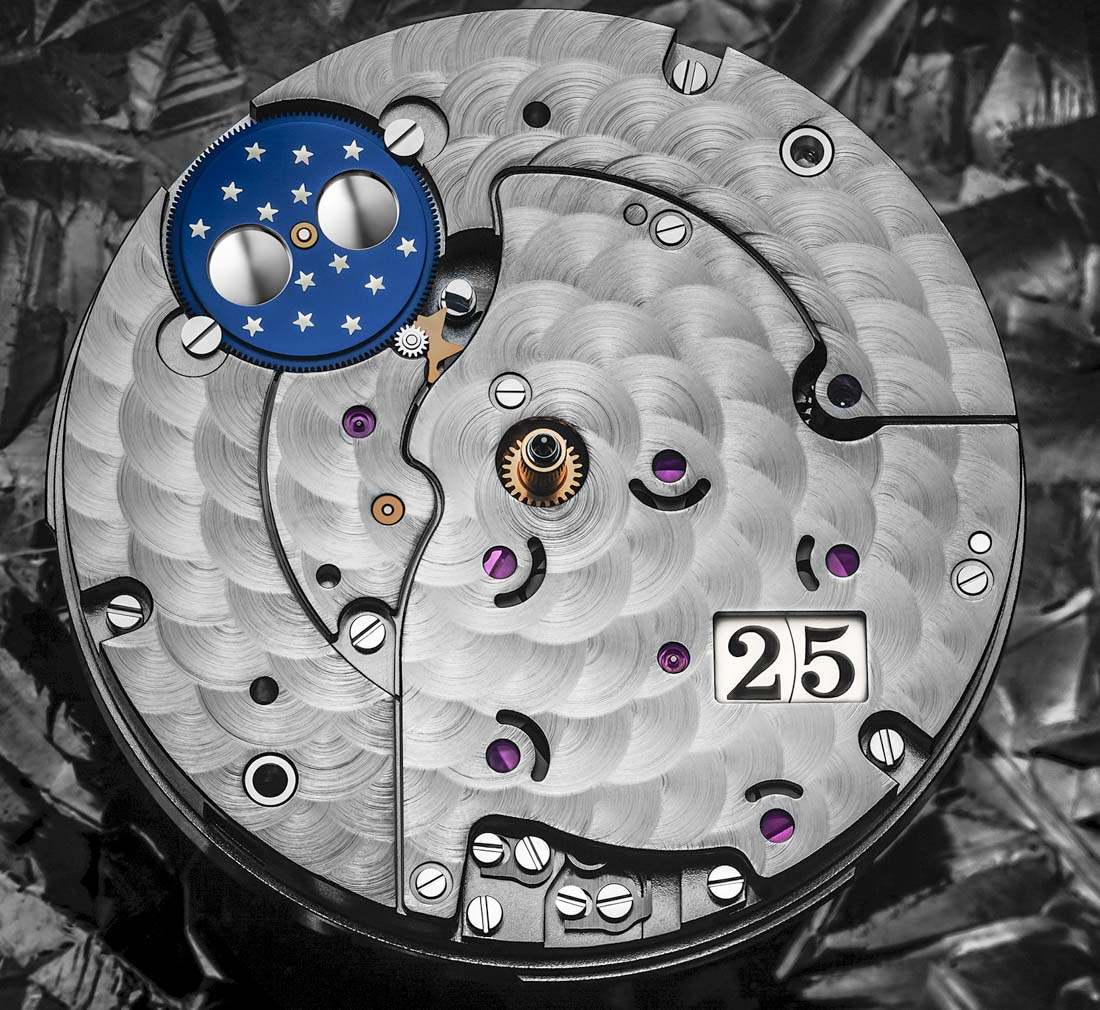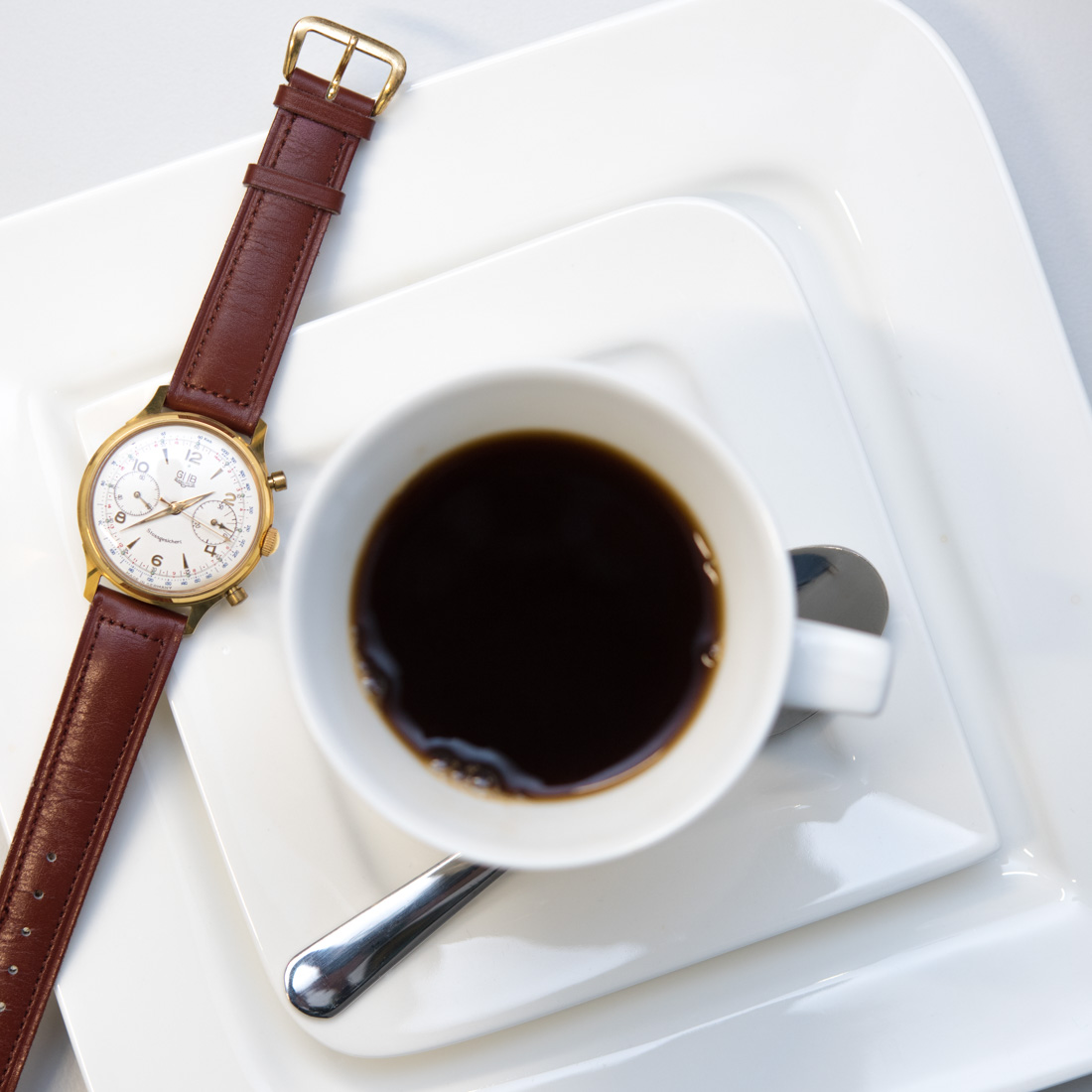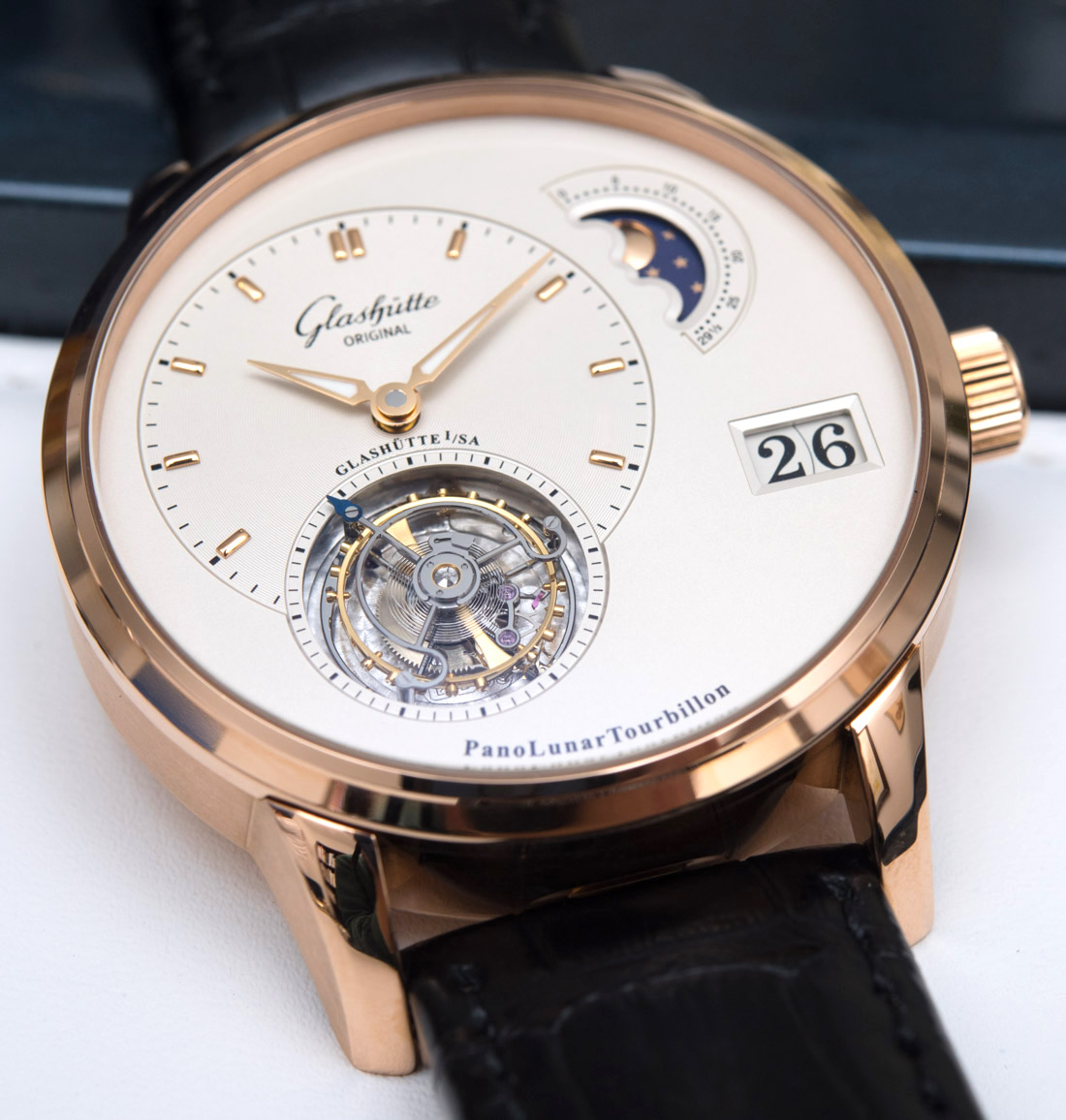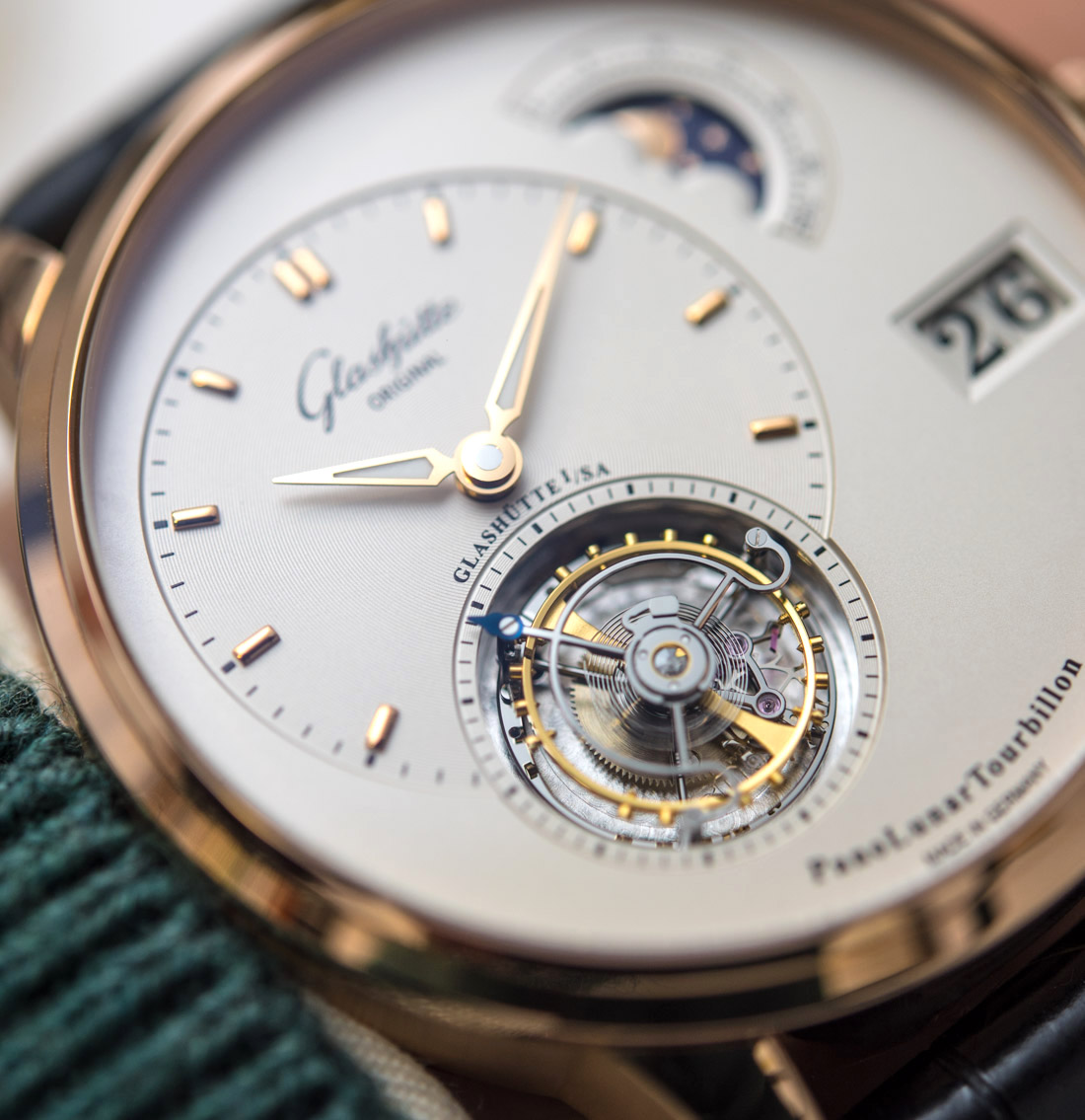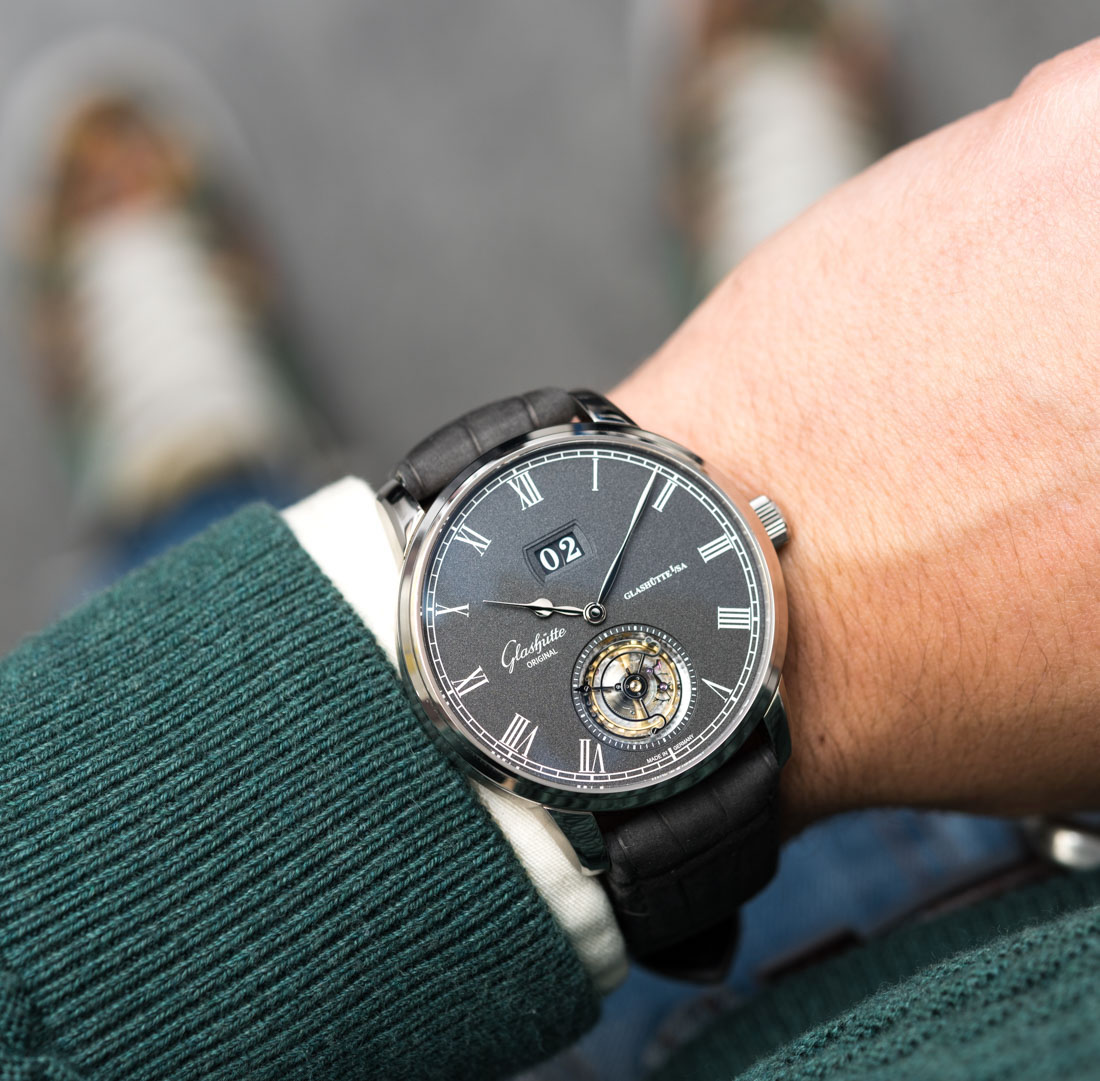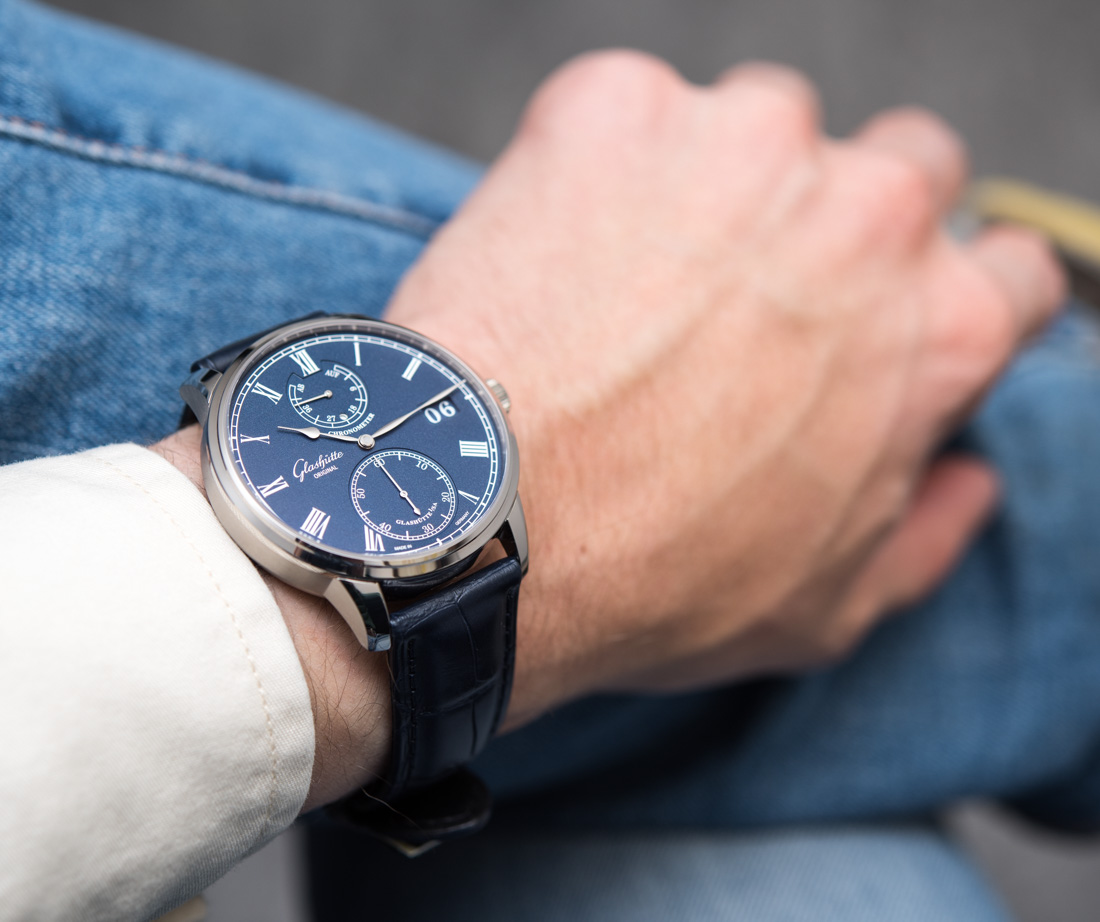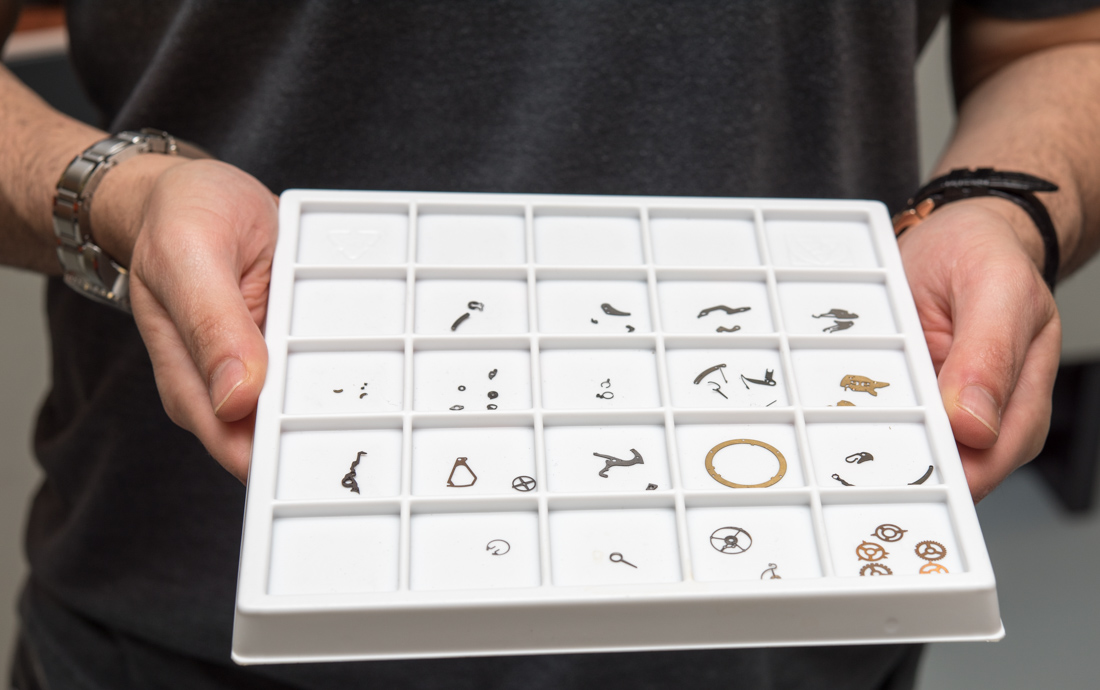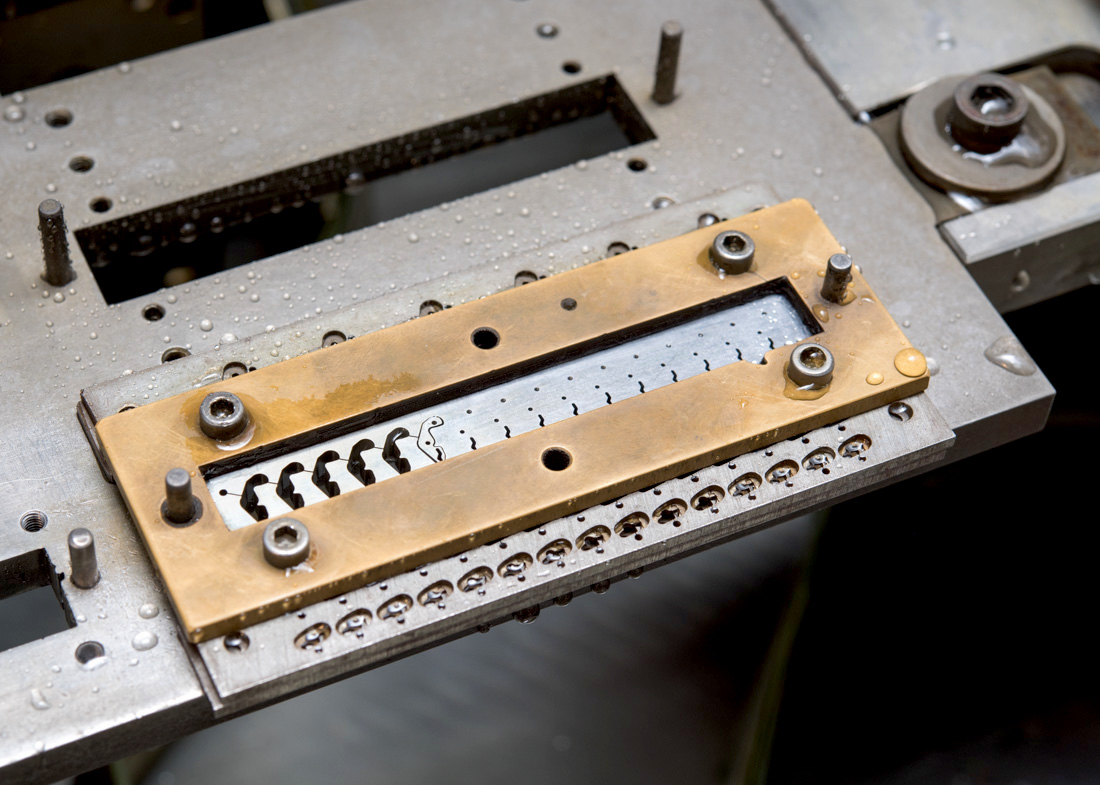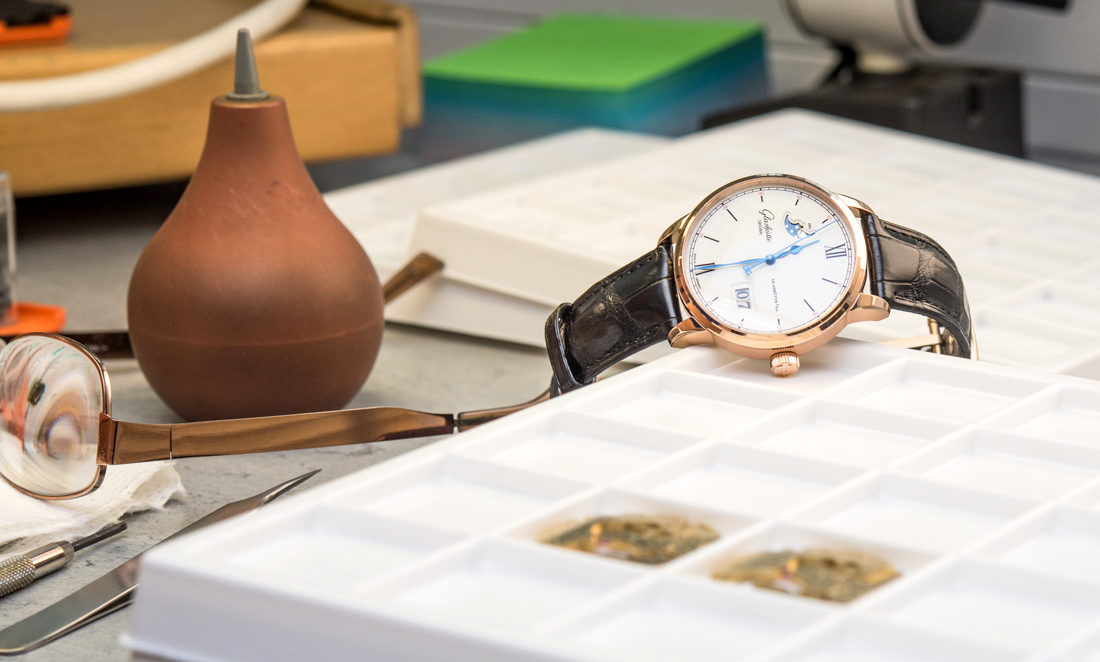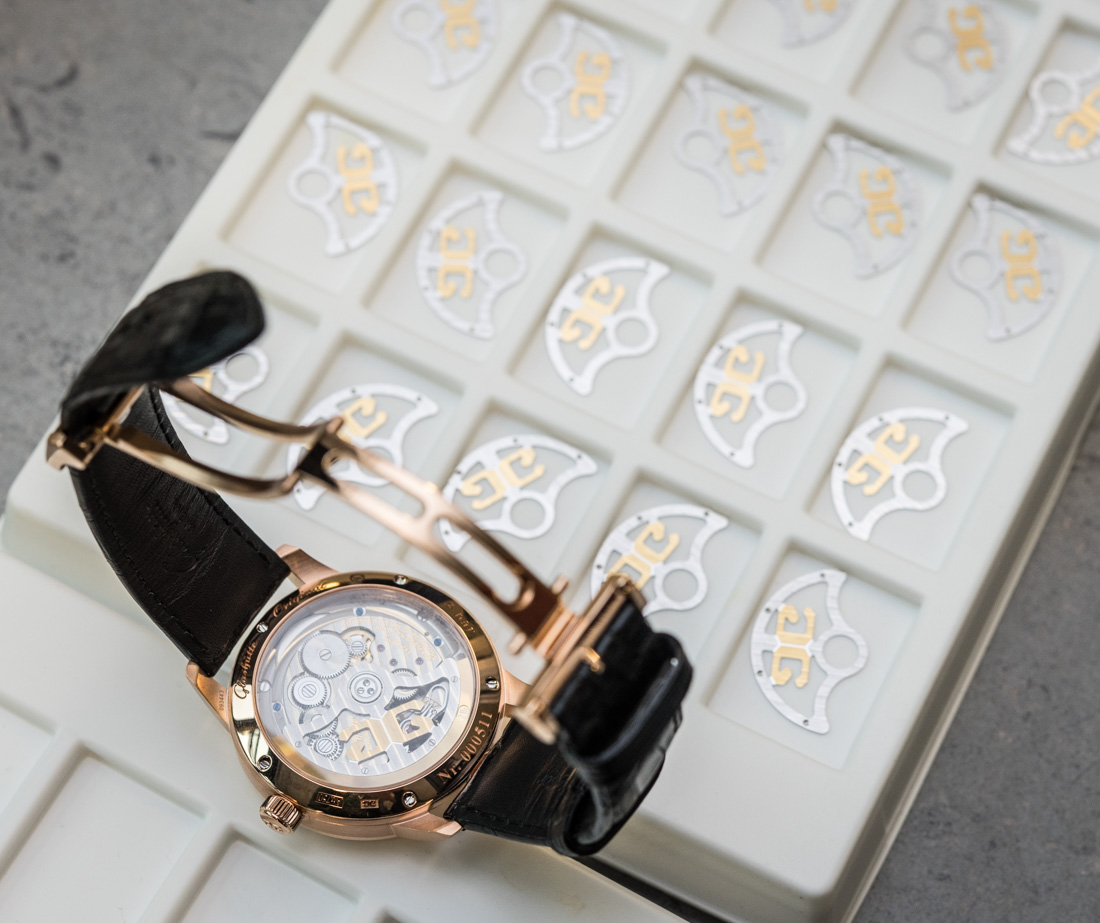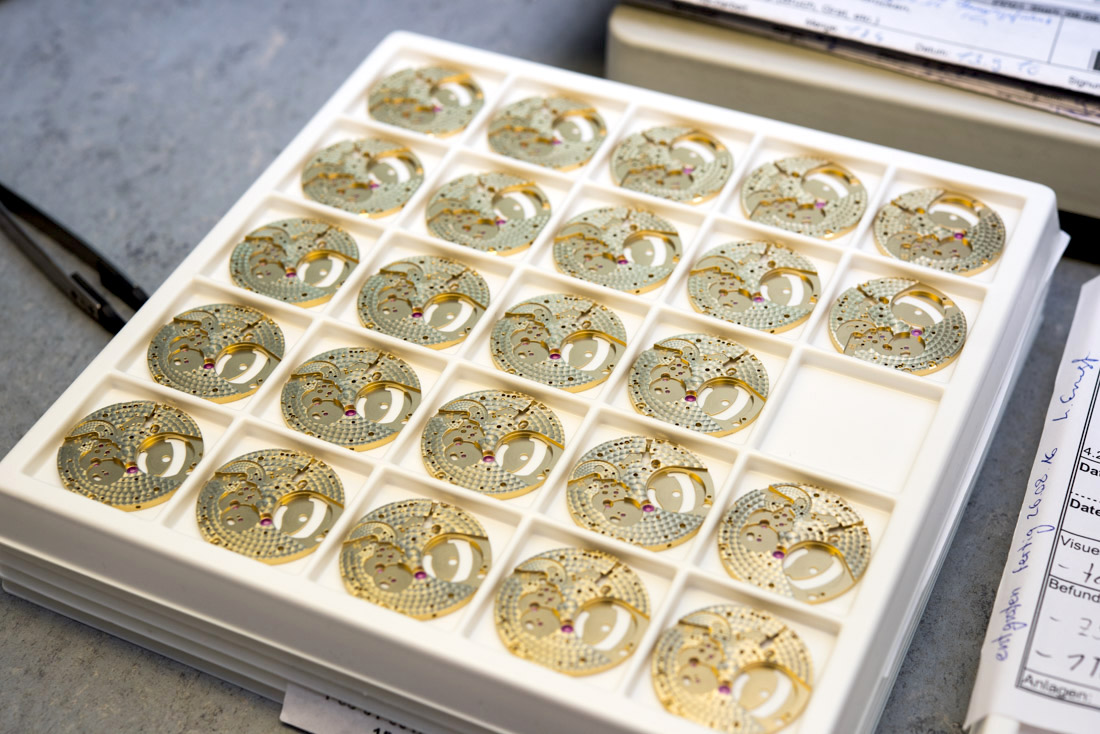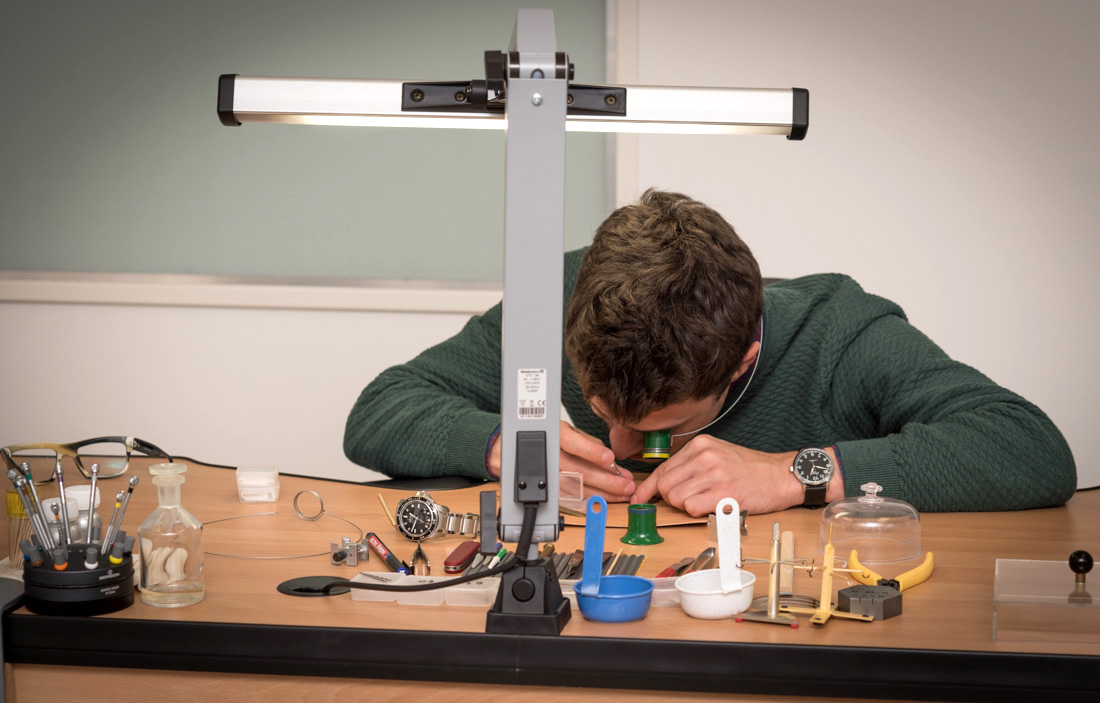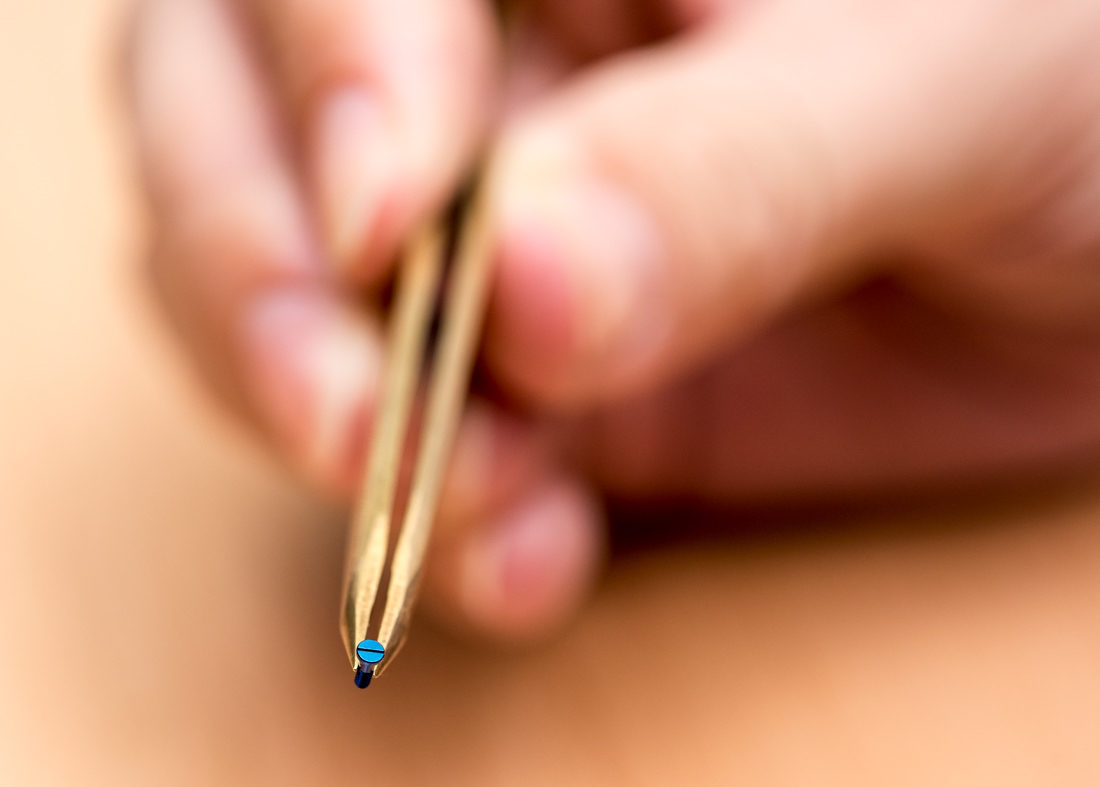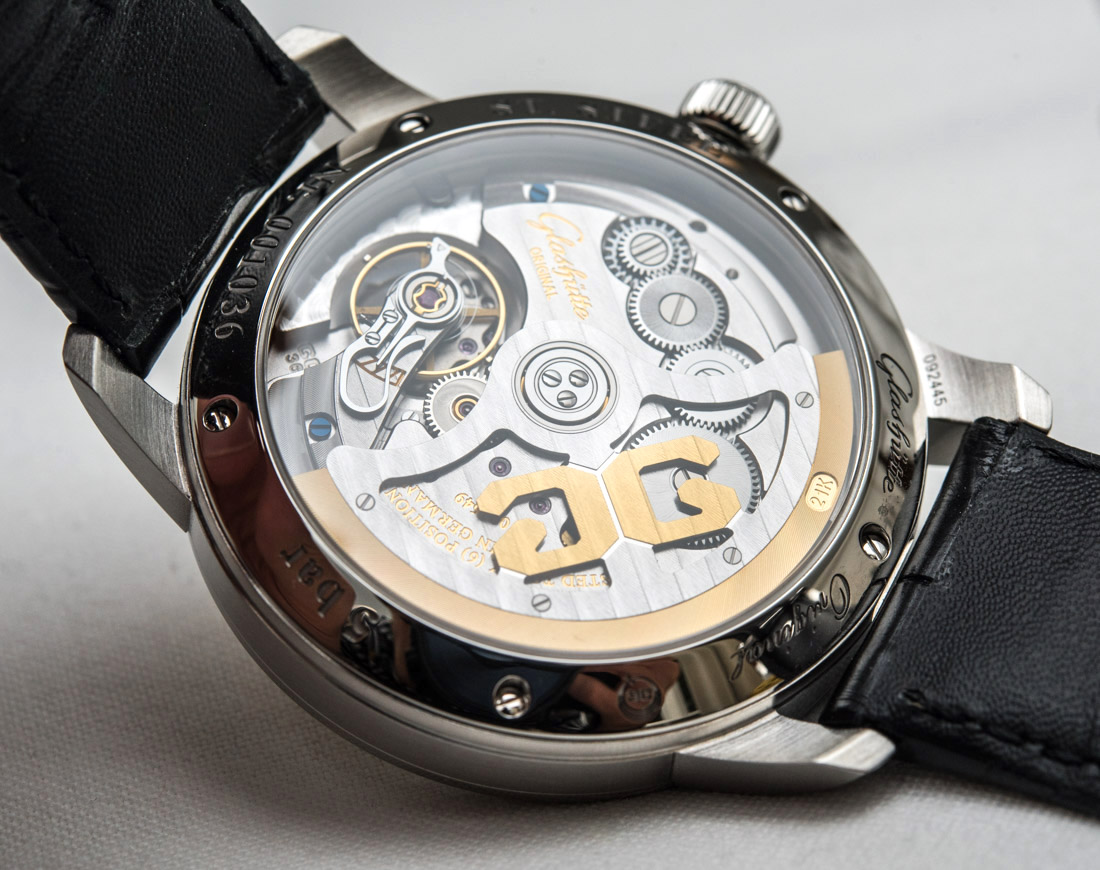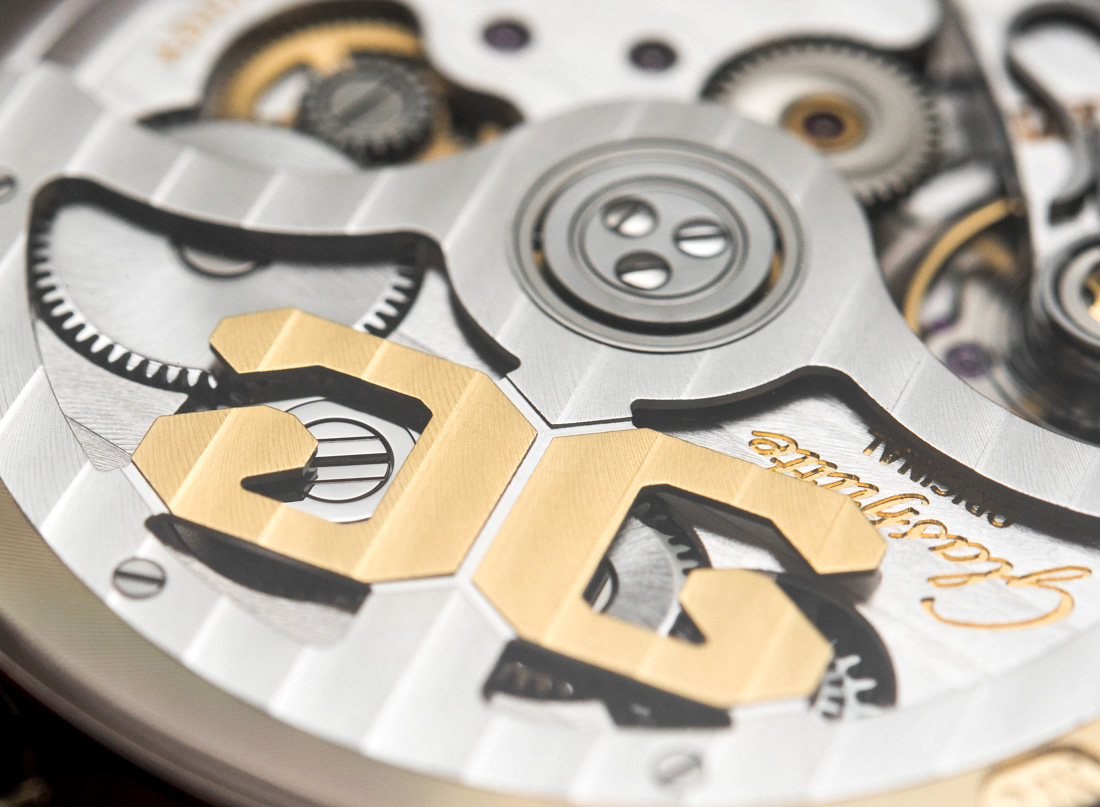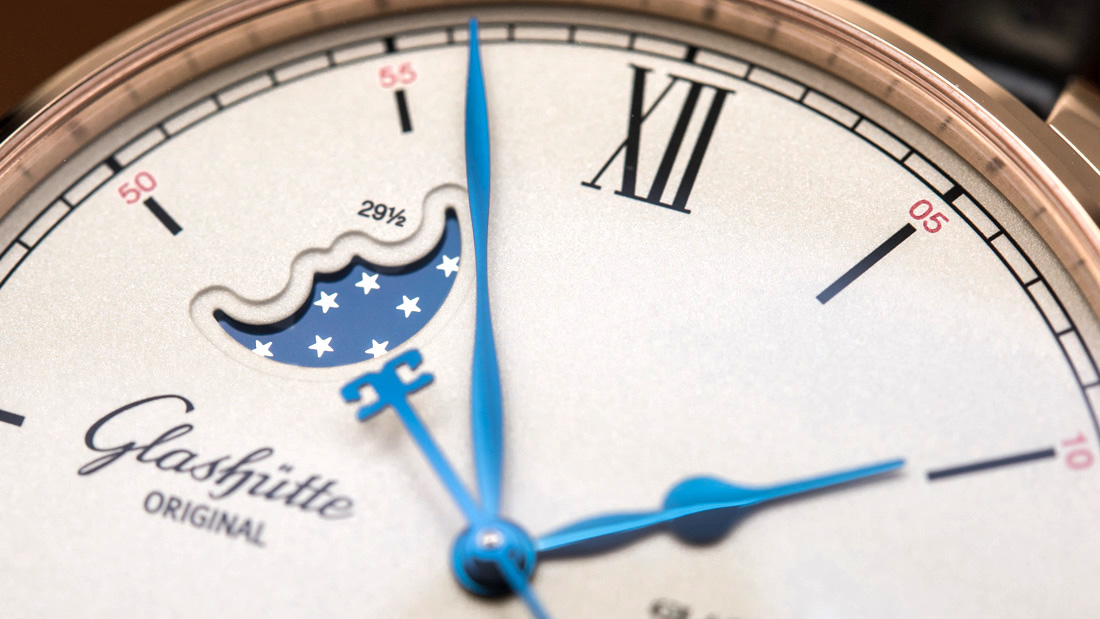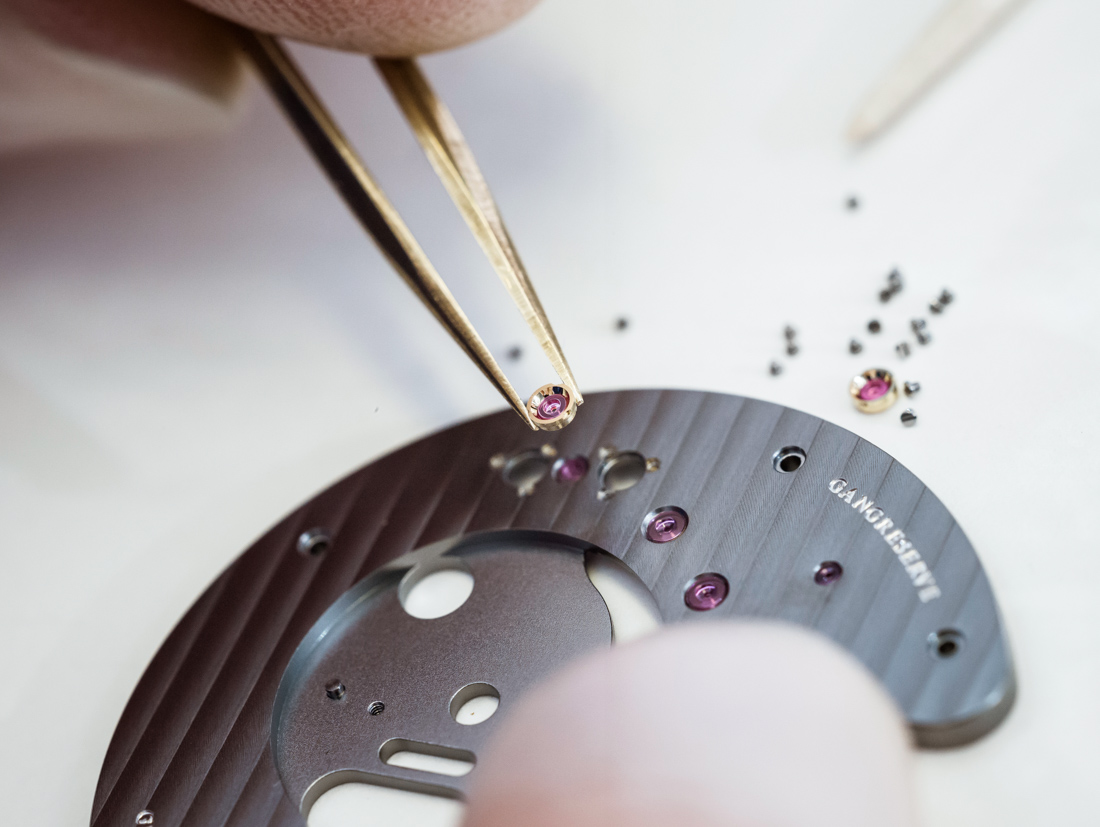
Sub-Group Assembly
With all these delicate parts now done and the plates now decorated and surface-treated, the time has come to start fitting them together. While it may sound like a neat idea to entertain, watchmaking (as in watch assembly, in this instance) involves so many highly complex tasks that these have to be broken up into separate groups to ensure both efficiency and high quality in execution.
As such, sub-group assembly means the assembly of the balance wheel, the rotor, the final cleaning of parts, mounting of jewels and pins, and the testing of subgroups of rotational and horizontal run-outs. All this tech-talk means that the watch at this point very much starts to take shape, it is just that these sub-groups have to work flawlessly before final assembly happens.
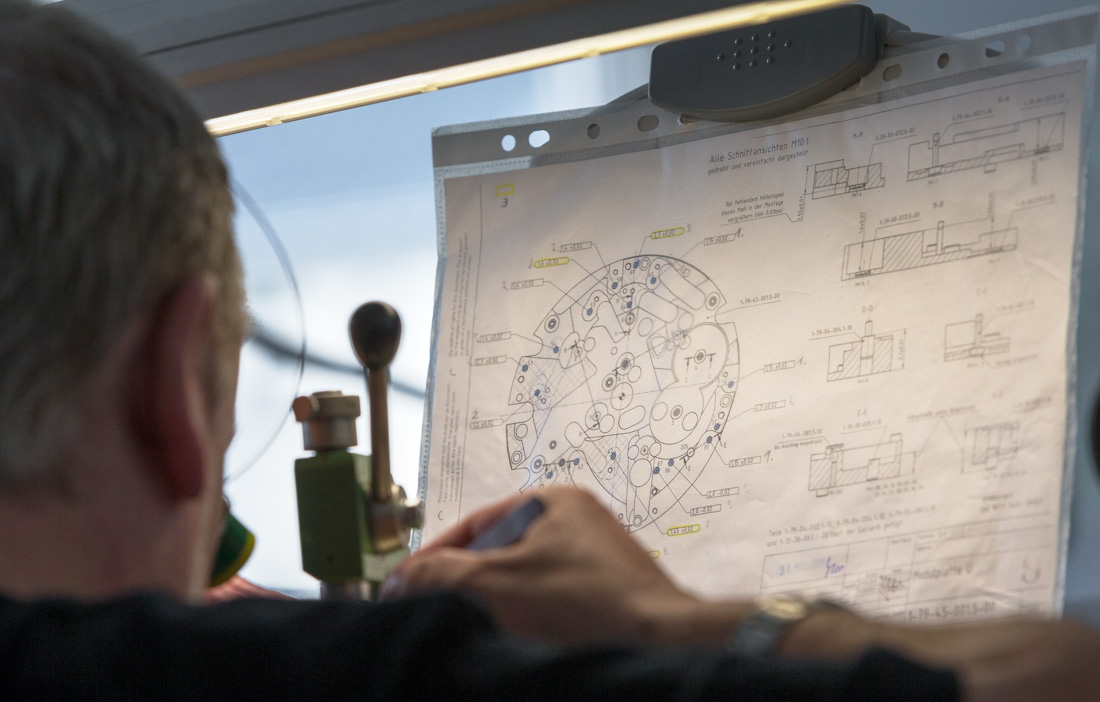
Despite the countless quality-control checkpoints that parts are subjected to as they proceed through the myriads of milling and decorating steps, before they can move on to final assembly, the hundreds of connection points between these parts must be absolutely flawless in their execution and functionality. Just one incorrectly manufactured or fitted jewel inside the movement could cause major setbacks if it is only noticed halfway through the final assembly process. It is also here that some final aesthetic enhancements can happen, should the fine-tuning of a component be required.
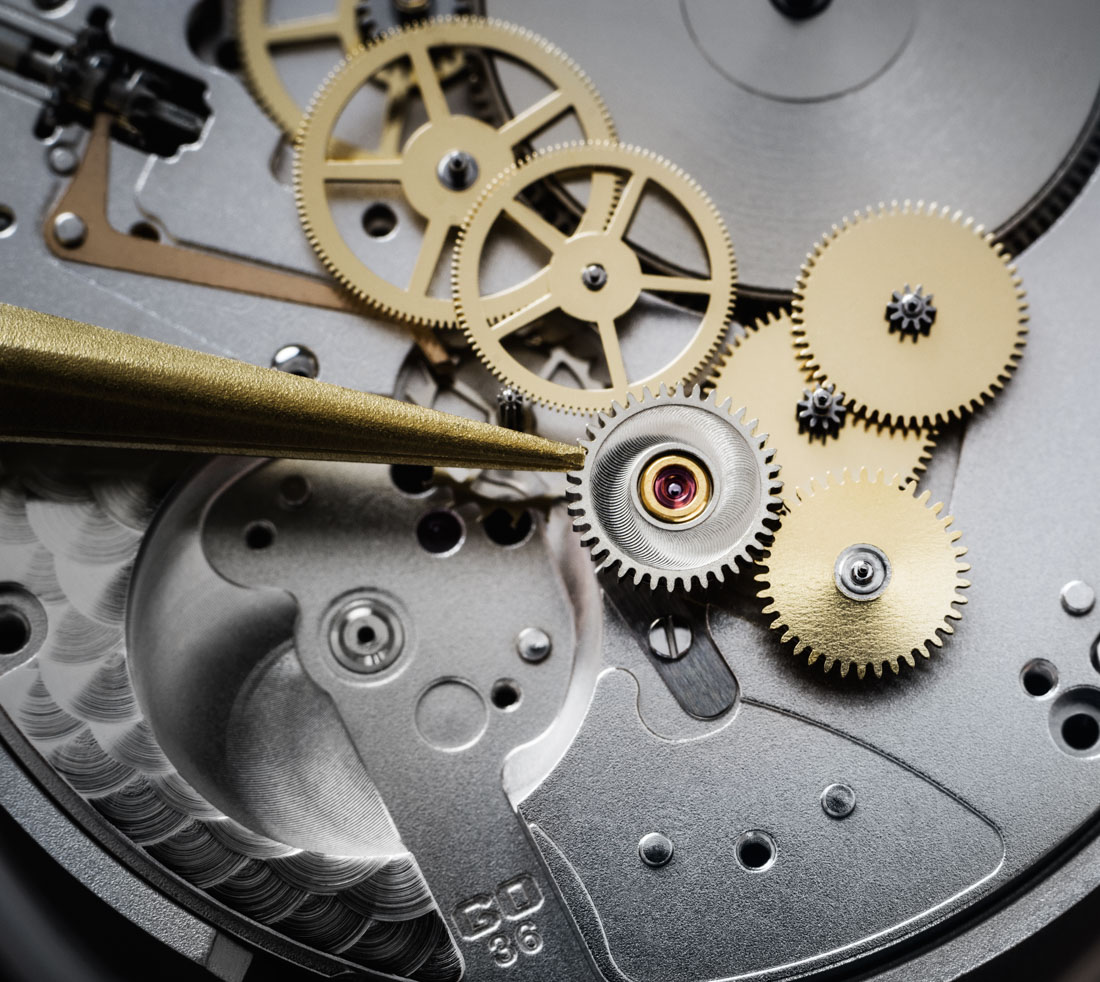
Final Assembly
Now that we are familiar with the important role of sub-group assembly, it may sound as though final assembly is as easy as playing with a basic set of LEGOs – but that, as you probably already know, is very far from reality, of course. At this stage and in this department, the assembly, regulation, and testing of all watches apart from the limited editions and those with particularly complex complications takes place – said rarities are reserved for the Atelier.
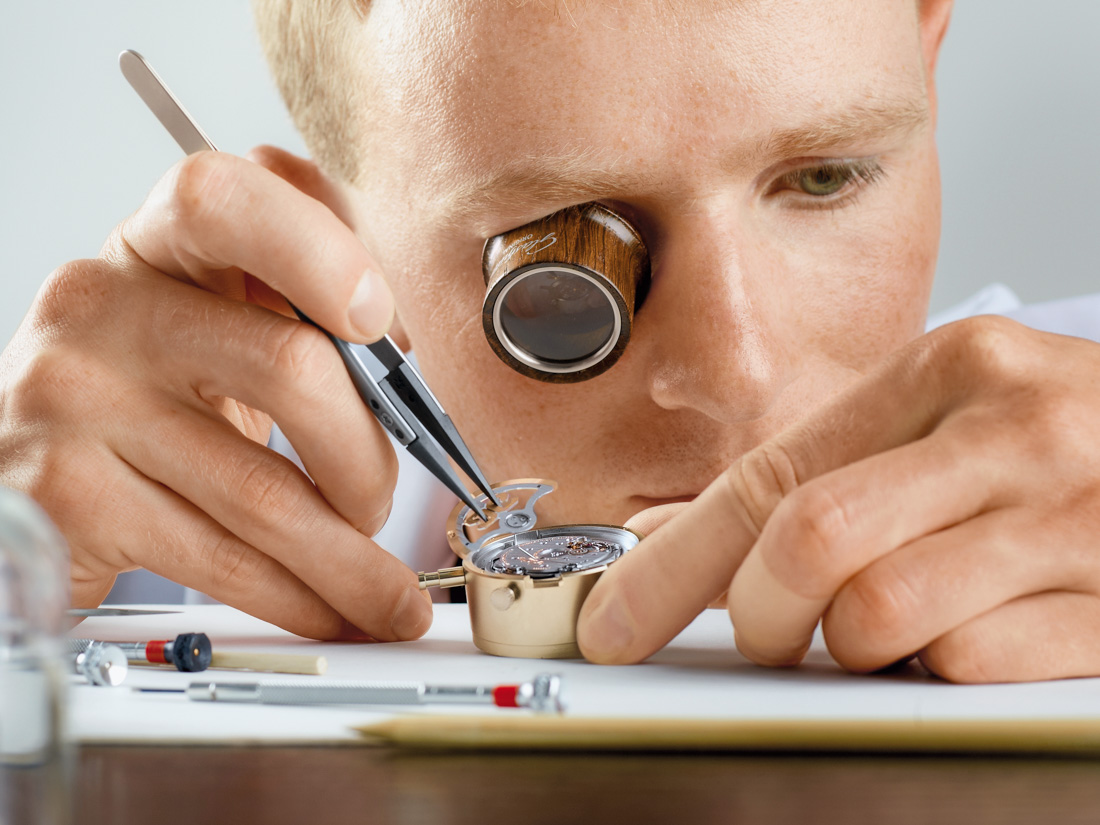
Even after sub-group assembly, in the case of the more complicated movements, still hundreds of components remain to be assembled and fitted into the movement. Assembly time for these can take up to 46 hours, which is an exceedingly long period considering that no finishing or other processes beyond assembly happen at this time.
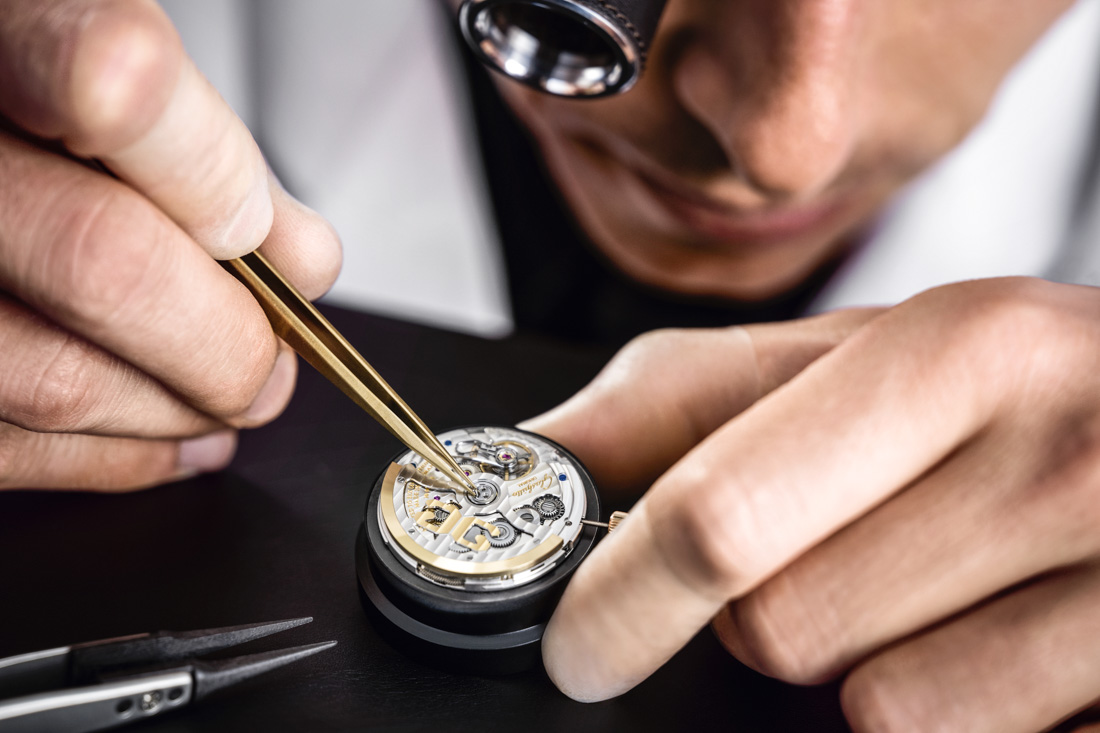
It is also here where we should note that while at most other manufactures a watch with the complexity of a perpetual calendar would be assembled at the Atelier (the high-complications workshop that we’ll discuss below), at Glashütte Original this is done at the regular assembly department – this really shows the high standards of the Saxon manufacture when it comes to watchmakers staff, their training, and their level of expertise. Through the tall glass window, one can see more than sixty watchmakers at work in this department, among them many who are graduates of Glashütte Original’s watchmaking school (again, details below in a bit).

Rigorous 24-Day In-House Testing
Once assembly is complete, an intense and in-depth testing procedure follows. Glashütte Original has very recently updated its strict in-house testing procedures with the Caliber 36 in the Senator Excellence collection (hands-on here). All the watches subjected to this uniquely in-depth and trying in-house test bear a special engraving on the case-back and also come with their individual examination certificate. Both the engraving, a permanent part of the timepiece, and the certification, a written testament from Glashütte Original, are to guarantee that the watch has met the highest standards in terms of running time, stability, precision, and aesthetics, and that it has been thoroughly examined over the course of this long-term, 24-day test.
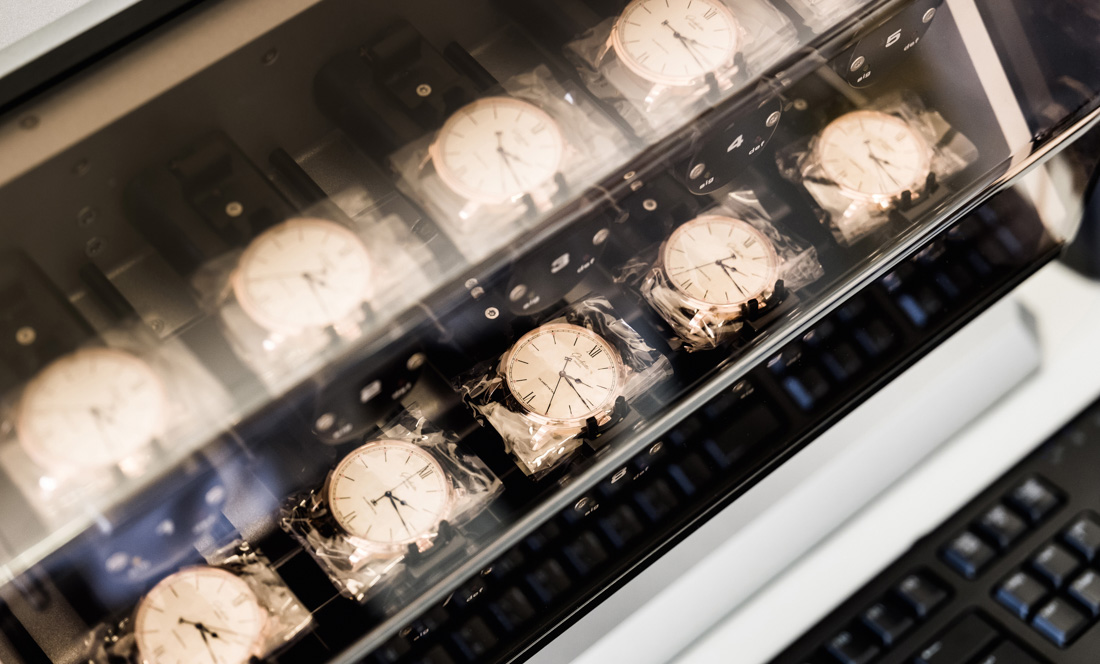
The breakdown of the tests is as follows: on Day 1, once a Glashütte Original Senator Excellence has been completed, the setting of the watch and a 24-hour-long position test begins. The watch’s indications are matched to a highly accurate reference time and the watch is placed on a device used to simulate the conditions under which the watch is worn. After a day, the deviation must remain within the range of certified chronometers – that is, between -4 and +6 seconds.
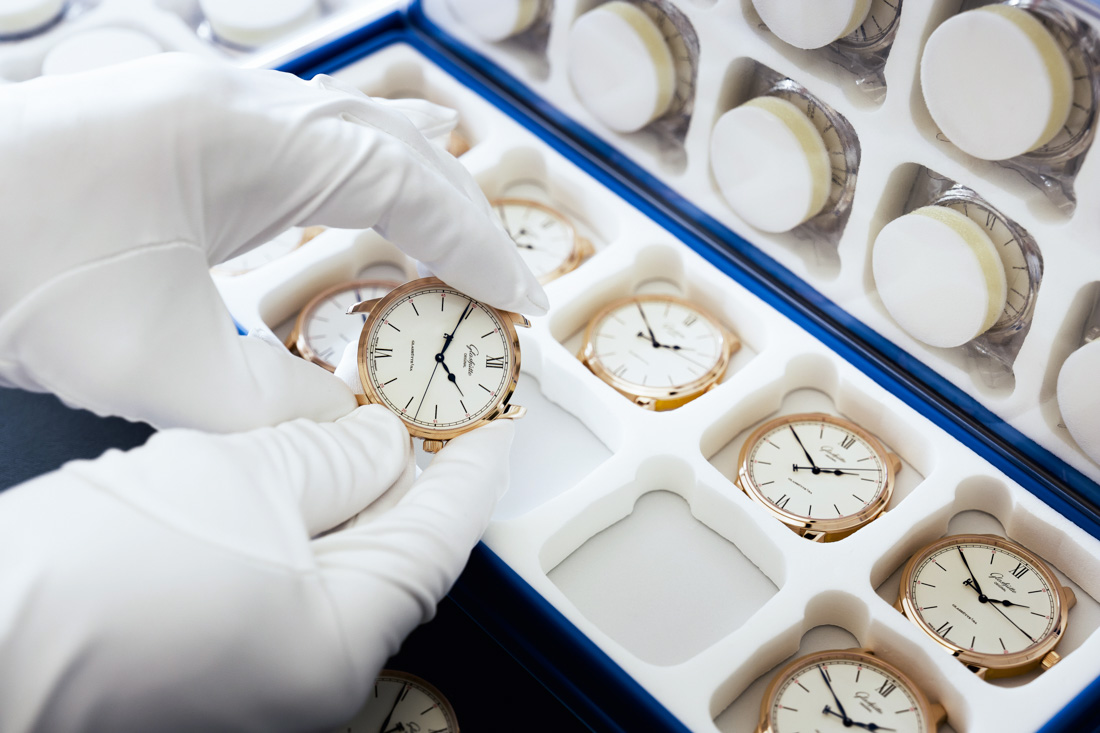
Between Day 2 and Day 13, rate testing and adjustment in six positions happens. Five key control values at this stage are: first, the average daily rate – an average of all deviations – will have to remain within the range of -4 to +6 seconds per day. Second, the average of the absolute value of rate deviation registers the deviations within the positions and the total may not exceed 2 seconds per day. Third, the absolute value of rate deviation ensures that the greatest absolute rate deviation in each of the six positions does not exceed 5 seconds. Fourth, the rate difference in horizontal and vertical positions of the watch analyzes its precision in these positions, with a tolerance of -6 to +8 seconds. Last, the maximum rate spread determines the greatest deviation from the average daily rate, which may not exceed 10 seconds per day.
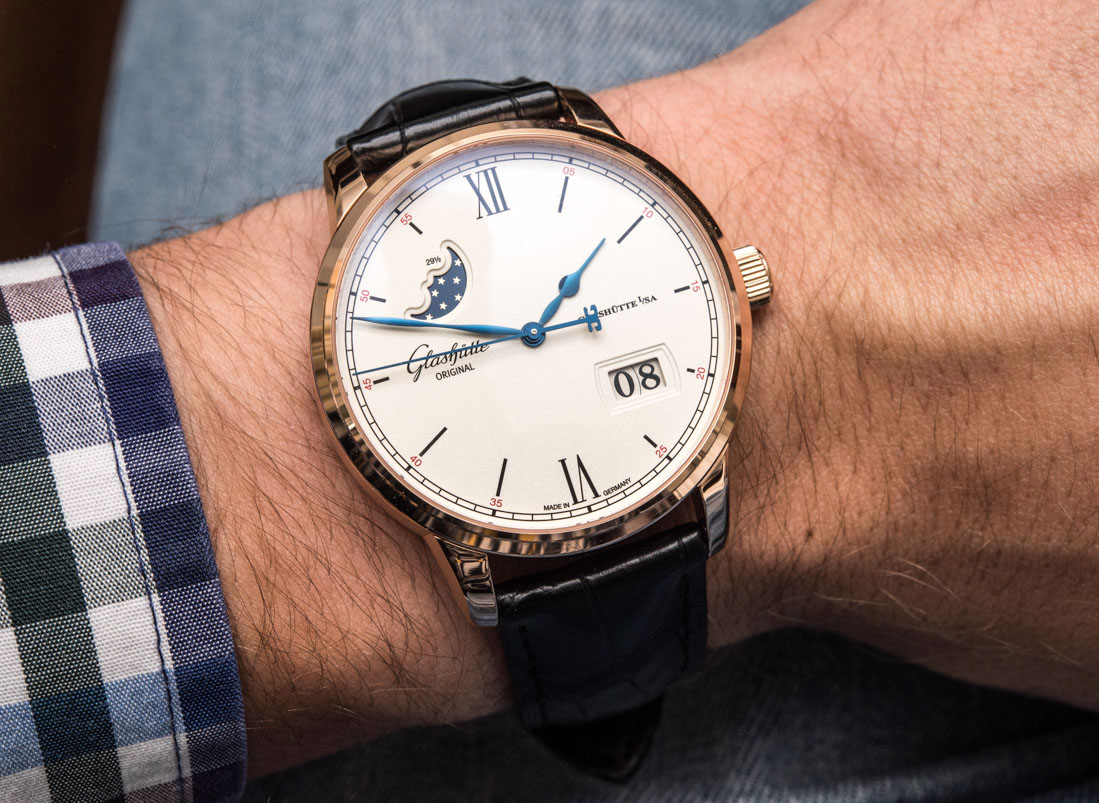
Between Days 17 and 22 testing of rate stability and of the claimed running time of 100 hours is performed. Rate stability means that rate results from Day 1 and 2 are compared to the rate deviation on Day 16: the relevant permissible tolerance ranges from -5 to +5 seconds per day. In the total running time test, the measurement values for rate deviation and amplitude at 0, 24, 48, and 72 hours are recorded using a timing machine and the rate deviation may not exceed -4 to +6 seconds, or +8 seconds after 72 hours. In addition, sufficient amplitude must be assured each day, meaning at least 270°, 250°, 230°, and 200°, respectively.
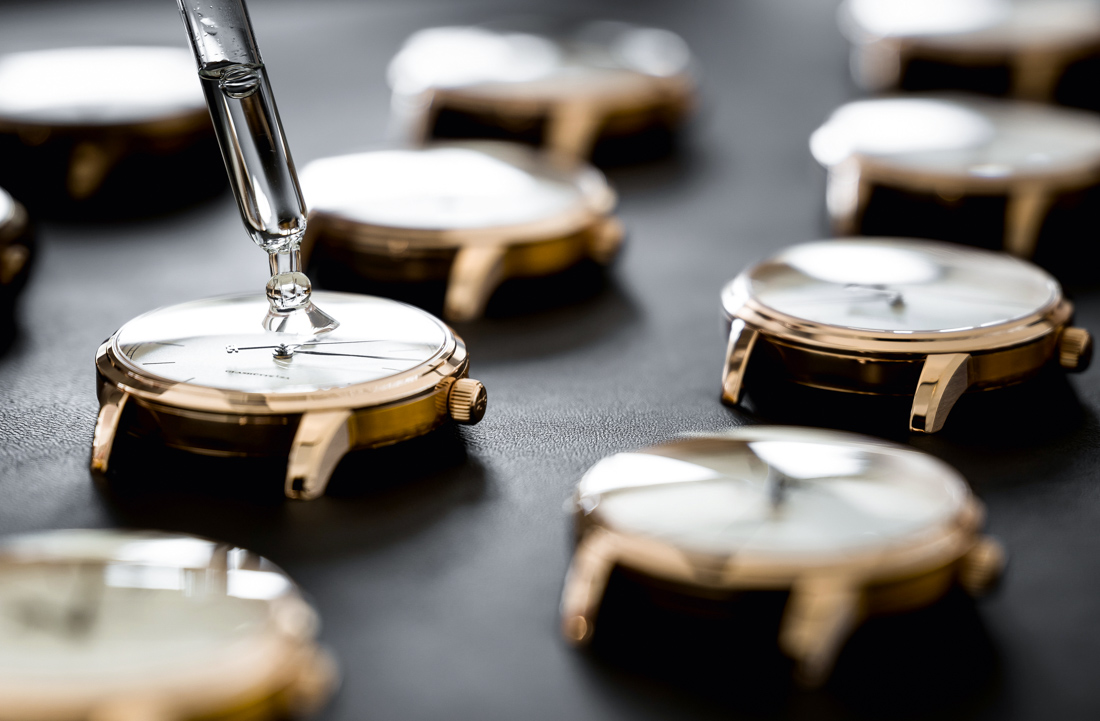
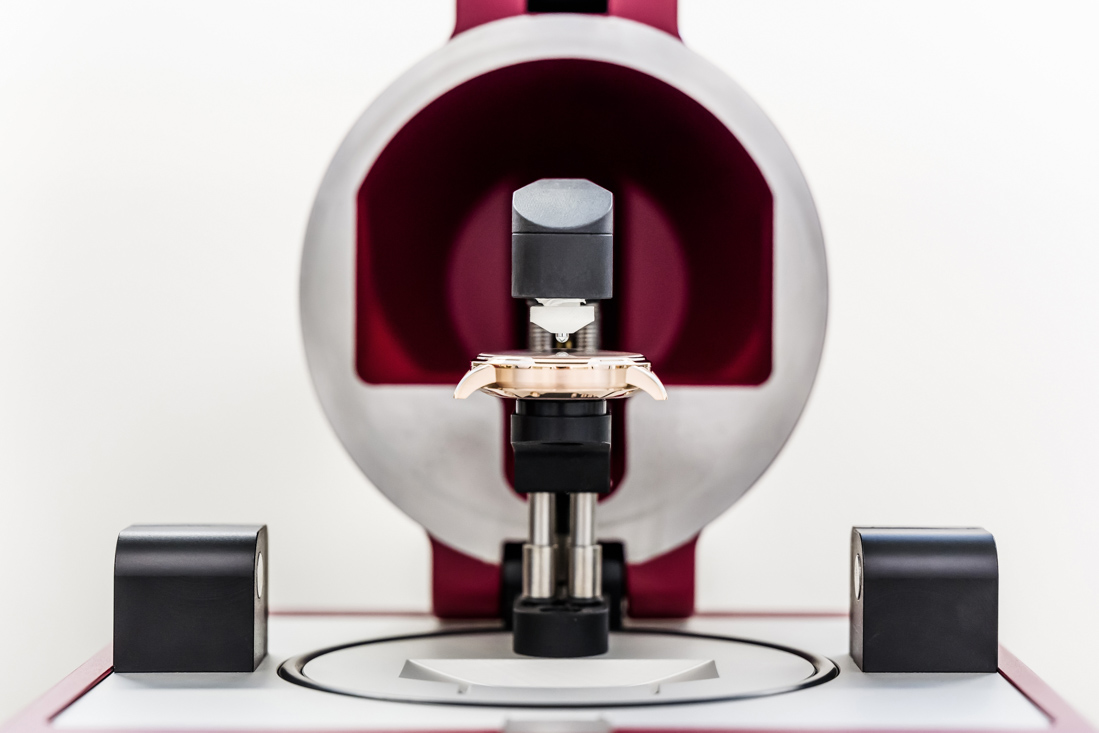
On Day 23-24, water resistance, visual, and functional tests are performed. With the assistance of high- and low-pressure testing, water resistance of up to 5 bar – that is the equivalent of a depth of 50 meters – is assured. A number of randomly selected models are heated on a hotplate at around 40° to 45° Celsius and then a drop of cool water is placed on the front crystal. If there is any moisture in the watch, at this point condensation will form on the inside surface of the crystal. A comprehensive visual examination of the watch surfaces is performed, along with a test to ensure that the manual winding and crown functions are working properly.
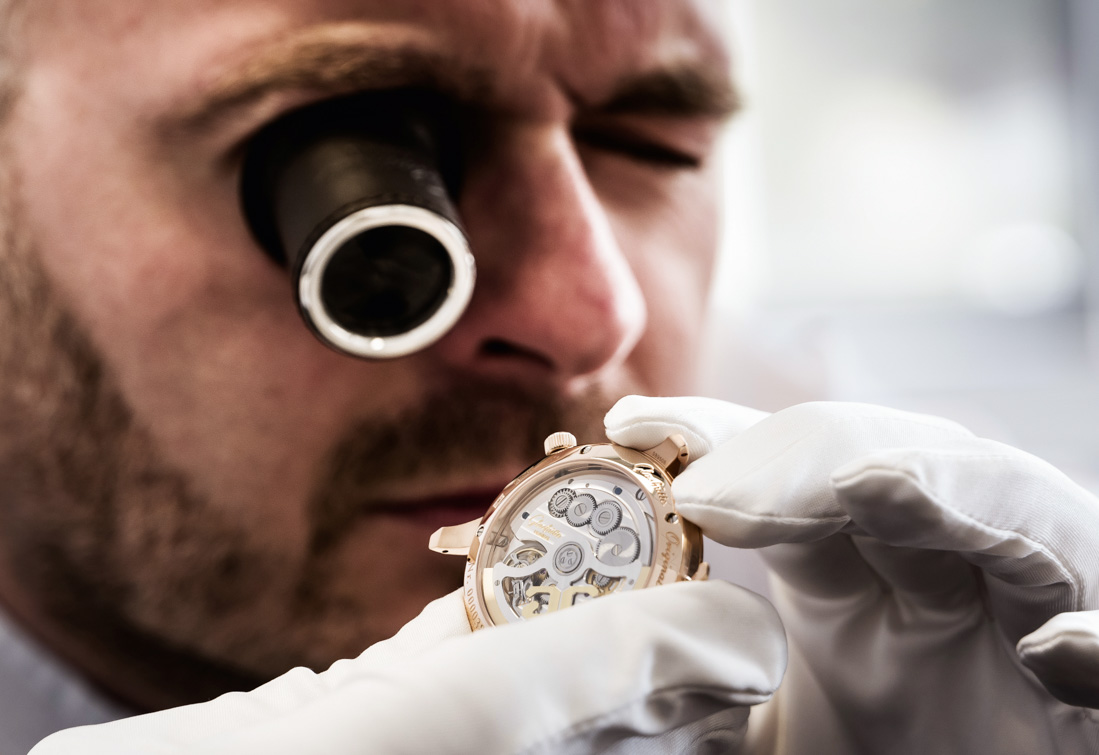
Only after all these tests that spanned over three weeks can the watch receive the seal of approval in the form of a “Q” on the case-back – a stylized representation of the promise of quality from Glashütte Original. The inner circle of the letter stands for the high standards of German chronometer certification while the outer rings represent the different test criteria in which the Senator Excellence exceeds these requirements – test in six positions, performance in a position-test device, the rate performance after 24/48/72 hours, total running time, water resistance, and visual and functional examinations.
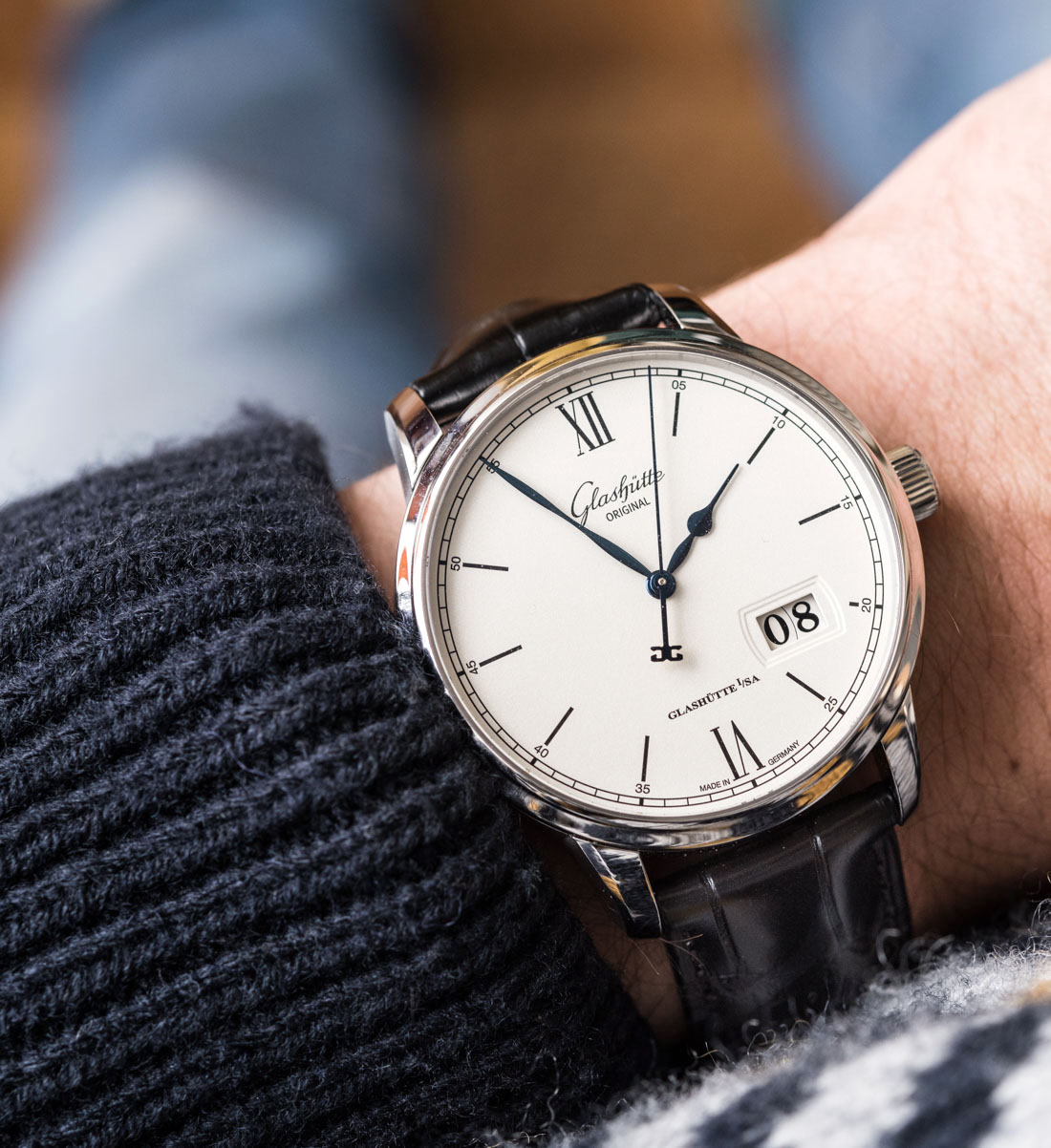
The results of the test are provided exclusively to the owner of a Senator Excellence. The most important data and results are recorded on an individual examination certificate, which is provided with every Senator Excellence and, in addition, the owner is assigned a personal access and QR code providing exclusive access to the Calibre 36 secure online portal, where all information regarding the performance of the owner’s watch is set out in detail.
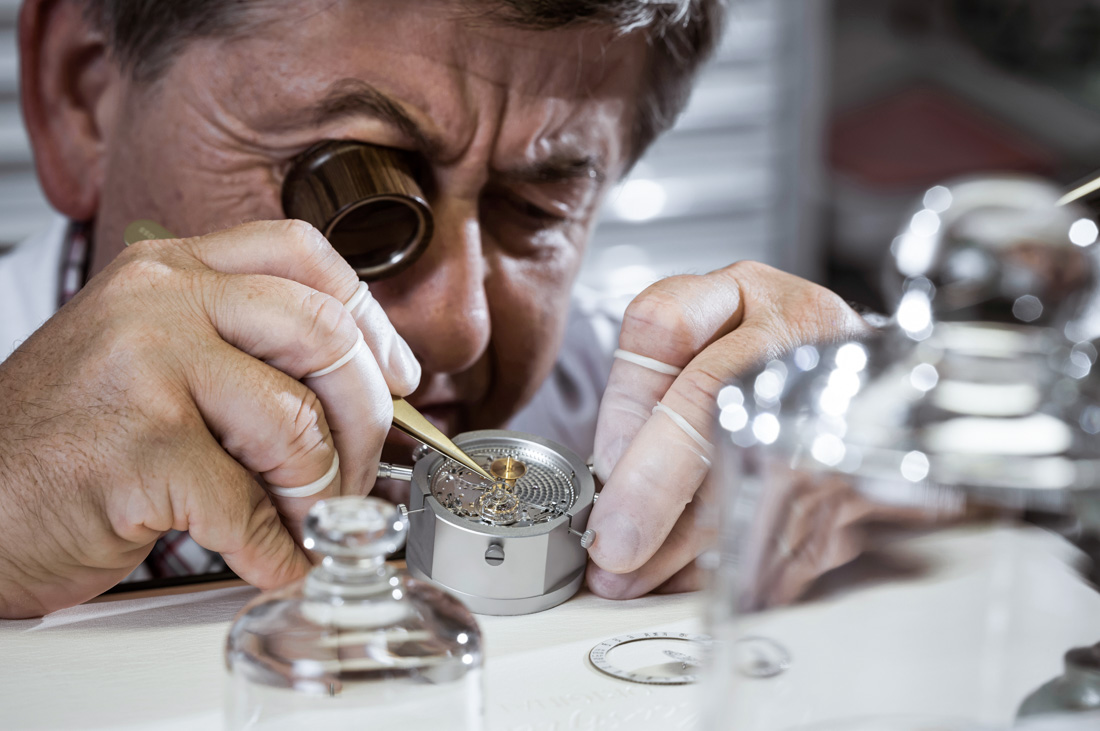
The High-Complications Atelier
In this relatively compact, but airy and bright department, the assembly of all watches fitted with highly complex complications such as the flying tourbillon, a diary function (such as in the Senator Diary), or the 37-time-zone Senator Cosmopolite is performed. The assembly of such highly complicated watches which may comprise more than 450 pieces may take up to 6 weeks and is performed by the same one watchmaker throughout the process.
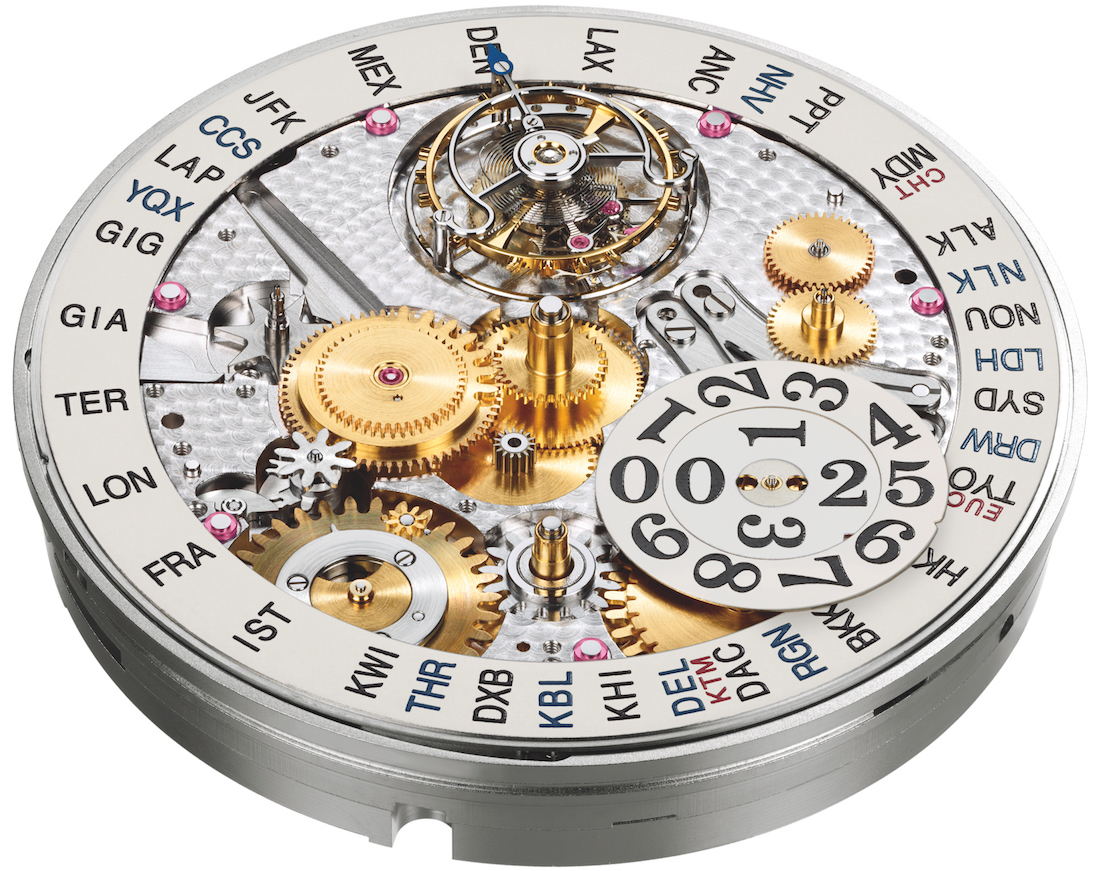
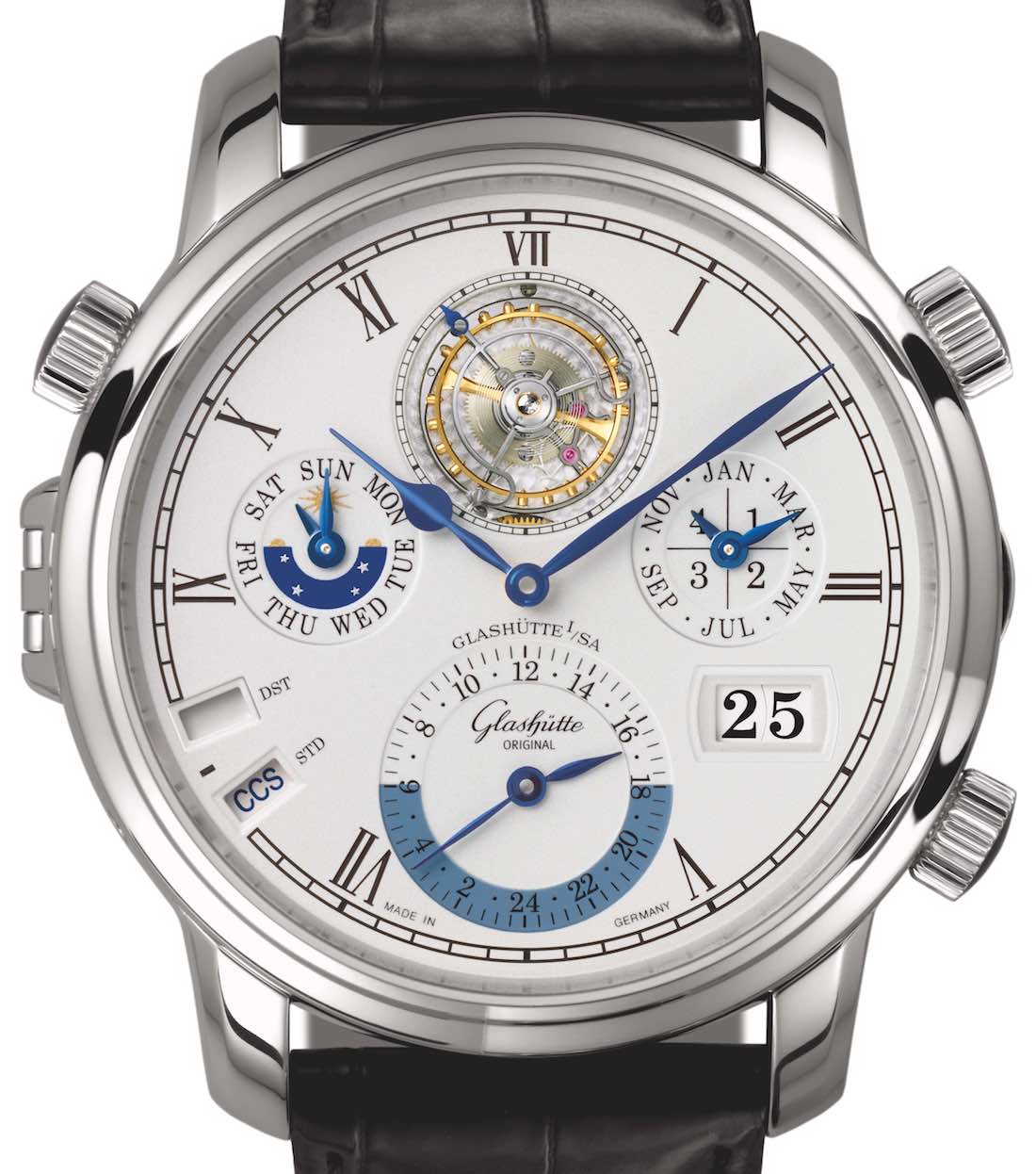
The most complicated watch ever made by Glashütte Original, the Grande Cosmopolite Tourbillon and its Caliber 89-01.
The most complicated timepiece Glashütte Original has produced to date is the Grande Cosmopolite Tourbillon: with well over 500 components, 70 jewels, and two diamond end-stones, this 25-piece limited edition can display time in 37 time zones, correct for daylight savings time, features a forward and backward adjustable perpetual calendar, and a flying tourbillon– a truly traditional Saxon watch complication invented by Alfred Helwig, the namesake of Glashütte Original’s watchmaking school that we’ll look at in a moment.
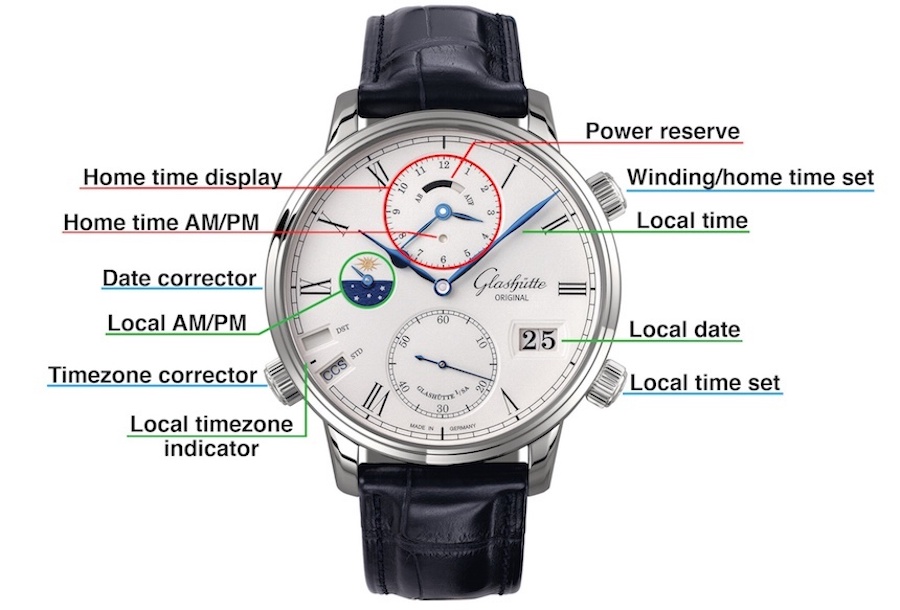
With over 400 parts responsible for a uniquely streamlined, yet complex indication of time, the Senator Cosmopolite is assembled in the Atelier.
One of the most recent examples is the Senator Cosmopolite (hands-on here), designed to be the everyday version of the Grande Cosmopolite Tourbillon. This watch perfectly presents Glashütte Original’s dedication to clarity and functionality, a very innovative time zone watch that is thus highly complicated on the inside, yet clean and readable on the outside. Because of its complex movement and the way most indications are linked to one another, it takes the most experienced watchmakers with the best eye for detail and mind for solving complex issues (which the assembling of such a caliber can and usually does create). This explains why the Senator Cosmopolite is assembled in the Atelier.
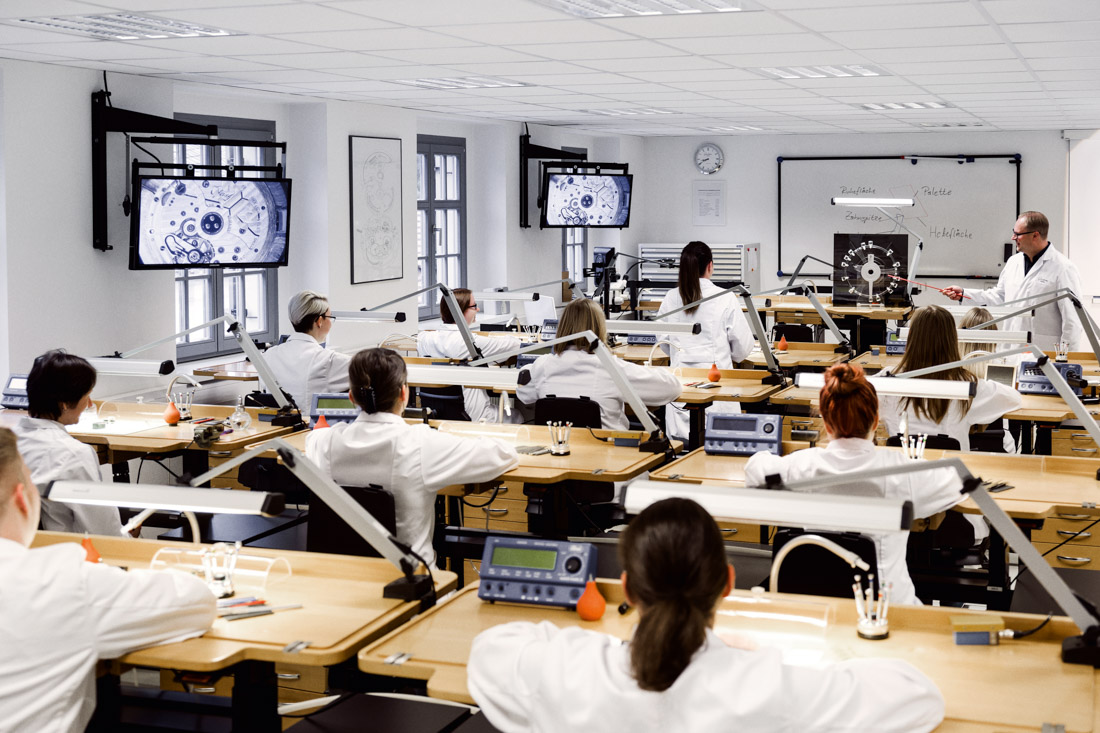
Glashütte Original’s Alfred Helwig School Of Watchmaking
Last, but definitely not least, our virtual tour of the Glashütte Original manufacture could not be complete without mentioning Glashütte Original’s Alfred Helwig School Of Watchmaking. Every year since 2002, future watchmakers and toolmakers take up their challenging course of studies, and in doing so they connect the past with their future. The building in the heart of the town once housed the German Watchmaking School Glashütte founded in 1878. It is also the building of the German Watch Museum.
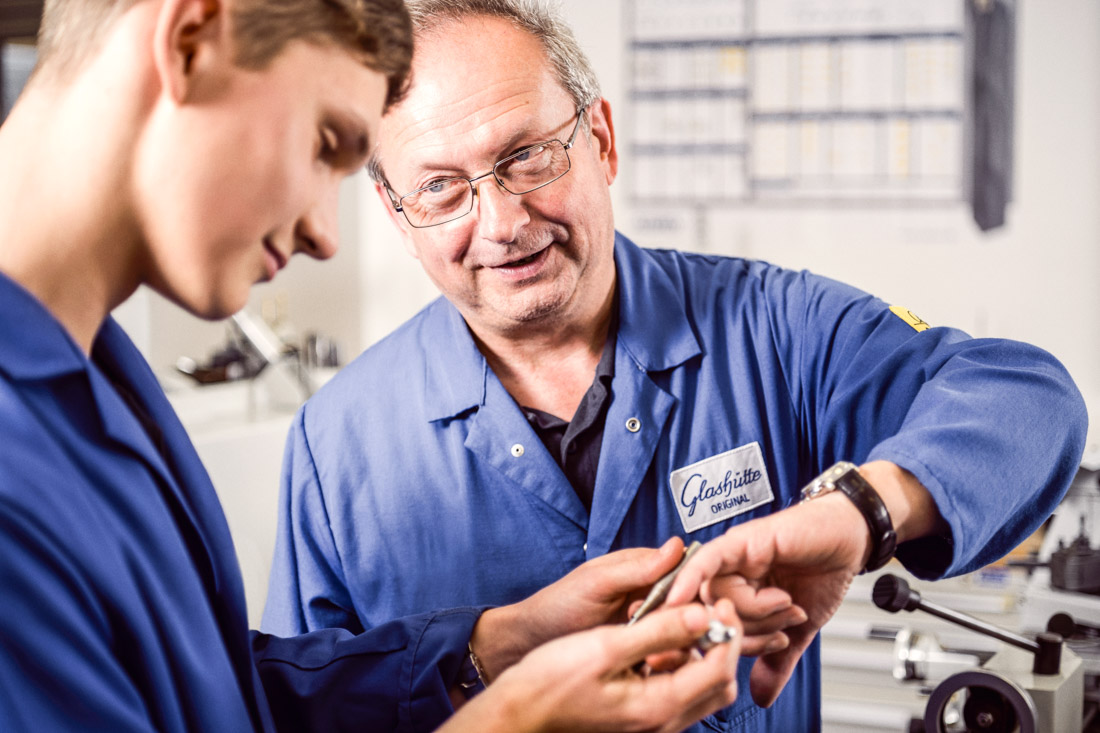
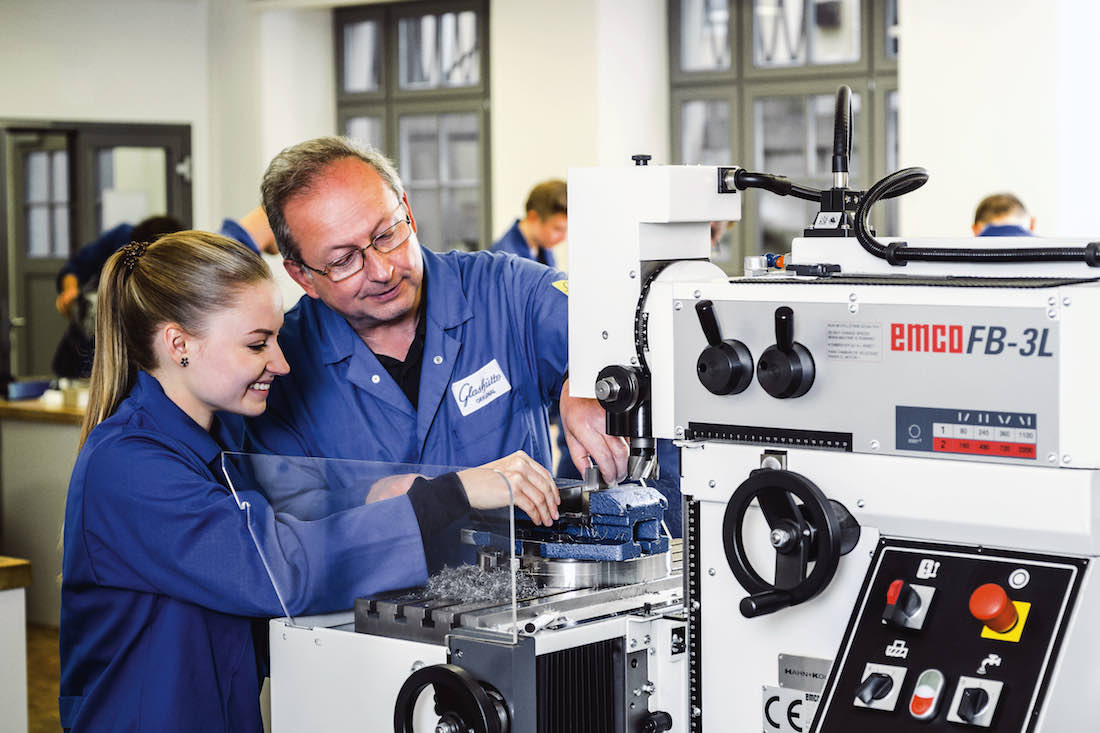
Glashütte Original has always felt an inherent responsibility to pass on its specialized knowledge, which explains why its watchmaking school is known to be one of the best training schools in the industry. Each year, twenty-four budding watchmakers and four toolmakers start their training. With a well-balanced mix of theory and practical experience, trainers ensure that students learn to produce even the smallest manufactured components, comprehend mechanical correlations, and understand the effort, precision, and value that Glashütte Original invests in even the smallest of details. Traditional hand movements go hand in hand with modern technology so that, for example, video presentation technology can be used to display on large monitors all the work steps taken by the instructor under an electronic microscope so that students can follow along.
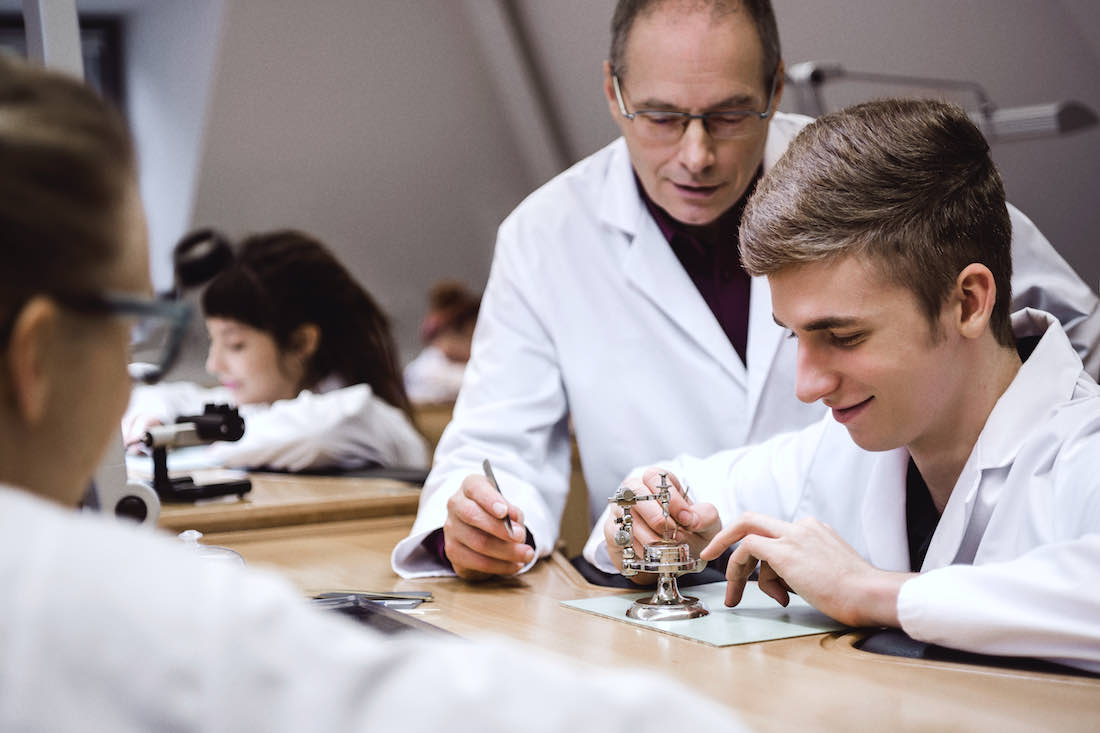
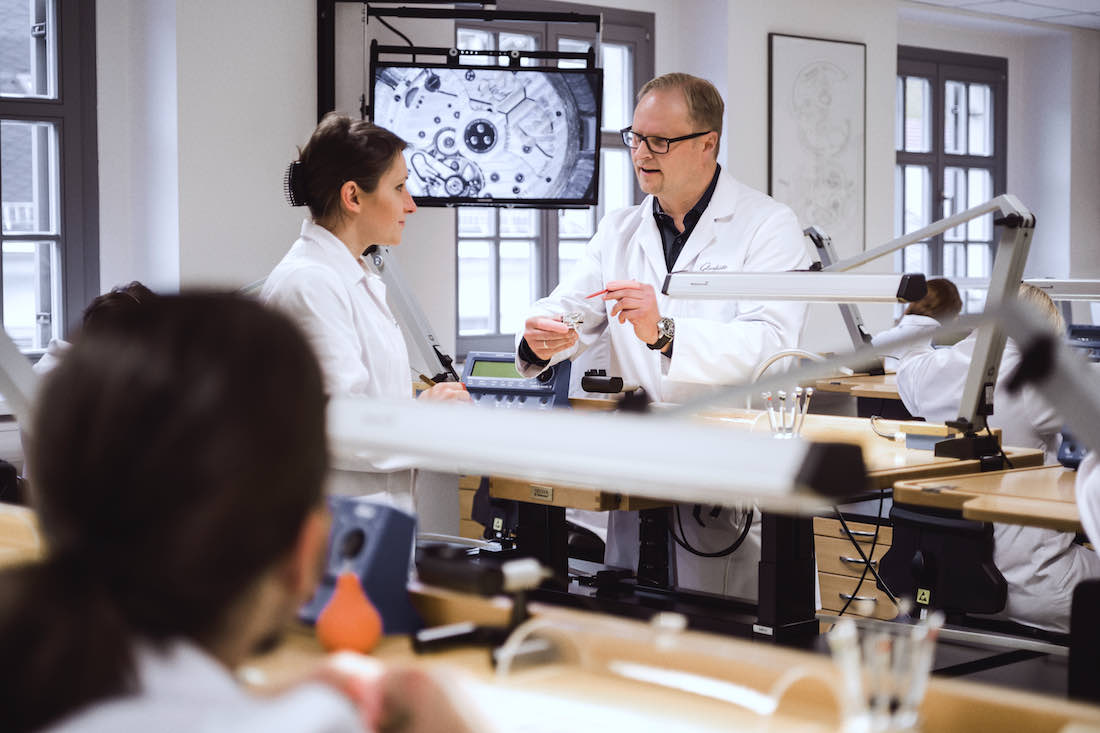
The watchmaking school is a member of the Swatch Group’s international network of Nicolas G. Hayek Watchmaking Schools and offers its students, through a partnership with Switzerland’s WOSTEP (Watchmakers of Switzerland Training and Educational Program), the opportunity to complement their German diploma with a Swiss certification. These young people have chosen a profession with a future – and international prospects. Today, state-of-the-art facilities and traditional watchmaking expertise come together in well-lit classrooms as the next generation of watchmakers and toolmakers learn this trade with the everlasting assistance of Glashütte Original.
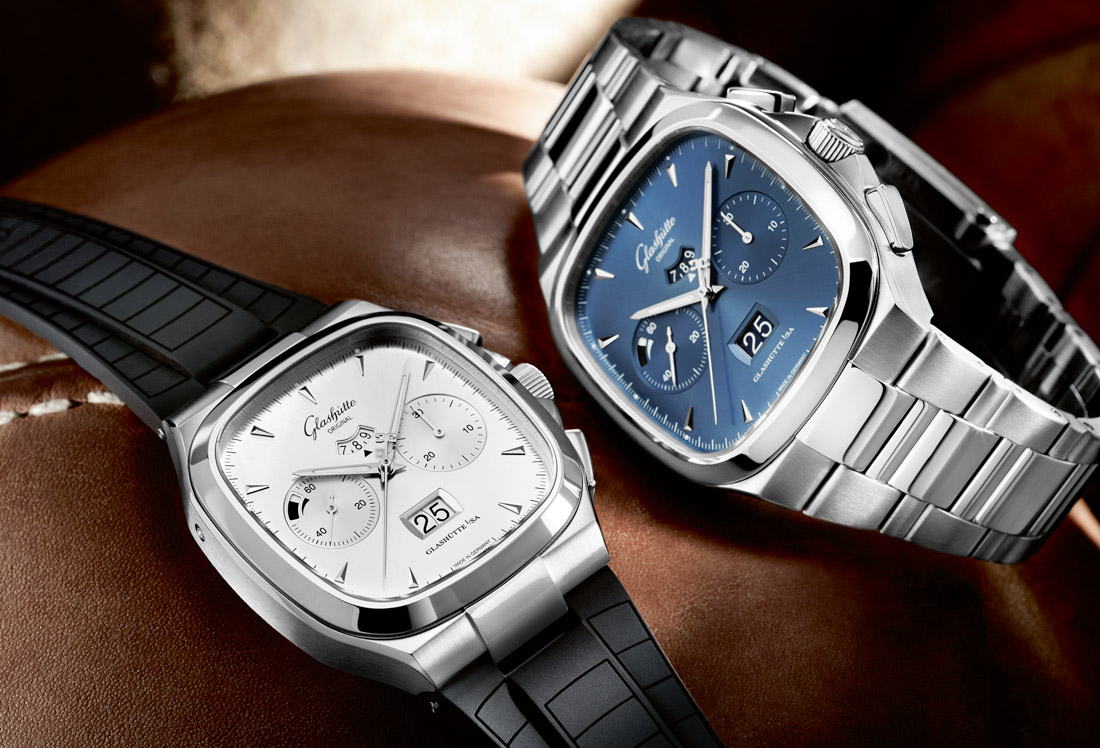
In Summary
From in-house-performed design and development through the training of the next generation of excellent watchmakers and the manufacturing of the very tools that will produce the Glashütte Originals of tomorrow, all the way to the proper, traditional watch movement decorating techniques, there are few other places with as high a concentration of pure horology as witnessed at the Glashütte Original manufacture.
A tireless dedication to highly functional, timelessly elegant, yet unique-looking timepieces and to their flawless execution and high performance, Glashütte Original aims to write the next chapter in the long-standing history of Saxon watchmaking. glashuette-original.com

